- Skip to primary navigation
- Skip to main content
- Skip to primary sidebar
- Skip to footer

Loire Lovers
To awaken your senses in the Loire Valley - Claire & Manu's Blog

Château de Tours (visit + photos)
by Clara BALAYER , Region Lovers | March 12, 2024 | no intrusive ads, no sponsored content, just some affiliate links - if you use them, we get a small commission (read more)
Visiting Tours? Don't miss a visit to its unique castle !
The Château de Tours is worth a visit for its elegant allure , but above all for its top-notch contemporary photography exhibitions !
Here are some useful tips for planning your visit to the Château in Tours.
BEFORE ALL OUR TIPS , OUR favorites

Our favorite car rental platform: DiscoverCars

Our must-see tours: Château de Chenonceau - book your ticket Château d'Angers and its tapestry - book your ticket

Our unforgettable outdoor activity: Hot-air ballooning in the Loire Valley

Our favorite places to stay: Saumur - see the best rated accommodations Amboise - see the best rated accommodations In a castle - see our article Nantes - see the best rated accommodations
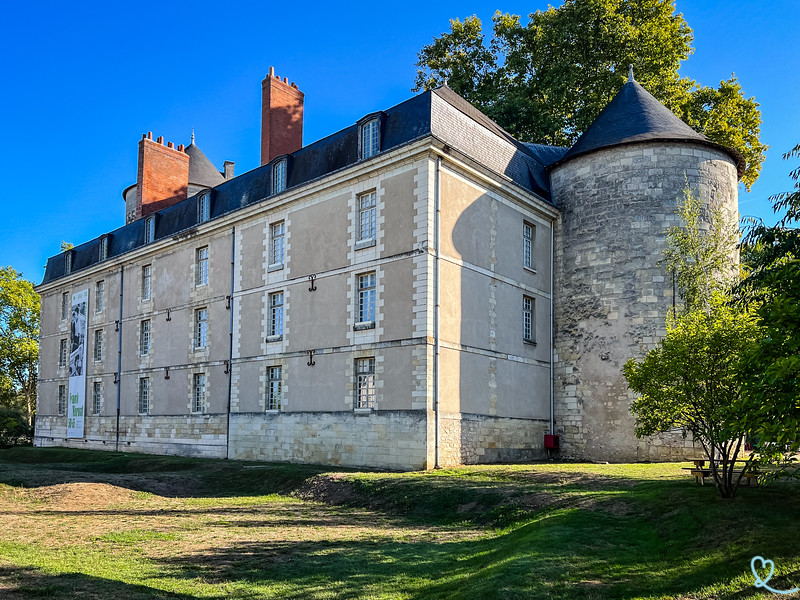
This guide is completely independent , based on our experiences. We visited the region anonymously, making our own choices and paying our bills in full.
Is a visit to the Tours Castle worthwhile?
Yes, the Château de Tours is one of the city's must-sees (article to come). In the astonishing setting of an ancient medieval castle, you can discover rich and varied exhibitions of contemporary art . You'll have the pleasure of discovering world-renowned photographic works thanks to a partnership with Paris's famous Jeu de Paume museum. Last but not least, the château is located near the banks of the Loire, making it the perfect starting point for a pleasant stroll ! As you'll have gathered, the Château de Tours is truly original, and quite different from the more conventional Loire Valley castles. To find out more, take a look at our article on the most beautiful castles around Tours !

What you can see
The ancient fortress.
Although its foundations date back to Antiquity, it was only in the Middle Ages that Château de Tours became a true fortress, before becoming a royal castle in the 13th century. Take time to look around the building and appreciate its scale. If you want to see an original fortress, we recommend you book your ticket for the royal fortress of Chinon (only 45min drive from Tours).

The Tower of Guise
Once you're back in front of the entrance to the building, look up at the proud Tour de Guise, towering 25m above you. Built during the reign of Philip III, between 1270 and 1280, you'll appreciate its thick ashlar walls, slate roof and machicolations, typical of a defensive tower.
Did you know? Although the tower was built in the 13th century, it owes its current name to Duke Charles I de Guise, who escaped from it in the 16th century.

Le logis de Mars
This elegant pavilion was built in the first quarter of the 19th century to link the two medieval towers and house a barracks. Indeed, Tours became a military region under the reign of Napoleon III, and a place was needed to house the Honor Guards. This dwelling is now the main exhibition space, spread over 4 levels. Something to brighten up your eyes!

Jeu de Paume photography exhibitions
Now that you've got a grasp of the building's history, let yourself be carried away by the exhibitions it features! The first 2 levels (ground floor and 1st floor) are dedicated to exhibitions by the Jeu de Paume, the prestigious photography museum in Paris, in partnership with Château de Tours since 2010. You'll have the chance to see some of the most renowned names in contemporary photography. We really appreciated the fact that the display was sober, allowing the works to express themselves fully, and that day we discovered the work of French photographer Franck Horvat. To find out more about the exhibitions, visit the Jeu de Paume website here .

Other contemporary art exhibitions
In addition to a true immersion in contemporary photography, you will also be seduced by the other two exhibition levels, devoted to independent artists selected by a jury assembled by Château de Tours. To see the current program, visit the château's official website here .

Governors' dwelling
In this building, you'll find a permanent exhibition room dedicated to the history of the city's construction. It is illustrated by a wealth of archaeological material from excavations carried out in Tours.

Tours Castle: access
Where to find château de tours.
- In downtown Tours
- 25 avenue André Malraux
- 3min walk from Cathédrale Saint-Gatien
Access by car and parking
Tours is well served by a number of freeways: the A10 (between Paris and Bordeaux), the A28 (between Rouen and Tours) and the A85 (between Nantes and Bourges).
Paid parking spaces are available on Rue Lavoisier, adjacent to the château, but we recommend the free Bords de Loire parking lot on the same avenue as the château. From here, it's just a 6-minute walk to the castle.

OUR TIPS FOR RENTING A CAR IN Loire
- Compare prices on our preferred platform: DiscoverCars - one of the best rated sites.
- Choose a fairly compact car (many villages have narrowed the road).
- Think about full insurance (parking in big cities is really tight).
- There is a lot of demand, book it early .

Useful tips for visiting the Château de Tours
Schedules and prices.
The Château de Tours is open Tuesday to Sunday from 2pm to 6pm , and prices are as follows:
- Full price: €4.50
- Reduced rate: €2.30
- Free: young people up to age 26
See the latest news on the official website here .
Depending on the scale of the exhibitions, we recommend you allow 1 to 2 hours to visit the entire building and appreciate the works. There's also time for a tour of the educational area and library.
Best moment
As with all cultural centers, late mornings and early afternoons are busier, but note that the venue is reasonably busy all year round.
Direction of visit
There's no set direction for visiting the castle, so you can instinctively rely on what you feel like seeing.
Visiting with children
There are no special arrangements for children. Note that the hook is very high for toddlers. On the other hand, an educational area has been set up on the second floor with books to consult, tables and footstools. We found this space ideal if you want to take a break from the tour and keep your children occupied.

The castle is right in the heart of the city. You'll find a number of restaurants nearby. Discover a selection of the best restaurants in an article coming soon. However, if you're feeling a little hungry, we've spotted a table in front of the castle (pictured below) available for a quick snack. But perhaps the best thing is to take your picnic and enjoy it while admiring the Loire, on the Promenade des Gabarres, just below the château.

After a cultural visit, what could be better than a little gourmet break? We recommend half-day excursions to the vineyards around Tours for a memorable experience! See prices and availability .
Tours has a very pleasant range of hotels, which we were delighted to try out. Here are our recommendations:
WHERE TO STAY IN Tours
In the city center
Enjoy the city, its restaurants and beautiful architecture.
- Hotel Ferdinand - check prices, pictures and availability
- Hôtel du Cygne - check prices, pictures and availability
- Hotel L'Adresse - check prices, pictures and availability

Near the station and around the city center
An early train? Or just a little more peace and quiet? Here are our recommendations:
- Hotel Les Trésorières - 5 stars - check prices, pictures and availability
- Aparthotel Central Parc Tours - check prices, pictures and availability
- Hotel Oceania L'Univers Tours - check prices, pictures and availability

In the countryside around
Looking for a bit of peace and quiet, without straying too far from the city of Tours? Here's our suggestion:
- Hotel Domaine de la Tortinière - 20 min away - check prices, pictures and availability
- Hotel Troglododo - unusual 25min away - check prices, pictures and availability

See our reviews of the best hotels in Tours
PLAN YOUR TRIP IN Loire Valley
The castles of the Loire Valley
- Best châteaux in the Loire Valley
- Sleeping in a castle in the Loire Valley
- Best family castles
- List with over 100 castles

Other places to explore
- Best things to do in the Loire Valley
- Most beautiful towns along the Loire
- Most beautiful villages
- Most beautiful gardens
- Best things to do in Nantes
- Best things to do in Saumur

- Where to stay in the Loire Valley
- See our tips for renting a car in Nantes , Angers , Tours , CDG , Orly or Beauvais ...
- How to get to the Loire Valley - article to come
- Itineraries: 3 days
- Weekends: unusual

HE MADE THE TRIP Manu

SHE WROTE THE ARTICLE Clara
The 10 commitments of region lovers.
- Visit all the places we tell you about.
- For each city, sleep in at least one hotel, visit the ones we recommend.
- For each city, eat in at least one restaurant, visit the ones we select.
- Pay all our bills in full, refuse any partnership or sponsorship.
- Update our articles periodically, with the help of our readers.
- Enrich our articles with our on-site experiences.
- Use 99% of our own photos
- Have a reasoned and transparent use of the AI tool, which we feed with our locally verified information.
- Inform about the traveler/writer pairing that gave birth to the article.
- Tell you what we do, and do what we tell you!
Claire and Manu
Learn more about the team and our history.

SEARCH OUR SITE
Our multi-destination blogs.
Regionlovers.fr
ZigZagroadtrips.com
OUR OTHER REGIONS TO DISCOVER
LoireLovers.fr
NormandieLovers.fr
ProvenceLovers.fr
CanariasLovers.com
CHANGE LANGUAGE
Mentions Légales / Conditions d’utilisation / Politique de confidentialité
Login to SpottingHistory.com
Château de tours.
Tours, France
The Château de Tours was built in the 11th century. The building displayed an architecture of the Carolingian period, and was the residence of the Lords of France. Until the 2000s, the Royal Castle of Tours was used as an aquarium where about 1,500 fish of 200 different species could be seen. It also served as Grévin museum. The castle was classified as monument historique on 20 August 1913.
Currently, the building houses contemporary exhibitions of paintings and photographs, including works by Joan Miró, Daniel Buren,Nadar, and the workshop of Tours history where archaeological and historical documents, models, audio-visual films on the history of Tours, etc, are shown.
- Chateaux of the Loire Valley
- Castles and fortifications in France
- Birth of Capetian dynasty (France)
Submit Comments
More Information
Interesting sites nearby, user reviews.

Featured Historic Landmarks, Sites & Buildings
Exploring the history of northern poland, discovering slovenia's historic wonders, historical gems of costa verde, historic site of the week, trencín castle.
Trenčín Castle is relatively large renovated castle, towering on a steep limestone cliff directly above the city of Trenčín. It is a dominant feature not only of Trenčín, but also of the entire Považie region. The castle is a national monument.
History of the castle cliff dates back to the Roman Empire, what is proved by the inscription on the castle cliff proclaiming the victory of Roman legion against Germans in the year 179.
Today’s castle was probably built on the hill-fort. The first proven building on the hill was the Great Moravian rotunda from the 9th century and later there was a stone residential tower, which served to protect the Kingdom of Hungary and the western border. In the late 13th century the castle became a property of Palatine Matúš Csák, who became Mr. of Váh and Tatras.
Château de Tours
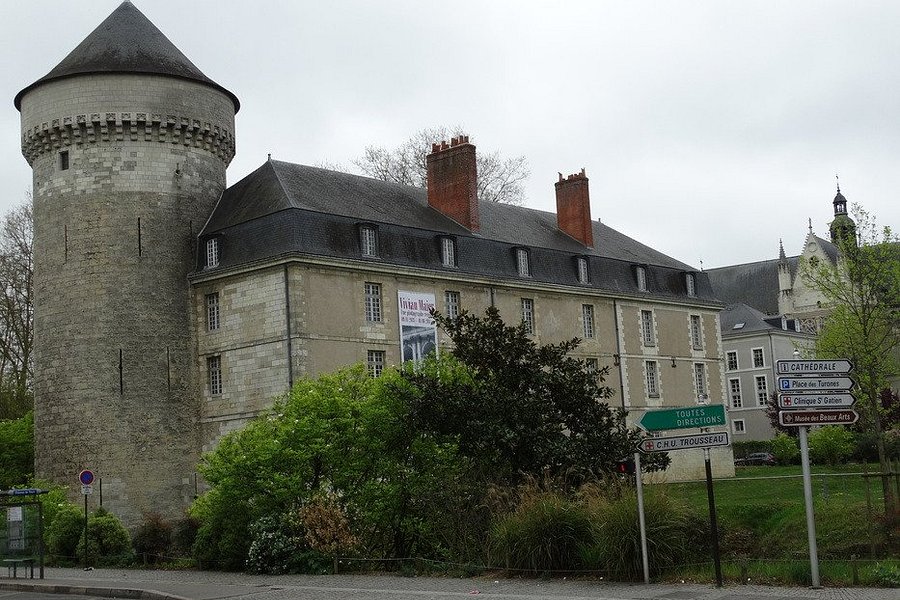
Top ways to experience nearby attractions

Most Recent: Reviews ordered by most recent publish date in descending order.
Detailed Reviews: Reviews ordered by recency and descriptiveness of user-identified themes such as wait time, length of visit, general tips, and location information.
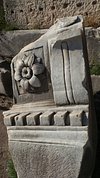
Also popular with travelers

Château de Tours - All You Need to Know BEFORE You Go (2024)
- (0.12 mi) Hotel Du Cygne
- (0.14 mi) Hotel Colbert
- (0.06 mi) Luxurious apartment with terrace and private parking in the center of Tours
- (0.07 mi) Luxurious apartment with terrace and private parking in the center of Tours
- (0.12 mi) L’ESCALIER ROUGE TOURS CENTRE
- (0.02 mi) Le Lily's Club
- (0.08 mi) Espace Hades
- (0.09 mi) Les Canailles
- (0.09 mi) L'Hedoniste
- (0.10 mi) Le Turon
Touraine Val de Loire – ADT de la Touraine EN
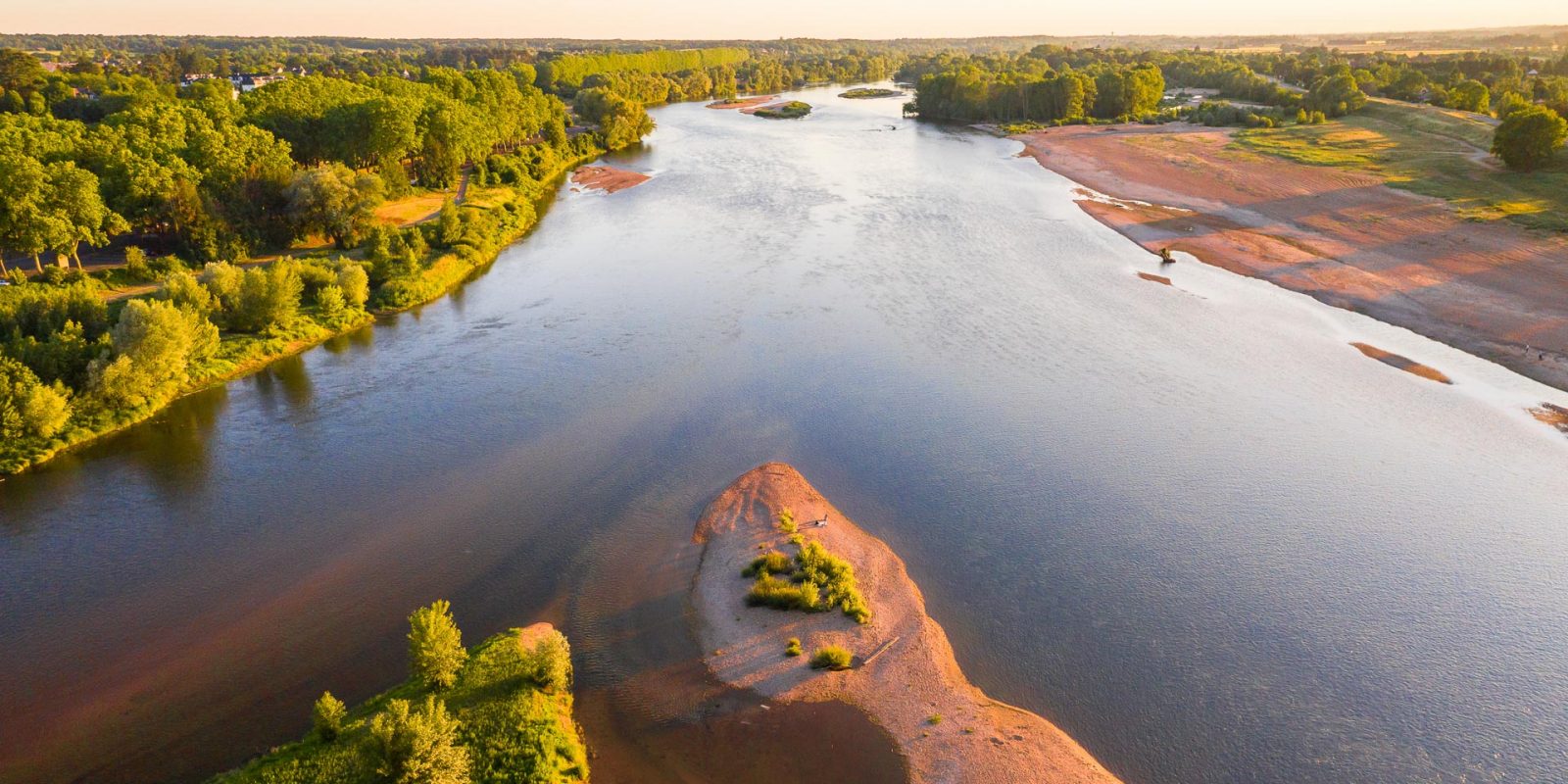
Close the menu
I'm looking for
Visit Tours, the gateway city of the Loire Valley
Home › Discover › Tours and the finest cities in Touraine › Visit Tours, the gateway city of the Loire Valley
Beautiful, vibrant and lively, Tours is a pretty stopping point during a couple of days in the middle of the Loire Valley Chateaux . Tour its historic quarters with their half-timbered houses, the bustling Place Plumereau and Saint-Gatien Cathedral, as well as the new Olivier Debré Contemporary Art Centre.
On sunny days, the star of Tours is the River Loire! The now famous ‘Tours-sur-Loire’ guinguette and the Tours beach extend the city limits to the banks of the river. Numerous activities are offered.
Tours is packed with gourmet bistros featuring fresh, locally sourced produce on their menus. You should taste the nougat of Tours , the potted rillettes of Tours, the saffron , or the "poires tapées" (dried pears). Genuinely unique!
Tours – A tale of two cities
In a perfect location, Tours is the great capital of the Loire Valley, a Unesco world heritage site, but it is far more than just a gateway to the Loire Chateaux. Indeed, Tours delights in being charming and doesn’t think twice about playing a double game in order to do so.
Visit Tours and its architecture full of history
First of all, there is its historical heritage. The birthplace of Balzac (more than fifty books to read) is proud of its old quarters , which take visitors on a wonderful journey back in time in France. Explore the narrow cobbled streets, half-timbered french houses and the stone façade of the monumental Saint-Gatien Cathedral , which give the city a charming medieval air.
The architecture of the Fine Arts Museum , the Hotel Gouïn (Renaissance architecture), Tours castle , the ‘la Psalette’ cloister and the Saint Martin Basilica (near the “tour Charlemagne” and the “tour de l’horloge”) is of great interest! You will enjoy those monuments through a illuminated walking experience , and of course with a guided tour proposed by the tourist office.
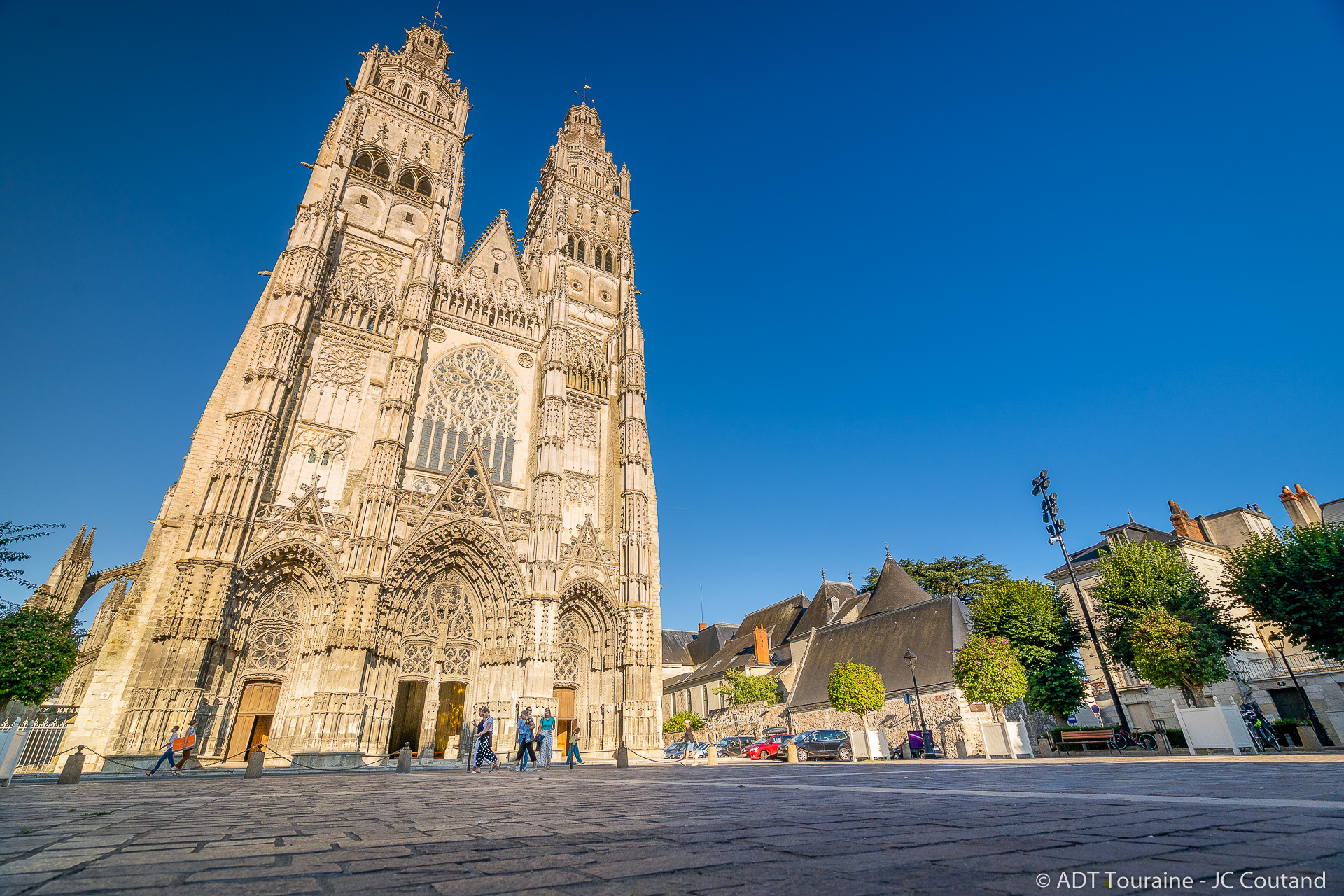
Tours - Saint-Gatien Cathedral
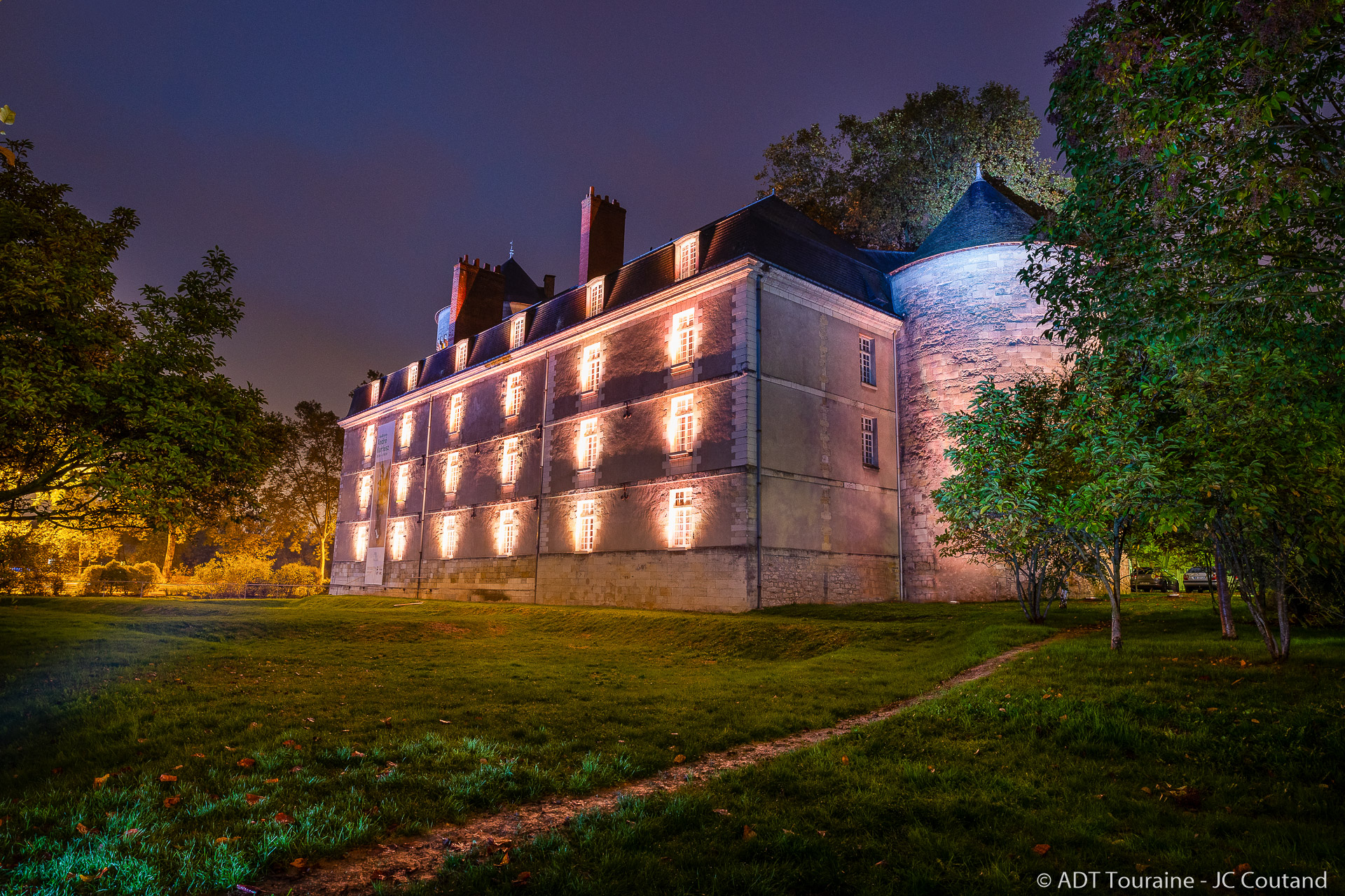
Château de Tours - Illuminated walking experience
Tours, a beautiful city in France
In addition to the built heritage, large green spaces perfectly enhance the french city. Designed in the 19th century and classified as a remarkable garden, the Prebendes d’Oe garden is a perfect example, as is the botanic garden and the Gloriette park . Attached to the latter, the practice of La Gloriette Golf may allow you to make your first swing!
You have a few days ahead of you? Renting a bike , you will cycle from Tours to :
- the St Cosme priory (4km / 14 min),
- the Montbazon fortress (15km / 56 min),
- Vouvray wineries ( Château Gaudrelle , Vigneau-Chevreau …).
- the gardens of Villandry (19km / 1h03),
- the Valmer gardens (19km / 1h06).
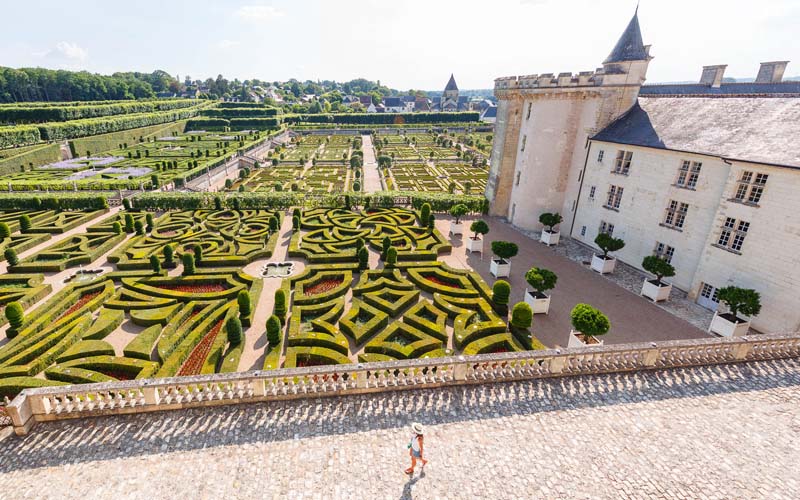
The gardens of Villandry castle. France
It is also very pleasant to go shopping, to have a look at the exhibitions at the new Olivier Debré Contemporary Creation Centre and at the Arts district , to relax at the summer ‘guinguette’, situated along the banks of the Loire River from which you can see the traditional boats (belonging to the Boutavant association ). You may also like to go on board for a fifty minute cruise on the river !
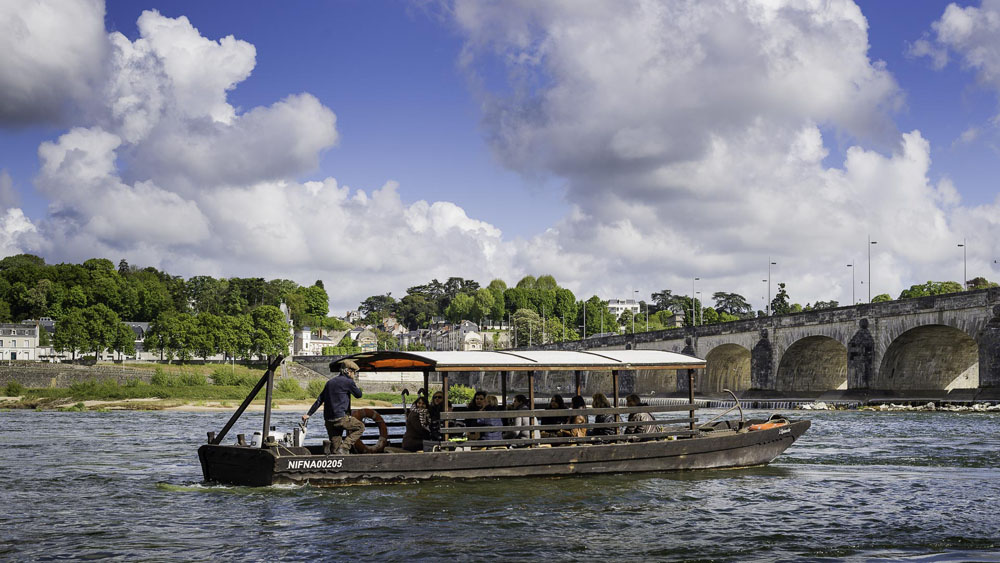
Tours - Boutavant boat on the River Loire
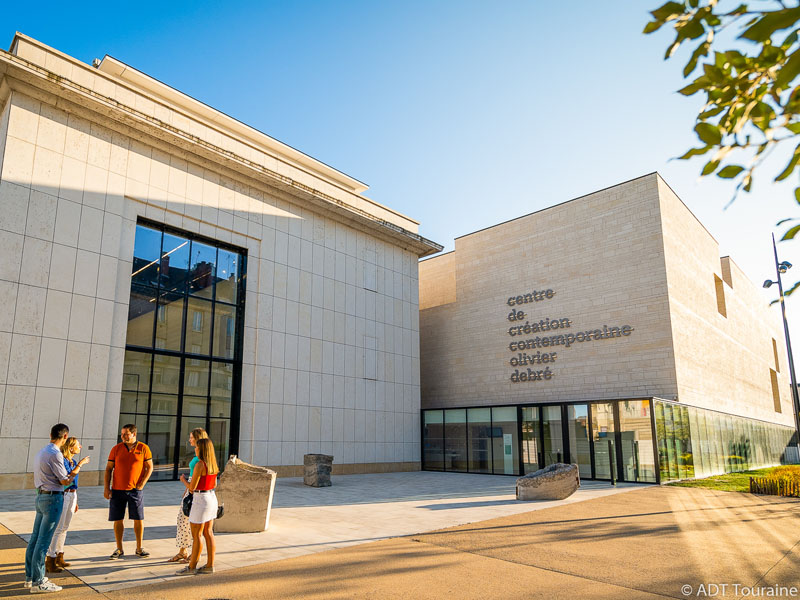
Visit Tours - Olivier Debré Contemporary Creation Centre
For night owls , a stopover in Tours also gives them an opportunity to treat themselves to a show, an evening in one of the many bars and cafés in the Old Town or a front seat at the free sound and light show projected onto the Fine Art Museum façade every evening in the summer.
Some more pictures of Tours:
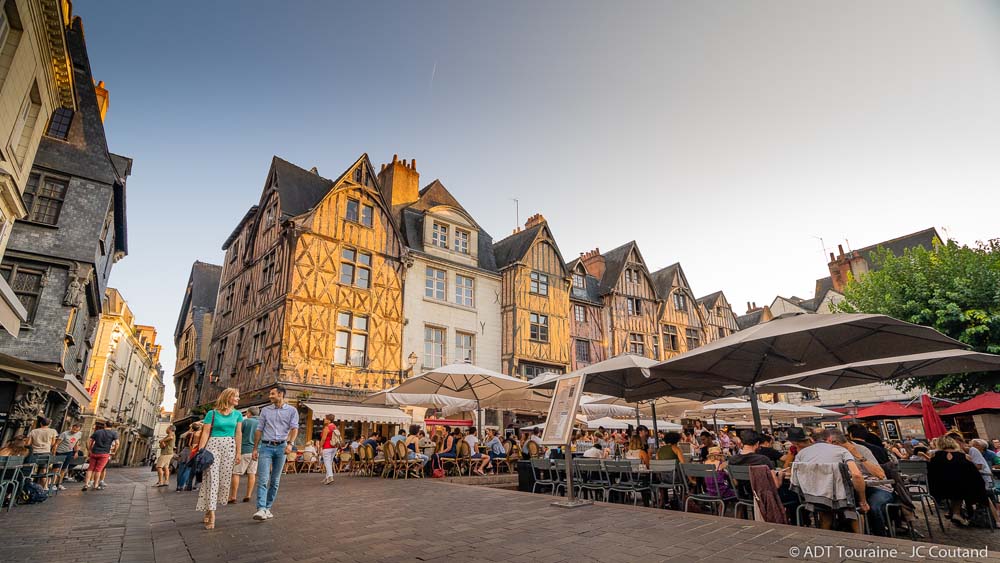
The Plumereau square
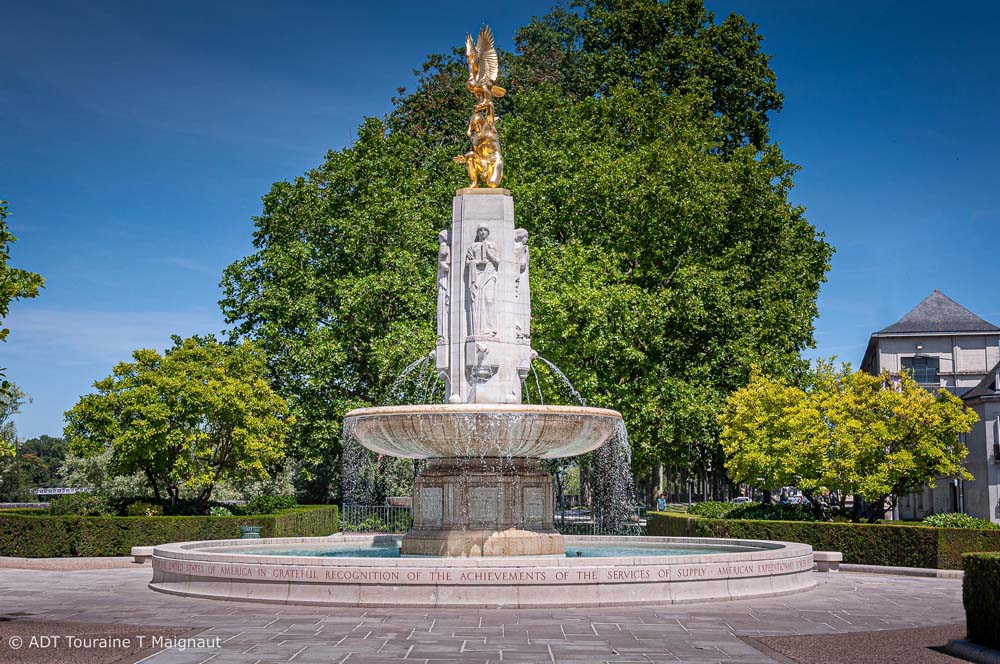
The Art Deco American Memorial
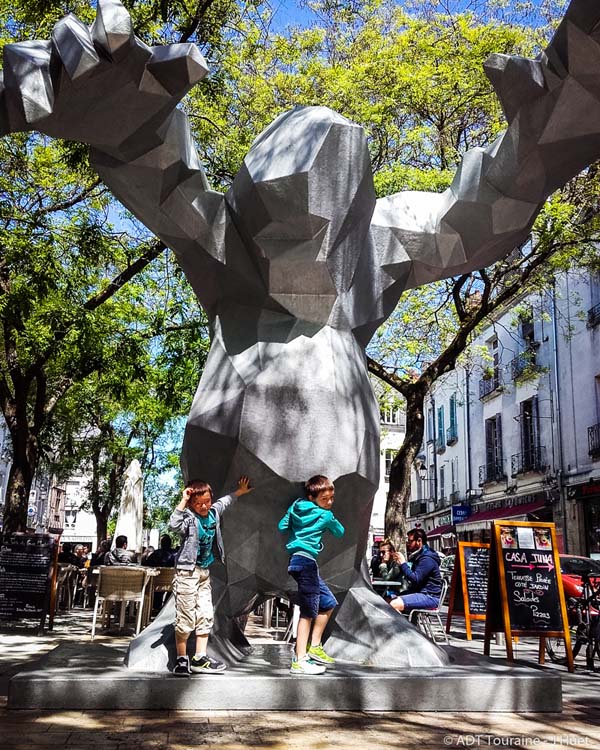
The Monster of Xavier Veilhan
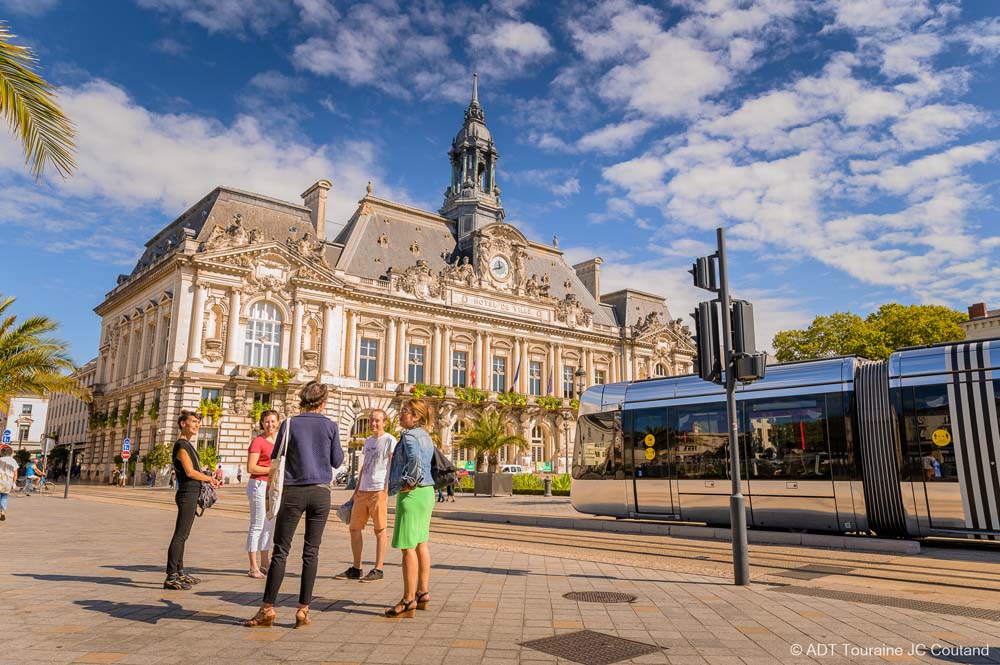
The Jean Jaurès Square, with the Tours City Hall.
Visit Tours in video
Tours is the ideal place to spend a night as it is situated close to the main Loire Valley chateaux, along the Loire by bike trail , along the GR3 pedestrian route and on the way to Santiago de Compostela !
Practical: Tours Val de Loire Tourist Office
Book tickets, guided tour, day trip, activities for groups: www.tours-tourisme.fr/en +033 (0)2 47 70 37 37
Visit Amboise and Chenonceau, jewels of the Renaissance
Find your accommodation, visit loches, town of art and history., visit chinon and azay-le-rideau, lands of sharing, discover beautiful villages, "the mag': inspirations and magical experiences", electric quad: explore the vineyards.
Published on 29 March 2024
Camping in the Loire Valley
Published on 23 March 2024
Michelin stars: 9 restaurants in the heavens!
Published on 18 March 2024
Cancel search
Back to top

Home » Travel Guides » France » 15 Best Things to Do in Tours (France)
15 Best Things to Do in Tours (France)
It’s no mystery that Tours is a favourite base for people discovering the Loire Valley’s exalted châteaux.
Villandry, Chenonceau and Amboise are moments by car, and with the help of the Loire à Vélo network you can visit them on two wheels with ease.
But you may find that if you delve a little more into Tours’ history and attractions, it could be difficult to leave the city at all.
In the centre are timber houses and renaissance mansions on car-free streets, and museums that draw you into the city’s medieval past.
There are vineyards welcoming inquisitive oenophiles in the countryside and both the waters and banks of the Loire invite you to go wherever your sense of curiosity leads.
Lets explore the best things to do in Tours :
1. Tours Cathedral

Even by the glacial speed of construction in the middle ages, Tours Cathedral took a long time to be completed.
Building began in 1170 and wouldn’t be finished until 1547, but this means we’re met with a perfect summary of the evolution of gothic art.
The ensemble of original 13th-century stained glass windows in the ambulatory chapels and above the choir is one of the finest in France, and seems to generate its own light.
The cathedral has information panels giving you the meaning behind each image.
The marble renaissance tombs of King Charles VIII and Anne of Brittany’s children are also moving, as both died in infancy.
2. Musée des Beaux-Arts de Tours

The riches from Cardinal Richelieu’s 17th-century campaign against the Huguenots and the art seized from abbeys during the Revolution all ended up at Tours’ stellar museum of fine art.
Because of their religious source there’s a good body of Italian gothic primitives from the 14th and 15th centuries, while the two renaissance paintings by Andrea Mentegna are regarded as masterpieces.
You’ve got over a thousand artworks to get through, with sculpture by Rodin, Flemish and Dutch painting by Rembrandt and Rubens, and Impressionism by Monet and Degas.
3. Tours Botanical Garden

The city’s municipal garden has a bit of a troublesome setting, between the Loire and Cher, which made it susceptible to flooding in the past, with two devastating inundations in the mid-19th century that filled the greenhouses with two metres of water.
Even after being hit by bombs in the Second World War there isn’t the slightest hint of a troubled past at these serene gardens.
On your walk you may notice some trees you haven’t seen before, like the Chinese empress tree, ginkgo biloba and the endangered dawn redwood.
The animal park is from 1863 and has farm animals for kids to bond with, as well as more exotic species like wallabies.
4. Le Vieux Tours

Like all the best historic city centres the historic buildings on the pedestrian streets around Place Plumereau aren’t sterile museum pieces but vibrant cornerstones of local life, used as shops, restaurants and bars.
Place de Plumereau is at the nerve centre of one of the largest conservation areas in Europe, with renaissance mansions boasting sculpted reliefs or cantilevered timber houses, going strong for hundreds of years.
If you’re OK with everybody knowing you’re a tourist, jump aboard the little train that departs every hour from Place Plumereau in summer.
5. Musée du Compagnonnage

In the 16th-century Dormitory at the former Abbey of Saint-Julien is a museum devoted to a French workers’ movement that dates back to medieval times.
Roughly, the Compagnons du Tour de France is like a guild of journeymen that preserves historic trades and educates young people about them as part of an apprenticeship.
To complete the apprenticeship and become a “companion” a craftsman had to create a masterpiece for whatever discipline he worked in.
And these dumbfounding creations are presented at the museum, in all kinds of different disciplines, like metalwork, tailoring, shoemaking and woodcarving.
6. Hôtel Goüin

What may be the most beautiful of Tours’ many old building has just come through a long restoration and is open to the public once more.
Hôtel Goüin is an early-renaissance palace on Rue du Commerce, with a balustraded porch and the sort of loggia in which you might expect to see Juliet calling for Romeo.
During the restoration they unearthed fragments of an older building from the 1100s, with four arches and a well, which are on show.
You might just want to stop for a photo of that magnificent facade, but there’s an archaeological museum inside with artefacts from Roman times up to the 1800s.
7. Halles de Tours

Billed as the “Belly of Tours” (ventre de Tours), the city’s indoor market may not be France’s largest, but it’s a gastronome’s idea of heaven.
You may even want to bring your camera or have your phone at the ready, because the cheese, charcuterie, seafood and in-season fruit and vegetable counters are presented with real flair.
If you’re stuck for gift ideas then markets like this tick the box as they’re stocked with all the best from the region.
At Tours that entails wine from the Loire Valley and luxury chocolate.
The city is one of France’s chocolate capitals, and every years holds the Salon du Chocolat de Tours at the Centre de Congrès Vinci.
Come for lunch too: The oyster bar shucks your oyster as you go.
8. Jardin des Prébendes d’Oé

During the French Second Empire from the mid-1800s English-style parks like this one popped up in provincial cities across France.
This was a spot for urban families to take promenades, kids to play and for the city to put on outdoor concerts at the park’s gazebo.
There’s less of the formality of French parterres, as paths weave through tulip flowerbeds and copses of lime, plane, cedar, chestnut and lofty redwood trees.
So if you could do with a moment of repose take a wander by the pond and pause for a tea or coffee at the kiosk.
On warmer days you could load up on cheese and charcuterie at the market and have the perfect French picnic.
9. Église Saint-Julien de Tours

The predecessors of this 12th-century abbey were wrecked by the Normans in the 9th century and then in a war between the feudal houses of Blois and Anjou in the 10th century.
But miraculously the building that followed has survived everything from the French Revolution to the Second World War.
It was part of a long-gone abbey, and the garden next to the church is where the cloister used to be, while the Musée de Compagnonnage occupies the old dormitory.
10. “Toue” River Cruises

Commercial craft floated along the Loire and Cher since antiquity, hauling people, wine, silk, lumber, salt and all sorts of other cargo up and down these rivers.
Because the waterways can get very shallow they used flat-bottomed sailboats called “toues”, and you can too! Toues can carry between 12 and 30 passengers for hour-long trips, or even romantic dinner cruises in the evening.
Their skippers know these waters and banks like the backs of their hands: And with the deck as your balcony, they’ll shed light on the Tours’ river trade, its many colourful characters and perils.
11. Loire à Vélo

If you had to picture some quintessentially French holiday activities, a bike ride next to the Loire with a backdrop of gentle vine-striped hills and châteaux must be one of the first that comes to mind.
About 150km of the of the Loire à Vélo cycle trail’s totalling 800km are in the Touraine region.
The route is clearly-marked, easy -going because it never leaves the riverside and convenient as there are dozens of hire stations along the way.
You could give yourself set destinations like Amboise or Villandry, which are both reachable in about an hour.
Or make more of an adventure of it by going further afield and spending the night at the inns on the route that are happy to accommodate cyclists.
12. Guinguette sur Loire

On the left bank of the Loire, just by Pont Wilson, is where Tours’ “Guinguette” takes place from May to September.
It isn’t officially summer in Tours until this outdoor café by the river is bustling every evening with locals and tourists at the bar terrace, taking part in dance lessons, enjoying concerts or watching movies at the outdoor cinema.
Tours is a student city so the atmosphere is always warm and energetic.
The location is wonderful, under willow trees and string lights, with the river rolling past.
And every year there Guinguette has something new on the schedule.
13. Wine and Gastronmic Visits

If you’re a wine-lover you’ve come to the right place.
There’s an absurd amount of AOCs nearby: A dozen within an hour, and five bordering the city.
The diversity will make your head spin more than the wine itself, with the reds of Touraine-Chenonceau, the whites of Touraine Sauvignon and rosés made in Touraine noble joué.
When it comes to precious foodstuffs there’s a saffron market in Preuilly-sur-Claise and a seasonal truffle market at Marigny-Marmande.
The local cheese, Sainte-Maure-de-Touraine is known to all for its cylindrical shape and the straw that pierces it through the centre.
To know more, pay a visit to the dairy at Les Passerelles or the child-friendly goat farm, Cabri au Lait, which makes Sainte-Maure but also has a petting zoo for the little guys and girls.
14. Château de Villandry

It would be criminal to visit Tours and not call in at one of the abundant château in the region.
Tours is touted as a gateway for these sensational pieces of French royal or noble heritage.
You can reach Villandry in 20 minutes, and it’s one of the finest.
The gardens are the showstopper at this château.
They were restored at the turn of the century by the Spanish doctor Joachim Carvallo.
He conceived several terraces of renaissance gardens, all with precisely trimmed boxwood hedges in joyous geometric configurations.
There’s a water garden, labyrinth, sun garden, ornamental garden with high hedges, but the most astounding is the formal medieval kitchen garden, all in neat plots.
15. Château d’Amboise

The home of Francis I and most of the French royalty in the 16th century is a 20-minute car or train ride to the east.
The château had its heyday in the renaissance period after Charles VIII turned it from a fortress into the Loire valley’s first Italian-style palace in the late-1400s.
In 1516 Francis I invited Leonardo da Vinci to live and work in Amboise, and the polymath’s home at Clos Lucé was actually connected to the Château d’Amboise by underground passageways that you can discover today by prior arrangement.
Da Vinci died here in 1519 and is buried at the Chapel of Saint-Hubert at the Château.
The gardens are embellished with spherical topiaries and the views from this spur above the Loire are divine.
15 Best Things to Do in Tours (France):
- Tours Cathedral
- Musée des Beaux-Arts de Tours
- Tours Botanical Garden
- Le Vieux Tours
- Musée du Compagnonnage
- Hôtel Goüin
- Halles de Tours
- Jardin des Prébendes d'Oé
- Église Saint-Julien de Tours
- "Toue" River Cruises
- Loire à Vélo
- Guinguette sur Loire
- Wine and Gastronmic Visits
- Château de Villandry
- Château d'Amboise

Château de Tours
Château de tours: a historical masterpiece, exploring the chapel of saint-loup, strolling through the gardens of the château, interactive exhibits at the château de tours museum, uncovering the legend of the white lady, witnessing a medieval banquet in the great hall, attending a classical music concert in the chapel, exploring the city of tours from the château, discovering the loire valley from the château, participating in a guided tour of the château, capturing the perfect photo moments, savoring local delights at the château's café, insider tip: unveiling the secret passage.
The Château de Tours stands as a testament to the rich history of the city of Tours and the Loire Valley. Its origins can be traced back to the Roman era, when a fortress was built on the site to defend the strategic crossing of the Loire River. Over the centuries, the castle underwent significant transformations, evolving from a military stronghold to a royal residence. In the 15th century, King Louis XI chose the Château de Tours as his preferred residence, leaving a lasting mark on its history and architecture. Today, the castle welcomes visitors from around the world, offering a glimpse into its fascinating past through its stunning architecture, beautifully landscaped gardens, and informative museum.
The Château de Tours is home to the stunning Chapel of Saint-Loup, a masterpiece of Gothic architecture that dates back to the 15th century. With its intricate stained glass windows, vaulted ceilings, and ornate sculptures, the chapel is a true architectural gem. History buffs will appreciate the chapel's role in significant events such as the coronation of King Louis XI and the marriage of King Charles VIII.
The chapel is also the resting place of several French monarchs, including King Louis XI and his wife, Charlotte of Savoy. Their elaborate tombs, adorned with intricate carvings and effigies, are a testament to the grandeur of the French monarchy. Visitors can pay their respects to these former rulers and learn about their lives and legacies.
In addition to its architectural and historical significance, the Chapel of Saint-Loup is also home to a collection of exquisite artwork and sculptures. The 15th-century altarpiece, with its vibrant colors and intricate details, is a particularly noteworthy piece. Visitors can spend hours exploring the chapel's many treasures, admiring the craftsmanship and artistry that went into its creation.
The Château de Tours boasts stunning French gardens that offer a tranquil oasis amidst the bustling city. These meticulously manicured gardens, with their vibrant flowerbeds, symmetrical paths, and serene fountains, invite visitors to explore and unwind.
Lose yourself in the beauty of the colorful blooms that adorn the gardens, creating a vibrant tapestry of colors. Stroll along the symmetrical paths, lined with perfectly trimmed hedges, and discover hidden nooks and charming pathways that offer serene spots to relax and enjoy the scenery.
Take a moment to appreciate the breathtaking panoramic views of the city of Tours and the surrounding Loire Valley from the castle's gardens. Admire the picturesque cityscape, with its iconic spires and bridges, and the rolling hills of the Loire Valley, dotted with vineyards and chateaus.
Learn about the history and evolution of the gardens, from their medieval origins to their current design. Discover how the gardens have been transformed over the centuries, reflecting the changing tastes and styles of their owners.
The Château de Tours Museum houses a captivating collection of interactive exhibits that bring the castle's rich history to life in a dynamic and engaging way. Through multimedia presentations, touchscreens, and hands-on activities, visitors of all ages can explore the castle's past in a truly immersive manner.
Step into the virtual reality experience and be transported back in time to the Middle Ages, where you can wander through the castle's grand halls and chambers as they would have appeared centuries ago. Examine detailed 3D models that provide a close-up look at the castle's architecture and interiors, allowing you to appreciate the intricate details and craftsmanship that went into its construction.
Participate in educational programs and workshops designed for children and adults, where you can learn about the castle's history, its significance, and the lives of its former inhabitants. These interactive sessions offer a deeper understanding of the castle's role in French history and culture.
The Château de Tours is steeped in mystery and intrigue, and one of its most captivating tales is the legend of the White Lady. According to local folklore, the ghost of a woman dressed in a flowing white gown roams the halls of the castle, her presence often accompanied by a chilling breeze or the faint sound of footsteps.
The origins of the legend are shrouded in uncertainty, with several historical figures suggested as the inspiration for the White Lady. Some believe she may be the spirit of Queen Isabeau of Bavaria, who was imprisoned in the castle in the 15th century. Others claim she is Diane de Poitiers, the mistress of King Henry II, who was known for her beauty and influence at the French court.
The legend of the White Lady has captivated the imaginations of locals and visitors alike for centuries, becoming an integral part of the castle's allure. Whether you believe in ghosts or not, the story of the White Lady adds an eerie and enchanting dimension to the Château de Tours, making it a truly unforgettable destination.
Local Folklore:
- Discover the captivating legend of the White Lady, a ghost said to haunt the halls of the Château de Tours.
Historical Origins:
- Learn about the possible historical figures associated with the legend, such as Queen Isabeau of Bavaria or Diane de Poitiers.
Cultural Impact:
- Explore the influence of the legend on local culture, including literature, art, and storytelling.
Ghostly Encounters:
- Hear firsthand accounts of alleged paranormal experiences and sightings of the White Lady by visitors and staff.
Step back in time and experience the grandeur of a medieval banquet in the Château de Tours' majestic Great Hall. Immerse yourself in a captivating sensory journey as you feast on a banquet fit for royalty, surrounded by the castle's ancient stone walls and adorned with medieval tapestries.
During this unique dining experience, you'll be transported to the Middle Ages, where you'll witness the spectacle of a medieval feast recreated with meticulous historical accuracy. The hall will be alive with the sounds of live music, the laughter of courtiers, and the clinking of goblets as you savor a feast of traditional dishes prepared according to medieval recipes.
From the moment you enter the Great Hall, you'll be captivated by the sights, sounds, and flavors of this immersive experience. Donning period costumes, the servers will greet you with a warm welcome and guide you to your seat at a long wooden table, adorned with medieval tableware and flickering candles.
As you feast on a delectable array of dishes, you'll be entertained by live performances by musicians, jugglers, and other medieval entertainers. Watch in amazement as they perform feats of skill and agility, transporting you to a bygone era of chivalry and pageantry.
More than just a culinary experience, the medieval banquet at the Château de Tours offers a glimpse into the social customs and etiquette of the Middle Ages. You'll learn about the significance of banquets in medieval society and the elaborate rituals associated with them.
Whether you're a history buff, a lover of medieval culture, or simply seeking a unique and unforgettable dining experience, the medieval banquet at the Château de Tours is an absolute must. Prepare to be captivated as you step into the pages of history and indulge in a feast fit for royalty.
The Chapel of Saint-Loup, with its exceptional acoustics, offers a unique and intimate setting for classical music concerts. Immerse yourself in the harmonious sounds of renowned musicians and ensembles as they fill the historic chapel with their captivating performances. Choose from a diverse range of concerts, featuring classical masterpieces from different eras and genres. Attend special events and festivals that showcase the chapel's acoustics and musical heritage, creating truly memorable experiences for music lovers.
The Château de Tours offers a prime location for exploring the vibrant city of Tours. Situated in the heart of the city, the castle is within easy walking or biking distance of many of Tours' top attractions. Take advantage of this central location to immerse yourself in the city's rich history, diverse culture, and culinary delights.
Visit the Cathédrale Saint-Gatien, a stunning example of Gothic architecture, or admire the collection of fine art at the Musée des Beaux-Arts. Stroll along the picturesque Place Plumereau, with its half-timbered houses and lively atmosphere. Indulge in the local cuisine at one of Tours' many restaurants, savoring the fresh produce, regional specialties, and renowned wines of the region.
Discover the vibrant shopping scene, from traditional markets to modern shopping malls, and enjoy the city's entertainment offerings, including theaters, cinemas, and music venues. Explore the city's parks and gardens, offering tranquil retreats amidst the urban landscape. With its central location and easy accessibility, the Château de Tours serves as the perfect starting point for your exploration of Tours, inviting you to discover the city's many hidden gems and unforgettable experiences.
The Château de Tours offers a unique gateway to exploring the enchanting Loire Valley, a region renowned for its breathtaking scenery, rich history, and world-class wines. From the castle's towers and gardens, visitors can enjoy panoramic views of the valley, dotted with picturesque villages, rolling vineyards, and majestic châteaux. Embark on a wine-tasting tour to sample the region's diverse vintages, or delve into the history of the Loire Valley by visiting iconic landmarks such as the Château de Chambord, the Château de Villandry, and the Château d'Amboise. Outdoor enthusiasts can indulge in cycling, hiking, and kayaking amidst the valley's stunning natural landscapes. Whether you seek cultural immersion, culinary delights, or outdoor adventures, the Loire Valley offers an array of experiences that are easily accessible from the Château de Tours.
Enrich your visit to the Château de Tours by joining a guided tour led by knowledgeable and passionate experts. These experienced guides will take you on a journey through the castle's rich history, sharing captivating stories and historical facts that bring the past to life. Choose from group tours designed for a comprehensive overview or opt for a private tour tailored to your specific interests and pace. Thematic tours are also available, focusing on specific aspects of the castle's history, architecture, or legends. For visitors with disabilities or special needs, inquire about guided tours that cater to your requirements, ensuring an inclusive and enjoyable experience for all.
The Château de Tours offers a wealth of photo opportunities, both inside and out. From its elevated position, you can capture breathtaking panoramic shots of the city and the Loire Valley. Don't miss the chance to photograph the intricate architectural details, tapestries, and artwork inside the castle. The gardens and courtyard also present picturesque scenes, with colorful flowerbeds, manicured lawns, and charming fountains. To capture unique and memorable shots, explore different angles and viewpoints around the castle grounds. With its stunning beauty and rich history, the Château de Tours is a photographer's paradise, waiting to be immortalized through the lens of your camera.
After exploring the grandeur of the Château de Tours, take a break and indulge in culinary delights at the Café des Gardes, nestled within the castle grounds. This charming café offers a delightful menu featuring traditional French cuisine and regional specialties, all prepared with fresh, local ingredients.
Savor the flavors of France as you dine in the elegant dining room or relax on the outdoor terrace, which offers stunning views of the castle and the surrounding gardens. Enjoy a leisurely lunch accompanied by a glass of wine from the Loire Valley, or treat yourself to a decadent afternoon tea complete with a selection of pastries, cakes, and fragrant teas.
The Café des Gardes provides the perfect setting to unwind and soak in the ambiance of the castle. Whether you're looking for a quick bite or a leisurely meal, this charming café offers a delightful culinary experience that will tantalize your taste buds and leave you with lasting memories of your visit to the Château de Tours.
Amidst the grandeur of the Château de Tours lies a hidden gem known only to a privileged few – a secret passageway that whispers tales of intrigue and historical significance. Step back in time as you uncover the purpose of this clandestine route, which played a pivotal role in the castle's past. Guided tours offer exclusive access to this hidden treasure, allowing you to explore its fascinating history and marvel at its architectural ingenuity. However, due to its delicate nature, access to the secret passage may be restricted or require special permission. Seize the opportunity to unravel this hidden gem and gain a deeper understanding of the Château de Tours' rich and captivating history.
- Aix-en-provence
- Asnieres-sur-seine
- Boulogne-billancourt
- Clermont-ferrand
- Levallois-perret
- Montpellier
- Saint-denis
- Saint-etienne
- Villeurbanne
You may also like
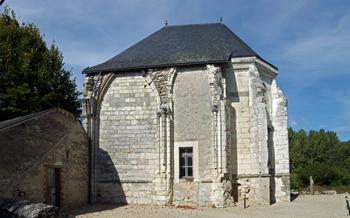
Musée Archéologique de Touraine
In the heart of Tours, a city steeped in history and culture, lies a treasure trove of ancient artifacts and captivating stories waiting to be discovered - the Musée Archéologique de Touraine. This remarkable museum invites visitors on a journey t...
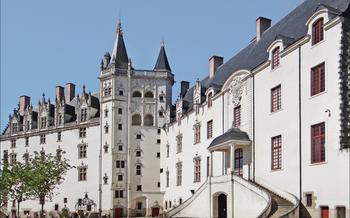
Musée du Château des ducs de Bretagne
In the heart of Nantes, the majestic Château des ducs de Bretagne stands as a testament to the city's rich history and cultural heritage. Constructed between the 13th and 16th centuries, this imposing fortress-like structure once served as the res...
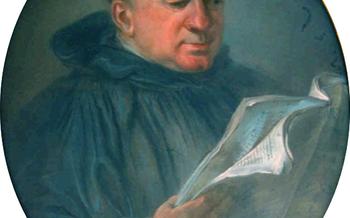
Musée de l'Hôtel Goüin
Nestled in the heart of Tours, the Musée de l'Hôtel Goüin stands as a testament to the grandeur of Neo-Gothic architecture. Built in the 19th century by the renowned architect Eugène Viollet-le-Duc, the museum is a masterpiece of intricate stonewo...
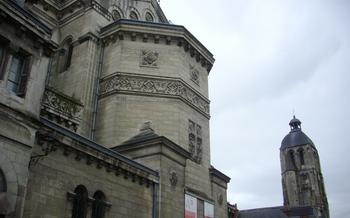
Basilique Saint Martin de Tours
A majestic symbol of faith and architectural brilliance, the Basilique Saint Martin de Tours stands as a testament to the enduring legacy of Saint Martin, the patron saint of Tours. With a history spanning over 15 centuries, this awe-inspiring bas...
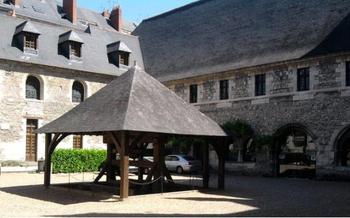
Musée du Compagnonnage
The Musée du Compagnonnage is conveniently located in the heart of Tours, a beautiful city in the Loire Valley. The address of the museum is 46, Rue du Plat d'Étain, 37000 Tours, France. For those arriving by train, the nearest station is the Tour...

Musée du Vin de Touraine
In the heart of the enchanting Loire Valley, a region renowned for its rich viticultural heritage, lies the Musée du Vin de Touraine. Nestled in the picturesque town of Tours, this museum invites you on a captivating journey through the world of w...
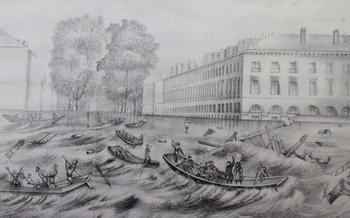
Musée des Vins de Touraine
The Musée des Vins de Touraine offers an interactive and educational journey through the world of wine. As you wander through the museum's exhibits, you'll discover the rich history and traditions of winemaking in the Touraine region.
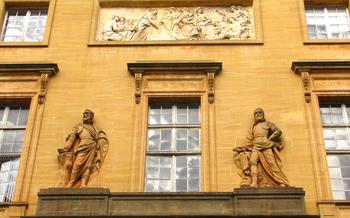
Palais de Justice de Metz
Palais de Justice de Metz: A Majestic Symbol of Justice
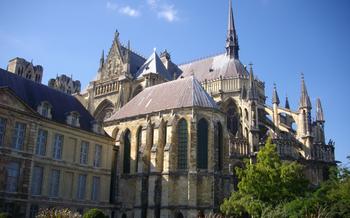
Palais du Tau
Reims Cathedral, a UNESCO World Heritage Site, stands as a testament to the grandeur of Gothic architecture. Its construction began in the 13th century and spanned several centuries, showcasing the evolution of Gothic styles. The cathedral's exter...
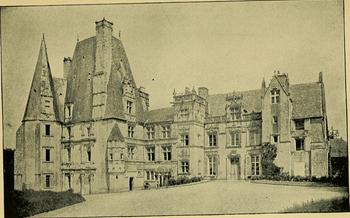
Château de Fontaine Henry
In the heart of Normandy, France, where history and beauty intertwine, lies an architectural marvel that transports visitors back in time—the Château de Fontaine Henry. This majestic castle, steeped in centuries of rich history, invites you to emb...
Tours: The ancient renaissance city in the Loire Valley
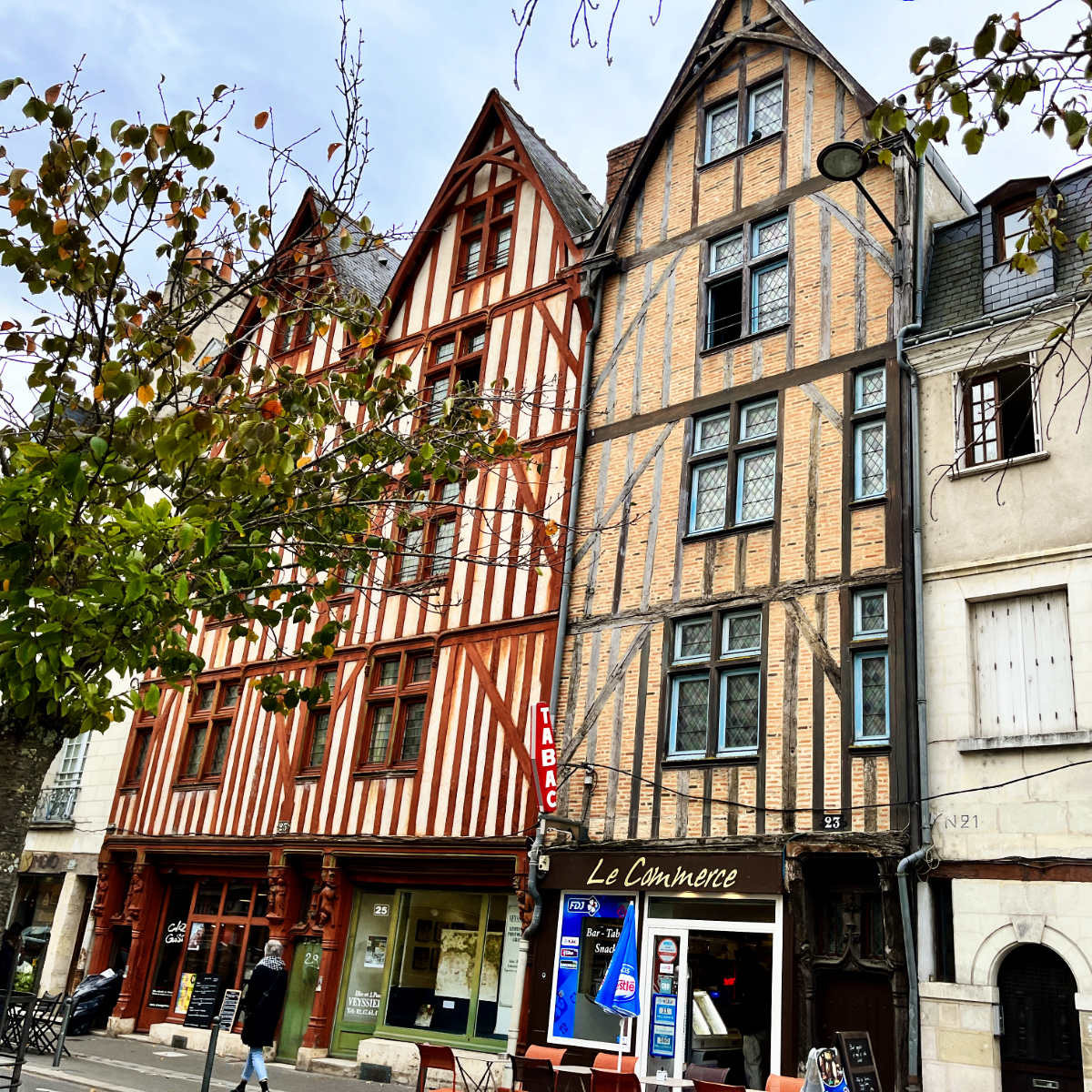
- Post category: Loire Valley
- Post author: Nassie Angadi
The city of Tours is one of the oldest cities in France. Located on the river Loire, it is a beautiful city surrounded by several world-famous châteaux that are within an hours drive.
It is within 1 hour of several famous châteaux in the area like Château de Chenonceau , Château Royale d’Amboise , Château de Chaumont , Château de Chambord , and Château de Cheverny , near the cities of Amboise and Tours . And it is about 3 hours away from Paris, making it ideal for a day trip from the city.
But even before the chateaux of the Loire , the city of Tours is one that marked the history books, dating back to the Roman era. So let’s see why Tours is so famous and what there is to see and do in the city, shall we? Allons-y!
20. Wine tastings
History of tours.
The city of Tours is located with the Loire river on one side and the Cher river on the other. This strategic location made a settlement here of vital importance for centuries. The city was formerly named Caesarodunum by its founder, Roman Emperor Augustus, after his predecessor Julius Caesar who had conquered Gaul (old France) .
Much of what is known about this period is due to the famous 6th century historian Gregoire de Tours who was from the area, and who produced several books about the time, including about Clovis, the 1st King of the Franks .
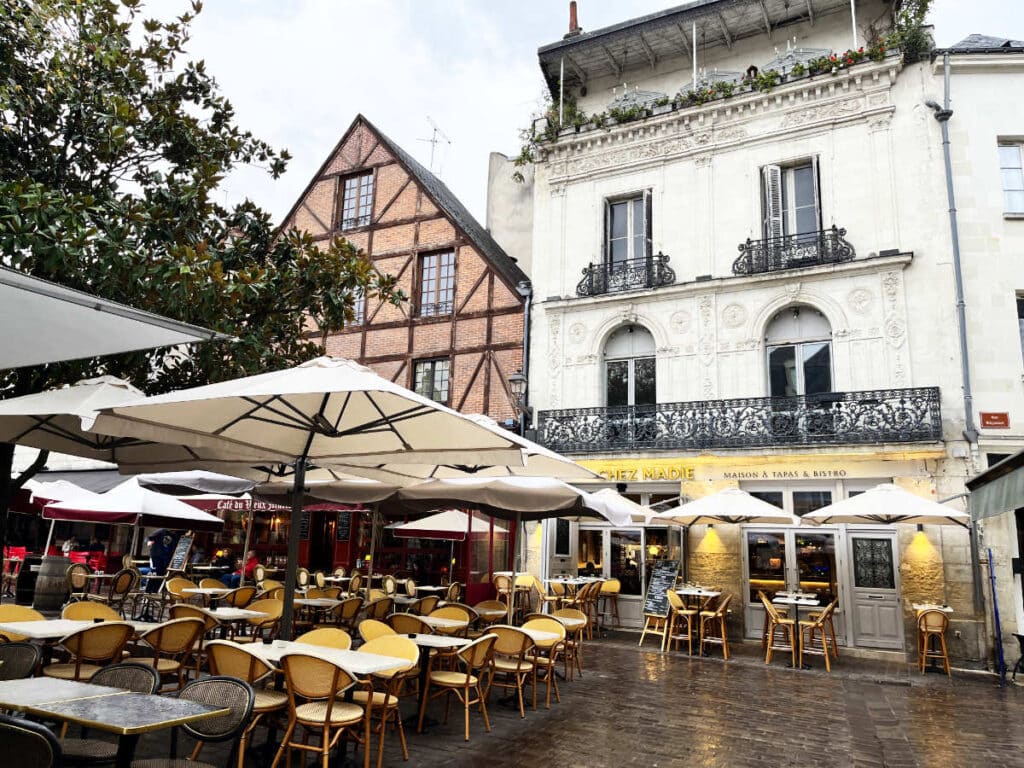
It was also the location of the historic Battle of Tours of 732, when Frankish tribes led by Charles Martel defeated over the invading Saracen forces who had come from the muslim-ruled Iberian Peninsula (today Spain). The defeat prevented the Sarancen invasion of France, stopping further invasions into northern Europe.
The city of Tours became the seat of the authority of the Counts of Tours (later Counts of Anjou) and the Kings of France , as the capital of the province of Tourraine . The one of the first major currencies used in France was named after the city’s mint, the Livre Tournois .
In the Middle ages, Tours was heavily disputed between the Counts of Anjou and the Counts of Blois . (The English King Richard the Lionheart fought here as he was also the Count of Anjou and Aquitaine, titles gained from war and from his mother Eleanor of Aquitaine .)
The city of Tours became so important, it was practically considered a capital of France between 1430 and 1530, with a continual stay of kings in the province of Touraine.
However, it was the château at Blois (Louis XII’s childhood home) and then Château d’Amboise ( François Ier’s childhood home) where the Kings of France would eventually stay, rather than the Château at Tours.
Although Tours would slowly decline in importance as the French royals would install themselves in Fontainebleau and then eventually Versailles , the city would become the capital of France again briefly in 1870 during the Franco-Prussian war . As Paris was under seige for 4 months by the Germans , and the French government operated from Tours during that period.
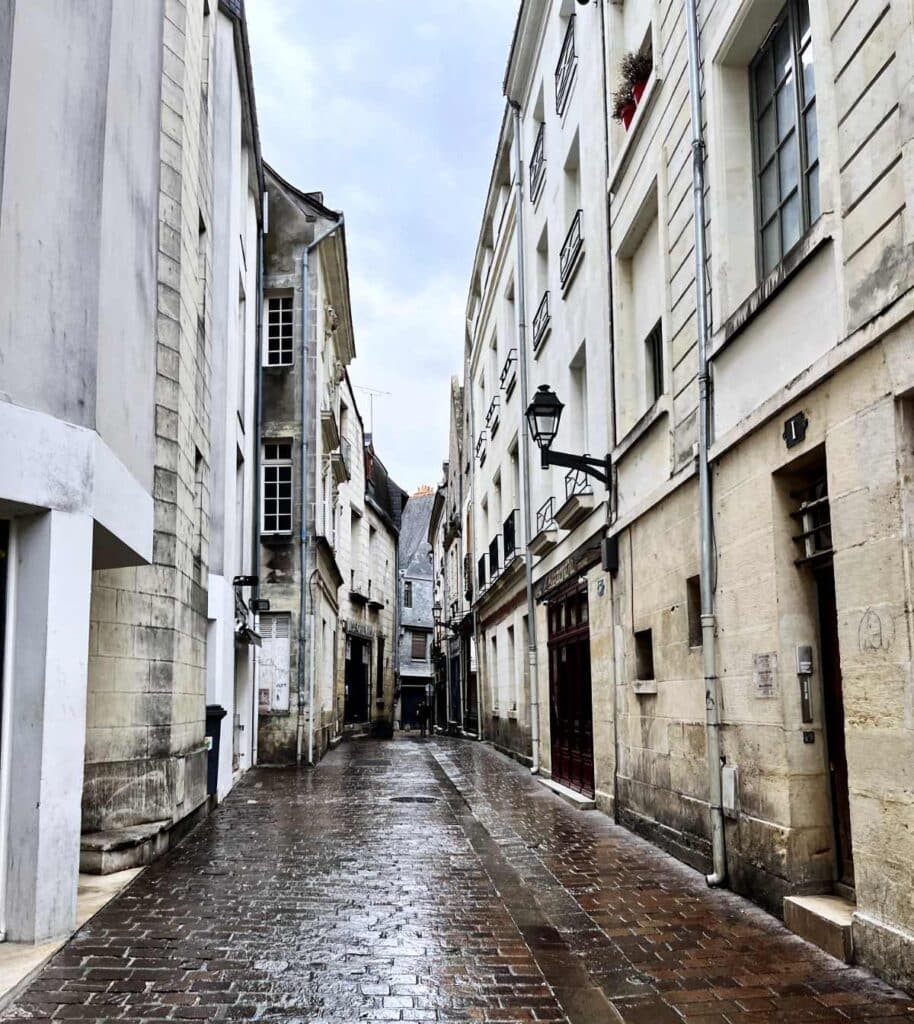
During WWI, Tours became a garrison town with 25,000 American soldiers stationed here in 1917. Factories for the manufacture of uniforms, repair shops for military equipment, munitions dumps, and even an American military hospital was set up to support the Allied armies.
The city of Tours suffered greatly during WWII, when it was severely bombed. Large fires destroyed much of the city’s core. Many monuments around the city are dedicated to this era, including a bridge named after Woodrow Wilson, the U.S. president during the war.
After the war, reconstruction efforts have made it a vibrant center in the Loire valley, and a university town attracting the young and old.
Things to do in Tours
1. tours cathedral.
The Cathédrale Saint-Gatien, which is also known as the Tours Cathedral is one of the grand gothic cathedrals of France .
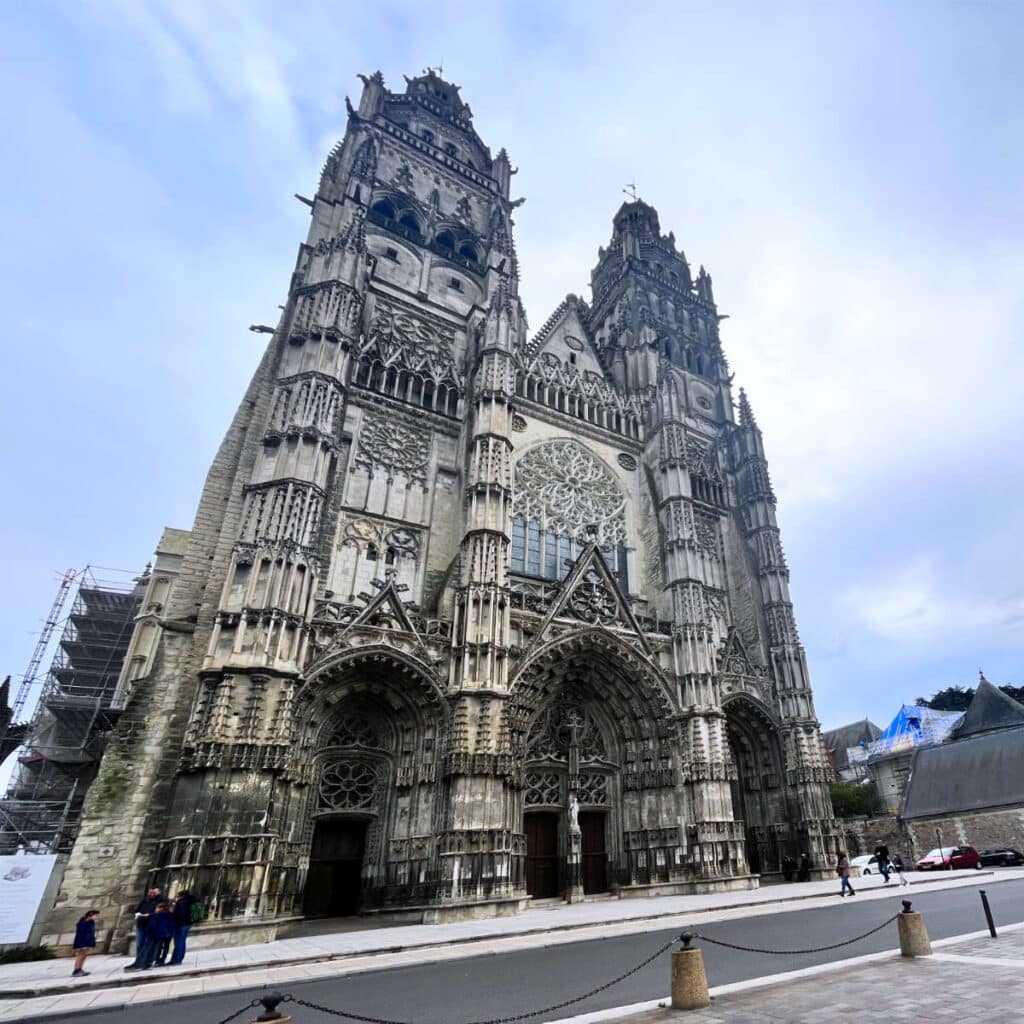
It is the seat of the Archbishops of Tours, and construction began in the 12th century, around the same time as the cathedrals of Paris , Reims , and Chartres . Earlier churches have stood on the site, dating back to the 4th century.
It is a Roman Catholic church and is also notable for holding the tombs of the children of Anne of Brittany and her first husband, King Charles VIII of France. (Her 2nd husband was King Louis XII, making her twice the Queen of France.)
In 1793, during the French Revolution , it was nationalised and transformed into a Temple of Reason, until it was finally restored to a church in the 19th century.
2. Château de Tours
Constructed in the 11th century, the Château de Tours stands just footsteps away from the Cathedral of Tours. Unlike the newer and ornamental Renaissance châteaux of the Loire, the Château de Tours is a medieval fortress that was built to defend.
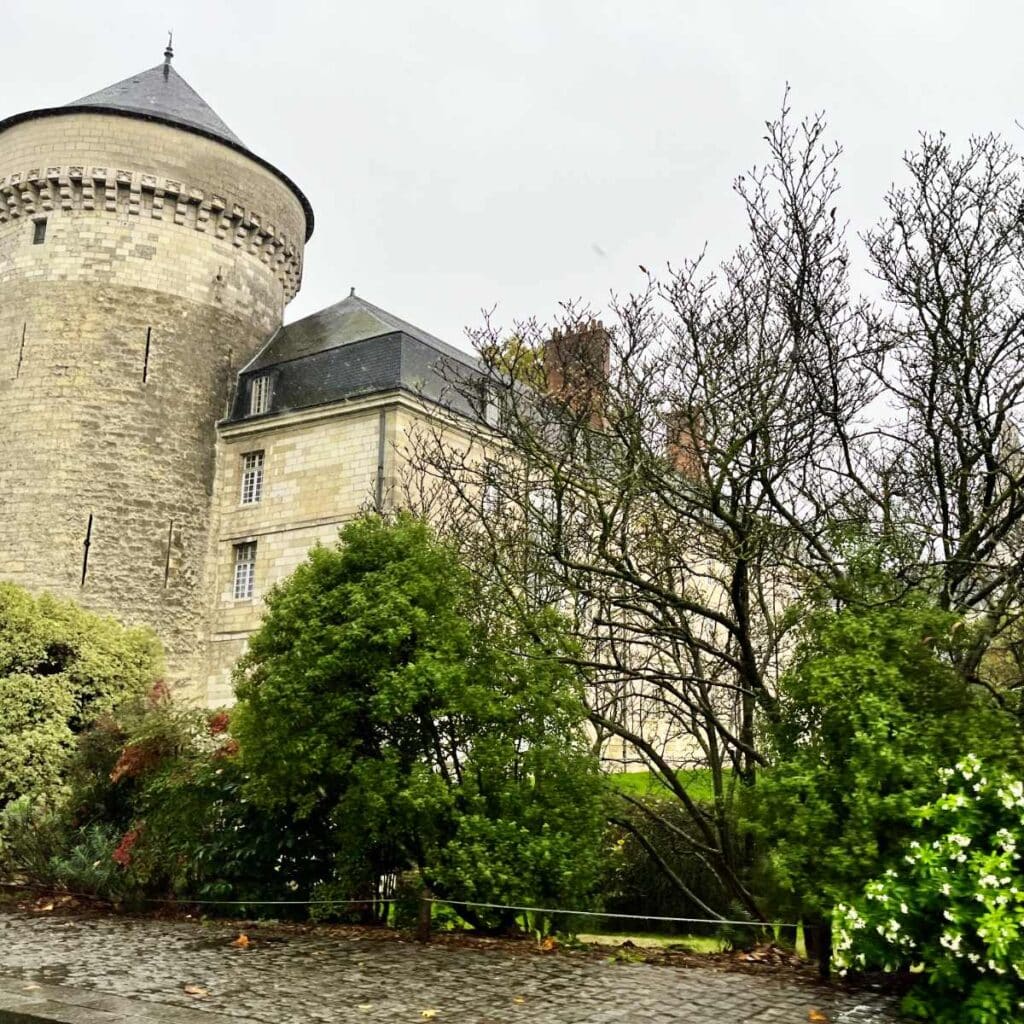
It was almost completely destroyed in the 18th century, with only two medieval towers remaining. A newer wing to the château was added later. These days it is an events and cultural space, holding temporary exhibitions with paintings, sculptures, engravings, drawings, photography, and video.
3. Tours Amphitheatre
As Tours used to be a Roman settlement, it used to hold one of the largest amphitheaters of the Roman Empire in France , the Tours Amphitheatre. Known at the time as the Caesarodunum amphitheater, it is located directly behind the Tours Cathedral and
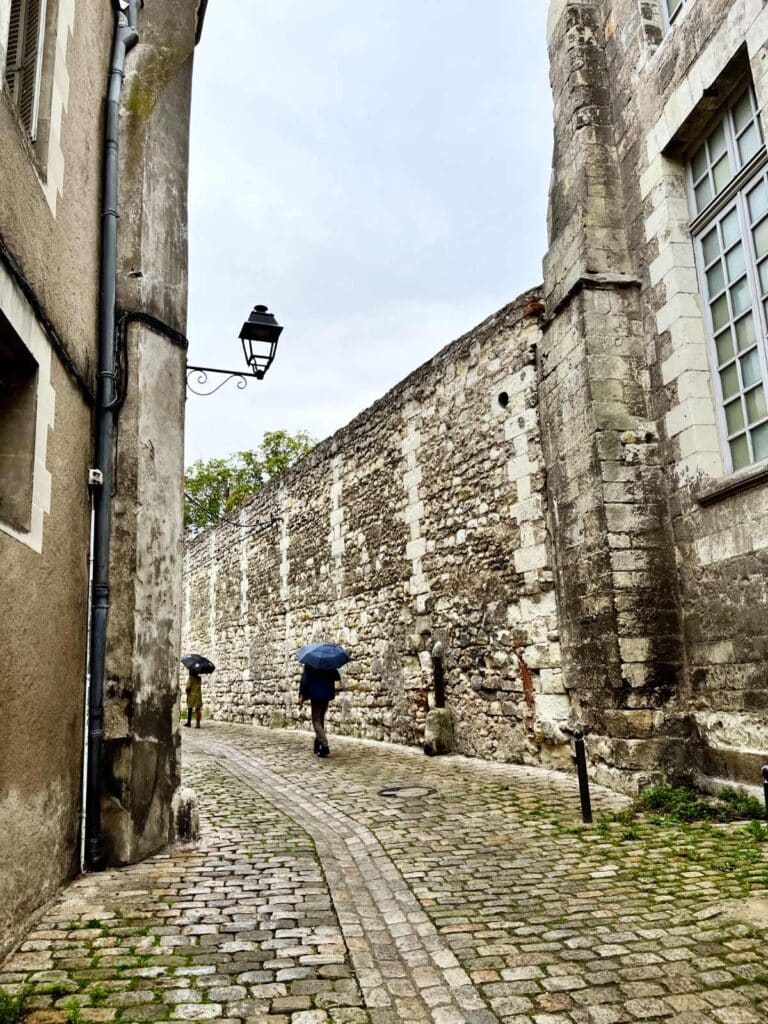
However, not much of the amphitheatre remains above ground today. Its walls were integrated in the ramparts of the city, along with the Château de Tours, and much of it was completely forgotten and demolished over the centuries.
The amphitheater was rediscovered (1855) during construction works nearby, and its cellars uncovered under the city. You can still see some of the walls and ruins along Rue du Général-Meusnier, Rue Racine and Rue de la Bazoche, which are free to explore.
4. Vieux Tours
In the center of the city of Tours, stands the medieval old town. With its timbered buildings and narrow cobblestone streets, there is much to explore.
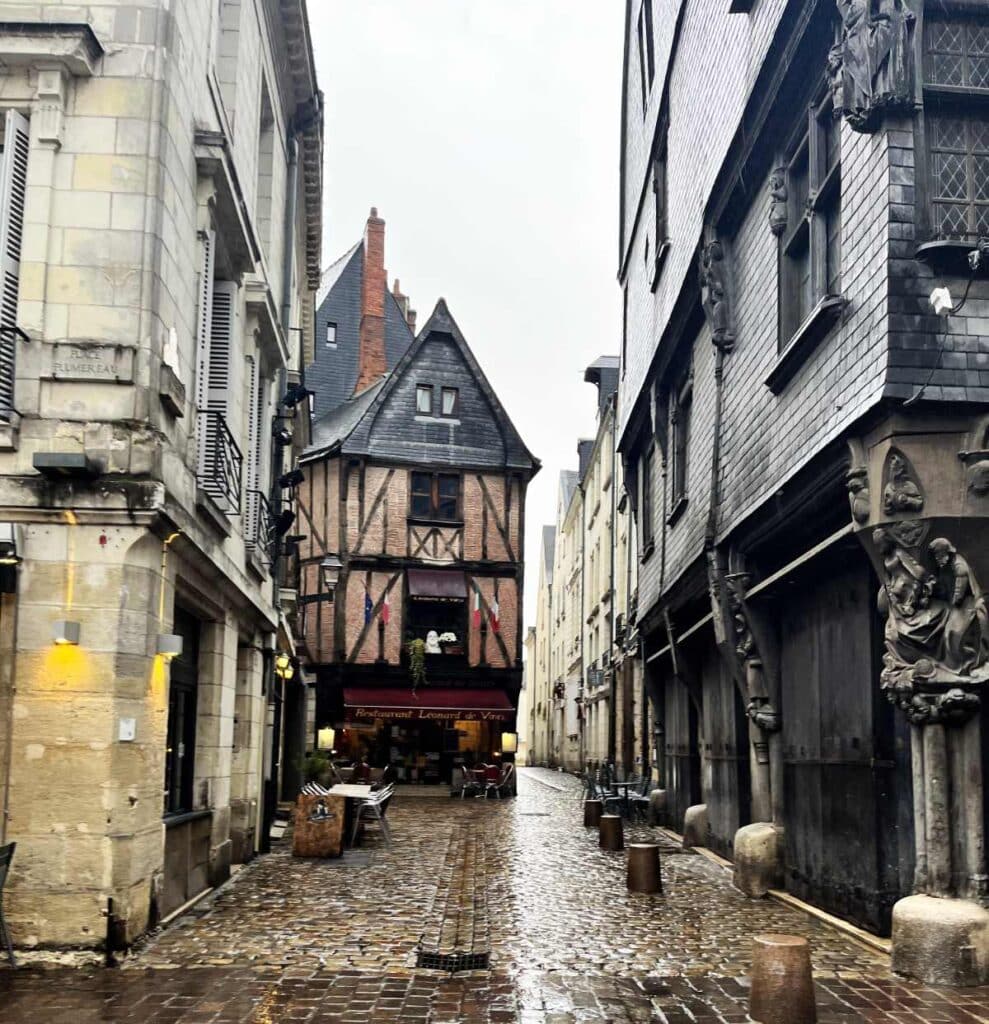
Notable streets in the area are Rue de Colbert, Rue de Commerce and Rue de Grand Marché, all of which are lined with tiny shops and restaurants.
5. Place Plumereau
Place Plumereau in the center of the old part of Tours is a large square that is lined with restaurants.
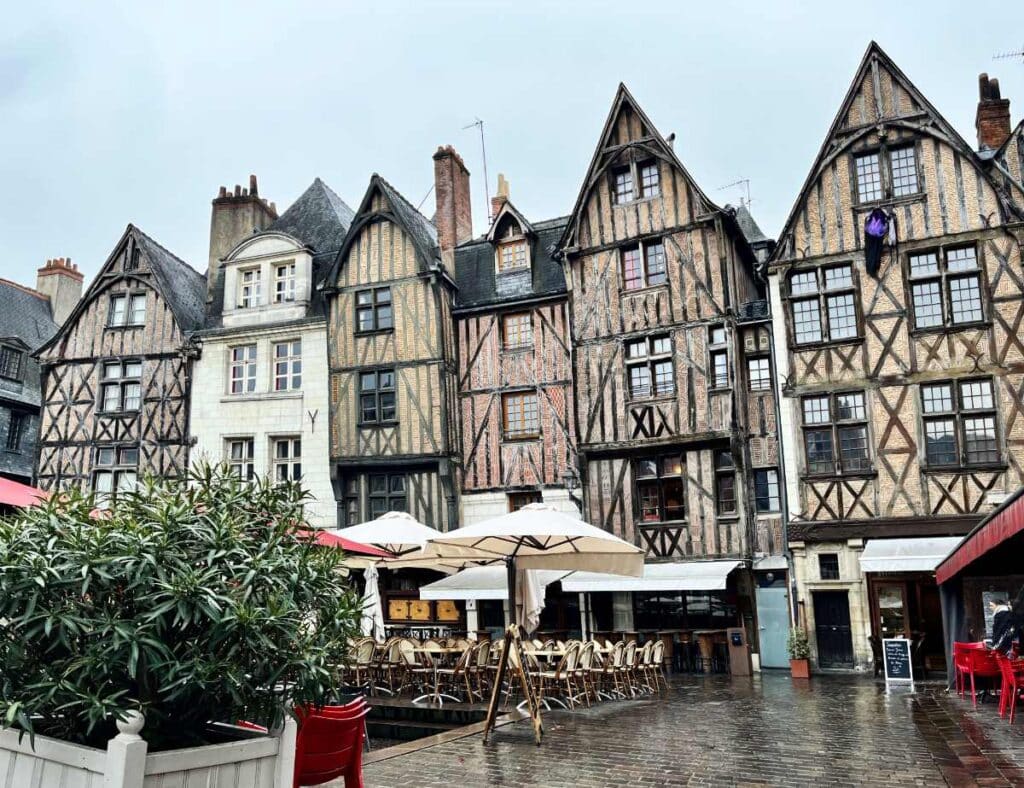
It is a bustling part of town that gets very busy in the evening, so head over early if you are looking for dinner and a prime spot to watch all the activity.
6. Tours Charlemagne
The Charlemagne tower in Vieux Tours is a remnant of an old basilica dedicated to Saint Martin of Tours . Saint Martin was the local Bishop of Tours from the 3rd century who is heralded as one of the patron saints of France .
Known as Martin the Merciful, he converted to Christianity at a young age and was later sanctified.
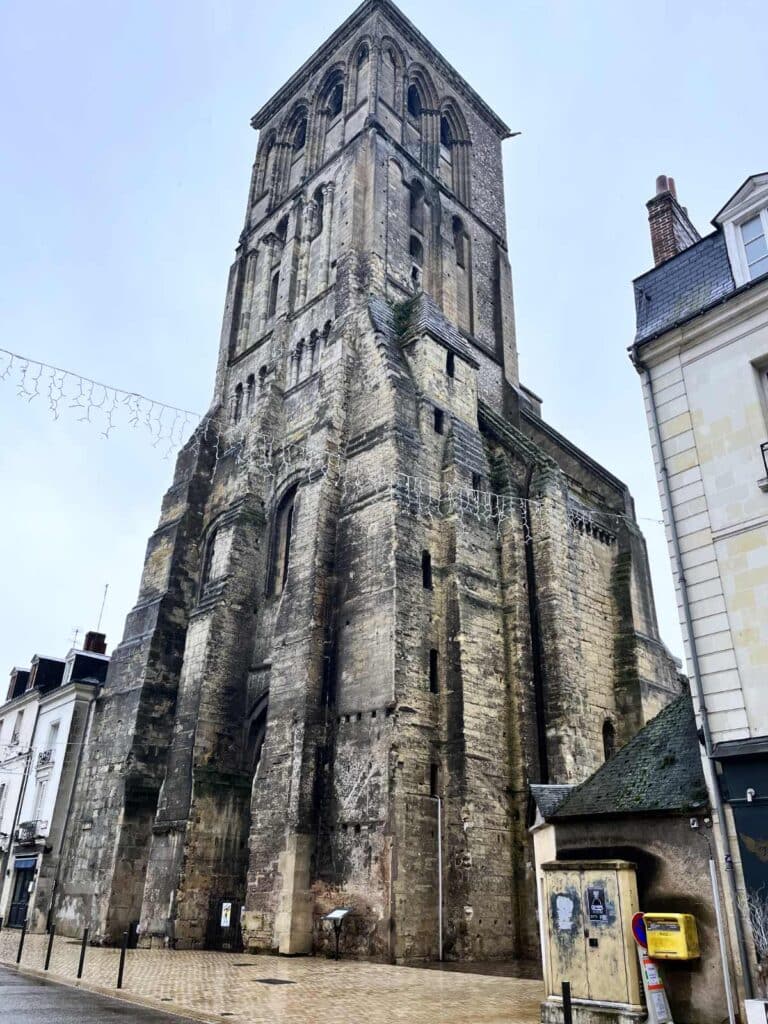
The name of Tour Charlemagne however comes from the 8th century, when Emperor Charlemagne buried his 4th wife Luitgarde d’Alémanie near the tomb, after she died during his stay in Tours.
The Tour Charlemagne is the start of the Circuit Saint Martin to follow the footsteps of Saint Martin. Signs around the city note that the “Pilgrimage of Tours is one of the oldest of Christendom along with ones in Rome, Jerusalem, and Santiago de Compostela”.
7. Basilique Saint-Martin
A few meters across the street from the Tour Charlemagne is the Basilique Saint-Martin. With gold decorations on its dome, it is another stop on the Circuit Saint-Martin.
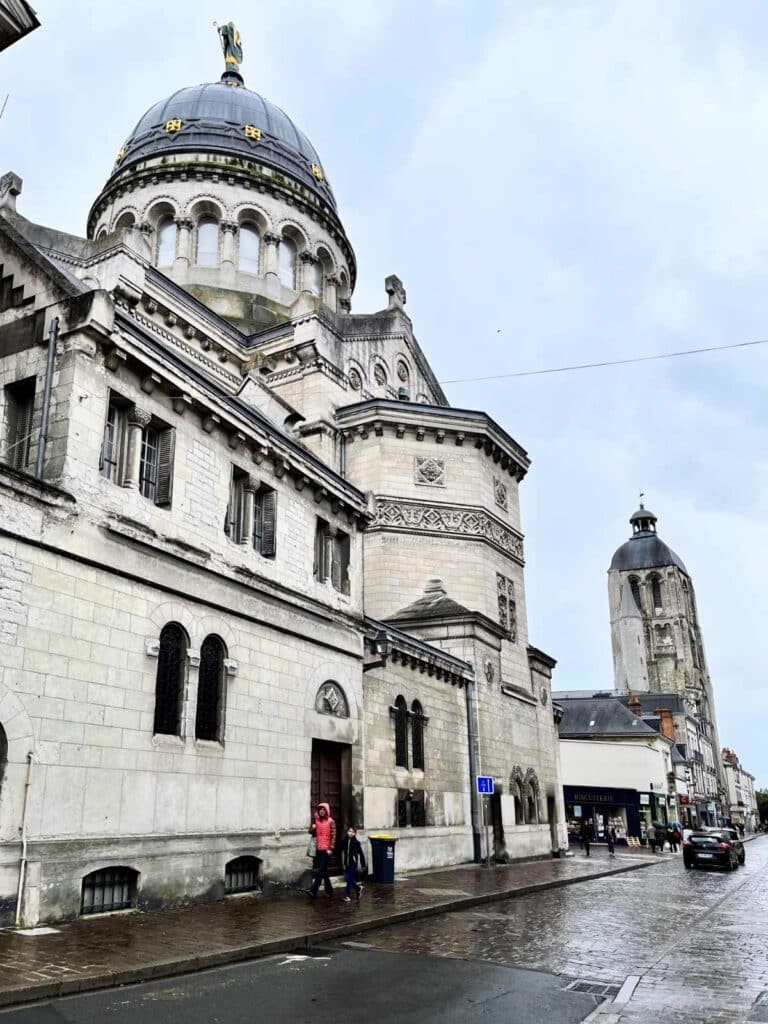
The present church was built between 1886 and 1924 in a neo-Byzantine style, on the site of a church which dated back to the 6th century.
8. Toue River cruises
Around Tours you will find the traditional flat-bottomed wooden boats called the “Toue” which sail on the Loire and Cher rivers.
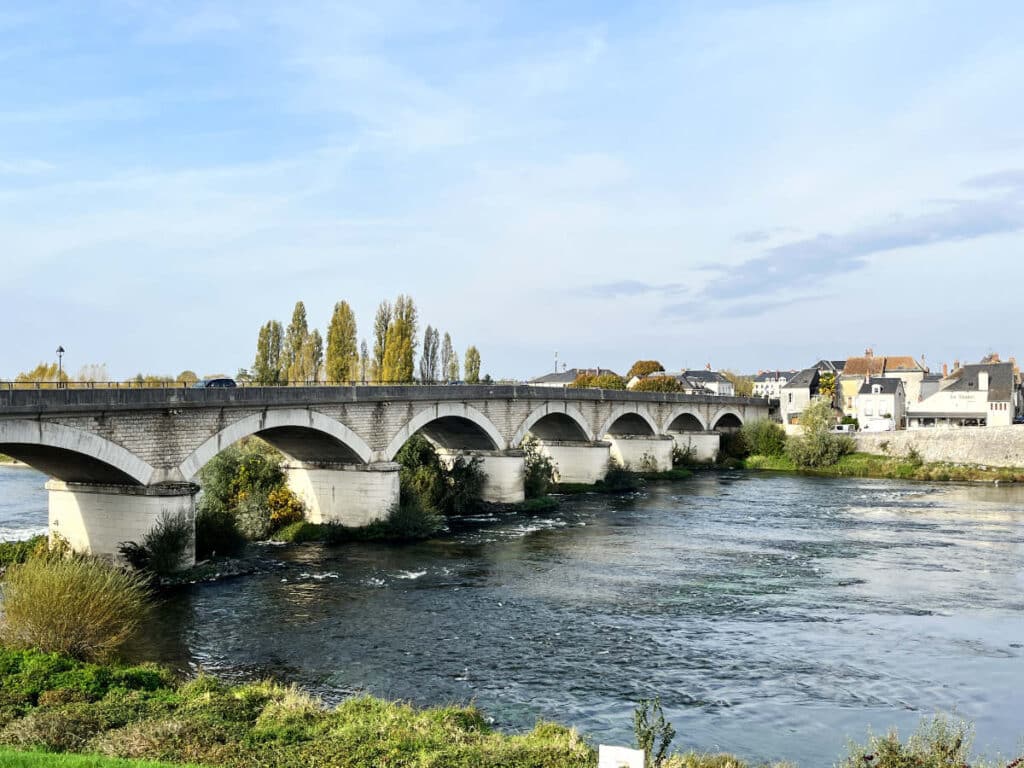
The boats usually sail in the summer time, offering commentary about the local history, stories and other anecdotes while floating past beautiful landscapes. You can catch a toue on the quais along the Loire, from the center of Tours.
9. Musée des beaux arts
The Musée des Beaux-Arts de Tours is located in a former palace of the Bishops of Tours, near the Cathedral St. Gatien. The museum has a wide collection of paintings from the Middle ages, when Tours was at its height in terms of cultural influence.
There are also many sculptures dating back to antiquity and the Roman era, as well as more recent paintings from the 18th and 19th century. The museum is also famous for its model of Fritz, a stuffed Asian elephant that was shot when it became uncontrollable during a Barnum & Bailey circus parade in Tours in 1902.
10. Botanical garden
Established in 1843, the Jardin botanique de Tours is a large botanical garden holding over 2000 types of trees and plants.
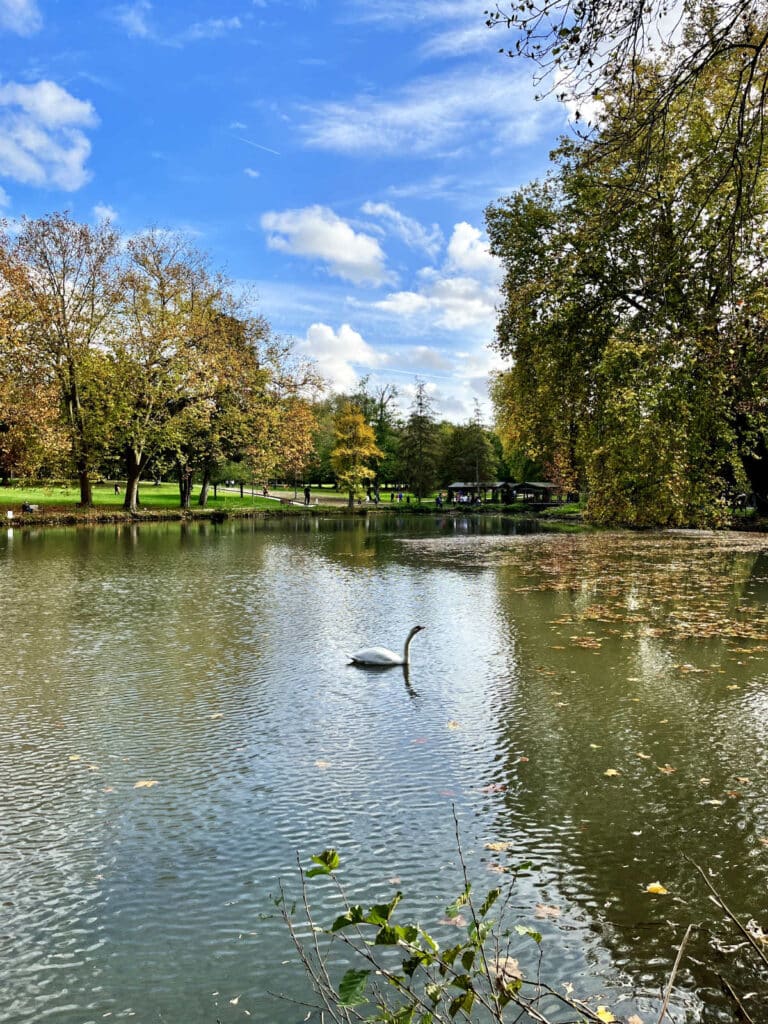
Inside the garden are several greenhouses to allow for a wide variety of plants to be grown, including several exotic species and medical plants. The gardens are open daily, although may be closed on holidays.
11. Halle de Tours
The Halle de Tours is a large French indoor market selling local specialties such as artisan breads , charcuterie , cheeses & wine from the terroir .
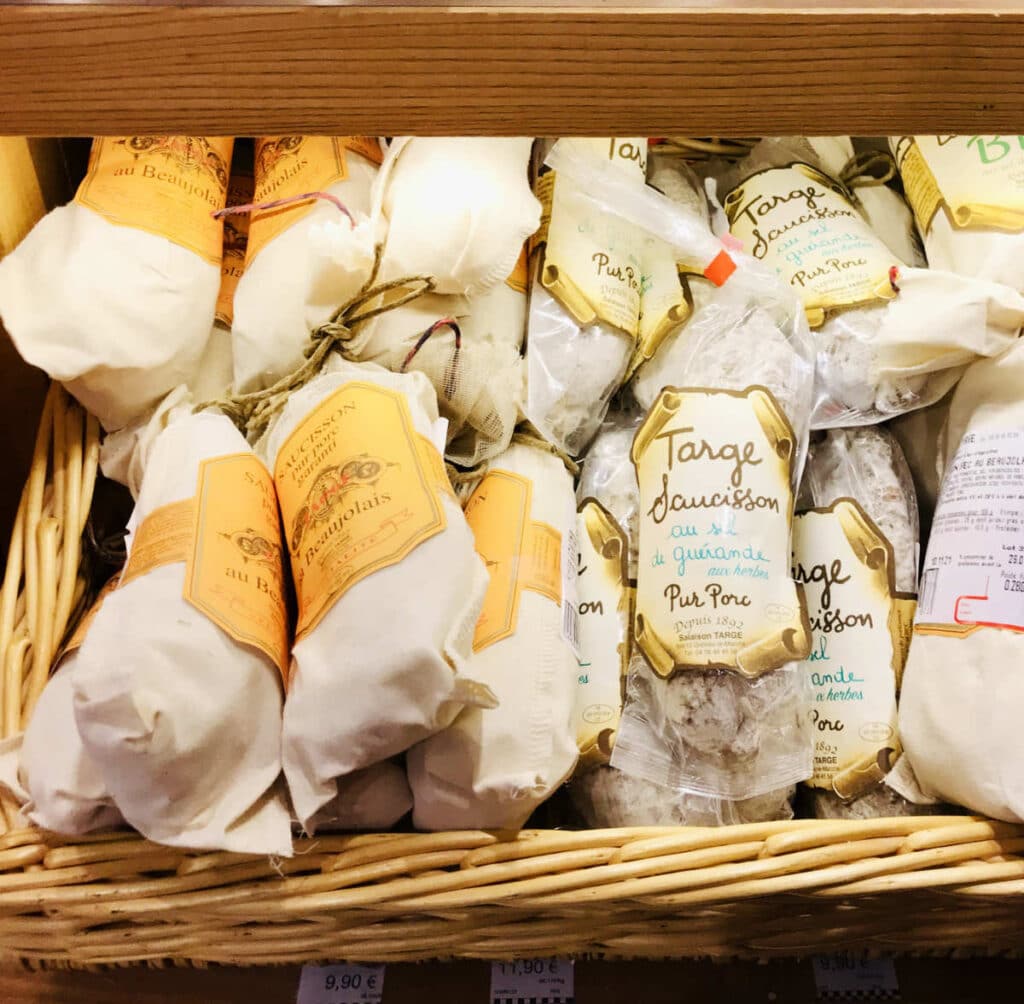
The current building dates back to the 19th century, and people flock here form all over the Loire for its gastronomical delights.
12. Château de Villandry
About 20 minutes outside of Tours, you will find the magnificent Château de Villandry and its beautiful gardens . While the other grand châteaux are a bit further away, the Château de Villandry is a lovely place to visit in the afternoon, after visiting the city center of Tours.
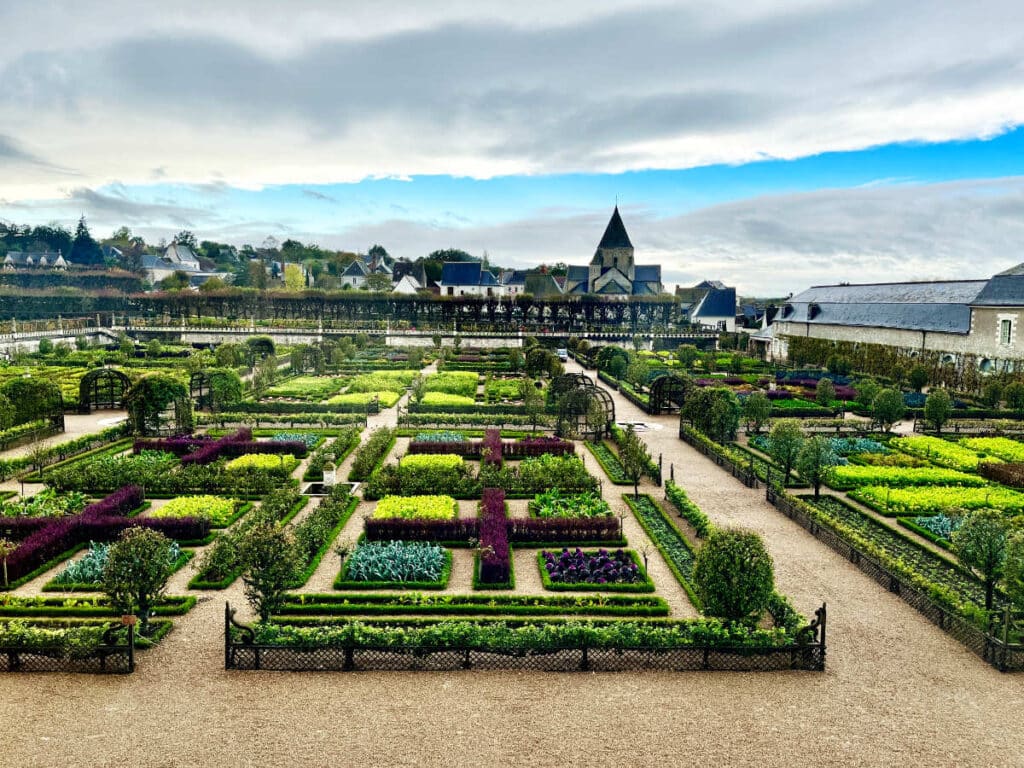
Dating back to the 10th century and the Middle ages, the fortress that once stood here was known as the “Coulombiers”. It is believed that the French King Philippe Auguste and English King Richard the Lionheart met at Villandry to discuss peace terms. You can see still see the fortified castle of Coulombiers as it was during this period.
Today, the Château de Villandry is a private château with elaborate exhibitions inside, along with beautiful curated gardens and even a labyrinth maze. You can find guided tours to take you Château de Villandry f r o m T o u r s here.
13. Église Saint-Julien de Tours
A church has stood on the site of the Église Saint-Julien de Tours since the 6th century. The current building dates mostly back to the 13th century after it was destroyed and rebuilt many times (including during WWII).
14. Harry Potter store (Les Trois sorciers)
If you are a Harry Potter fan, you will want to check out Les Trois sorciers shop in Tours. It is located on Rue du Commerce and is dedicated to toys, books, and tricks for all sorts of sorcery and witchery.
15. Musée du Compagnonnage
Just in front of the Église Saint-Julien de Tours church is the Musée du Compagnonnage.
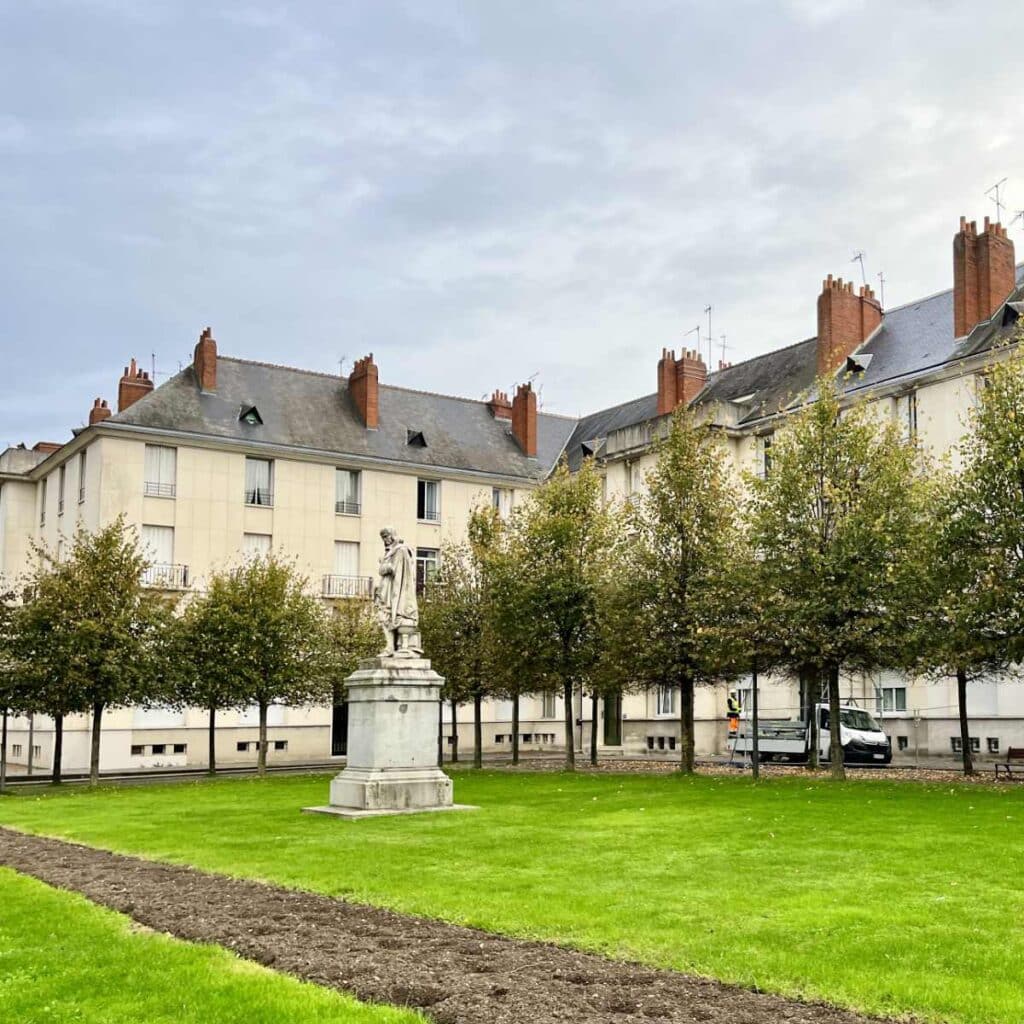
It is a museum displaying crafts & exhibits relating to the trade-guilds and their history. Skilled labor works such as stone sculpting, woodcarving, etc are located in what used to be an abbey attached to the church, along with temporary exhibitions.
16. Hotel Gouin
An emblematic building in the city of Tours is the Hotel Gouin. It is a 15th century hotel particulier (private mansion) that was the home of a family of silk merchants.
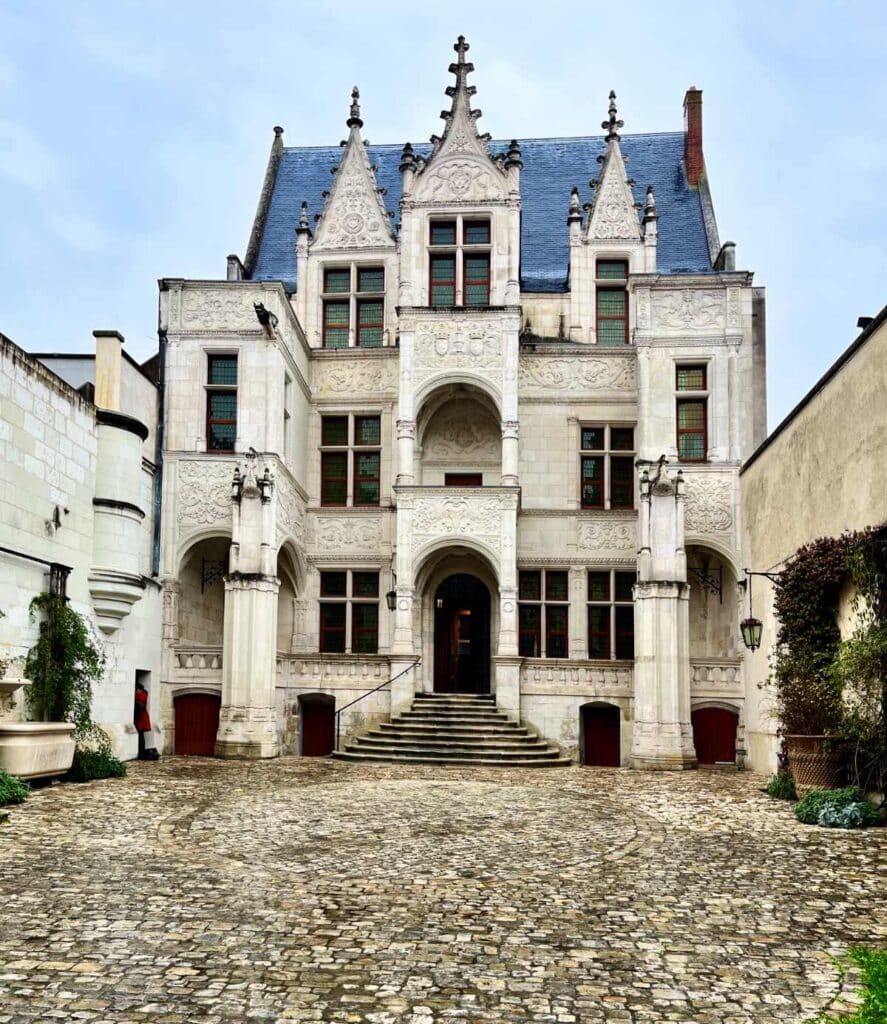
The sub-basement contains Galloroman remains, but the visible facade dates from the 16th century in early Renaissance style. Inside is an exhibition center featuring various exhibitions and events for limited periods of time.
17. American Monument Fountain
The Monument aux morts Américain de Tours was constructed by the U.S. Government in dedication to the 640,000 soldiers who served in the area during WWI.
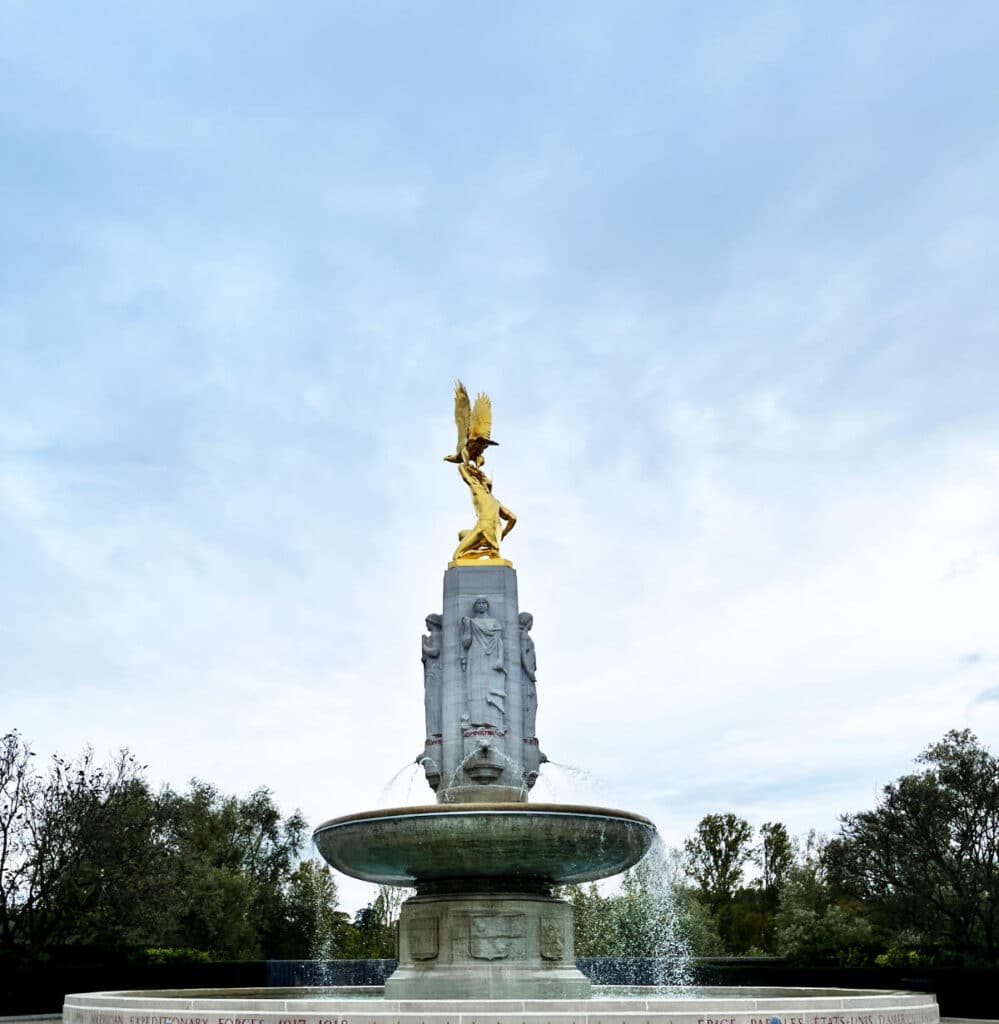
The American Services of Supply (SOS) had their headquarters in Tours, supporting the expeditionary forces that were operating across Western Europe.
This fountain with its golden eagle stands on the quai of the Loire river, right next to Pont Wilson bridge, in dedication to their bravery.
18. Resistance and Deportation Memorial
Right next to the American monument stands the Resistance and Deportation memorial for those who fought and lost their lives during WWII.
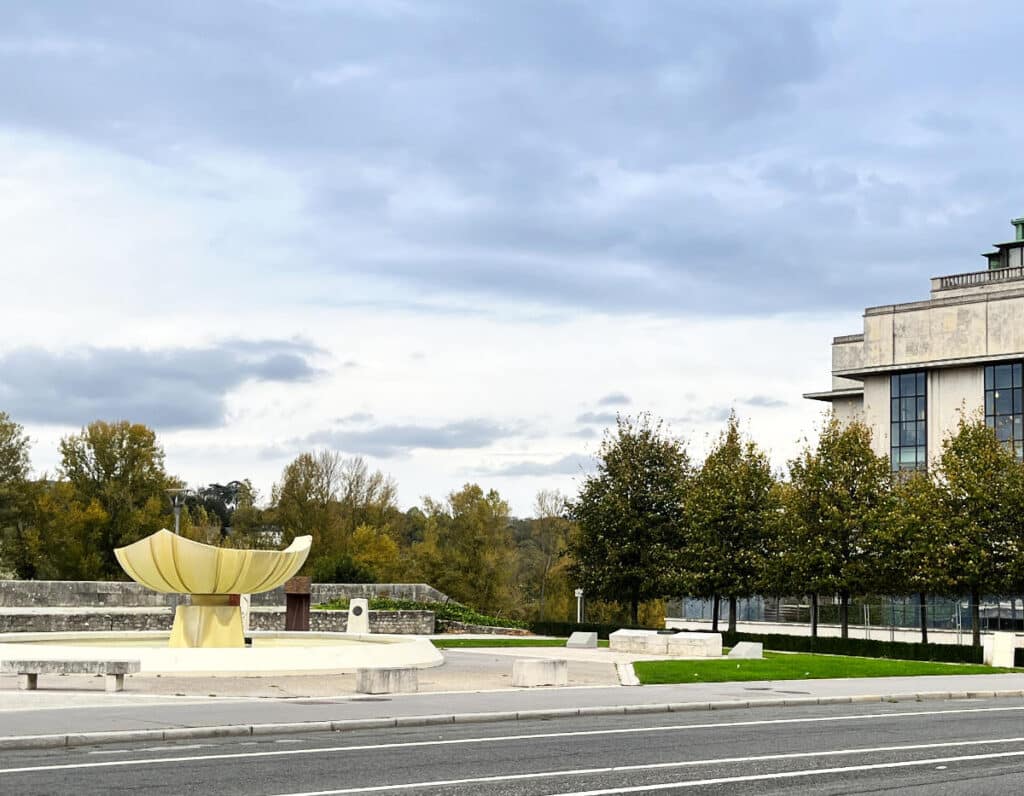
On the banks of the river Loire, it is a beautiful place to reflect on the past and the history that has occurred on the city’s shores.
19. Loire Valley châteaux
The Loire Valley is famous for its multitude of châteaux and the city of Tours is right in the thick of things.
The châteaux of Chambord , Blois , Chenonceau , Chaumont and Chéverny are within 1 hour, and the city of Amboise (with the Château Royale d’Amboise ) is also within 30 minutes. The various Loire Valley châteaux are officially recognized on the UNESCO world heritage list .
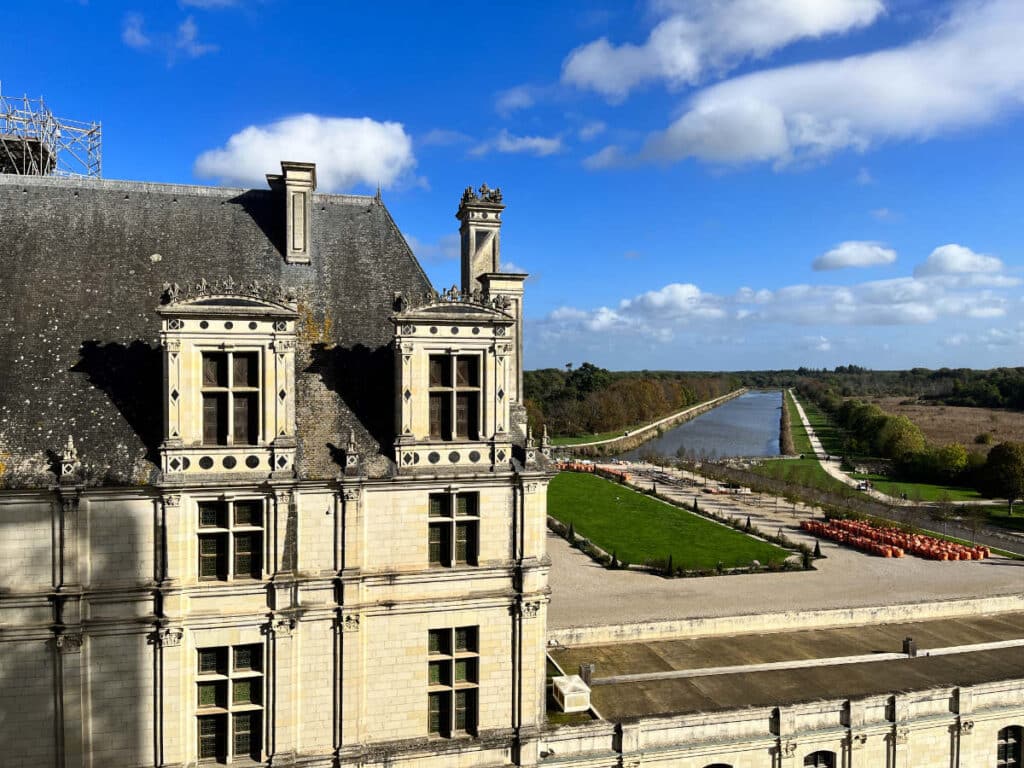
Along with those famous châteaux and royal palaces , there are several smaller châteaux for nobility who lived in the area and built housing near the seat of power during the Renaissance.
In all, you can easily spend a week in the area, going from château to château and exploring the area. (For those travelling with children, there is also the Zoo de Beauval at Saint-Aignan within 50 minutes of Tours, if you want to a break between the châteaux.)
One of the local specialties in and around Tours is the Loire valley wines. Although not as famous as other French wines , they have a following of their own and are gaining in popularity.
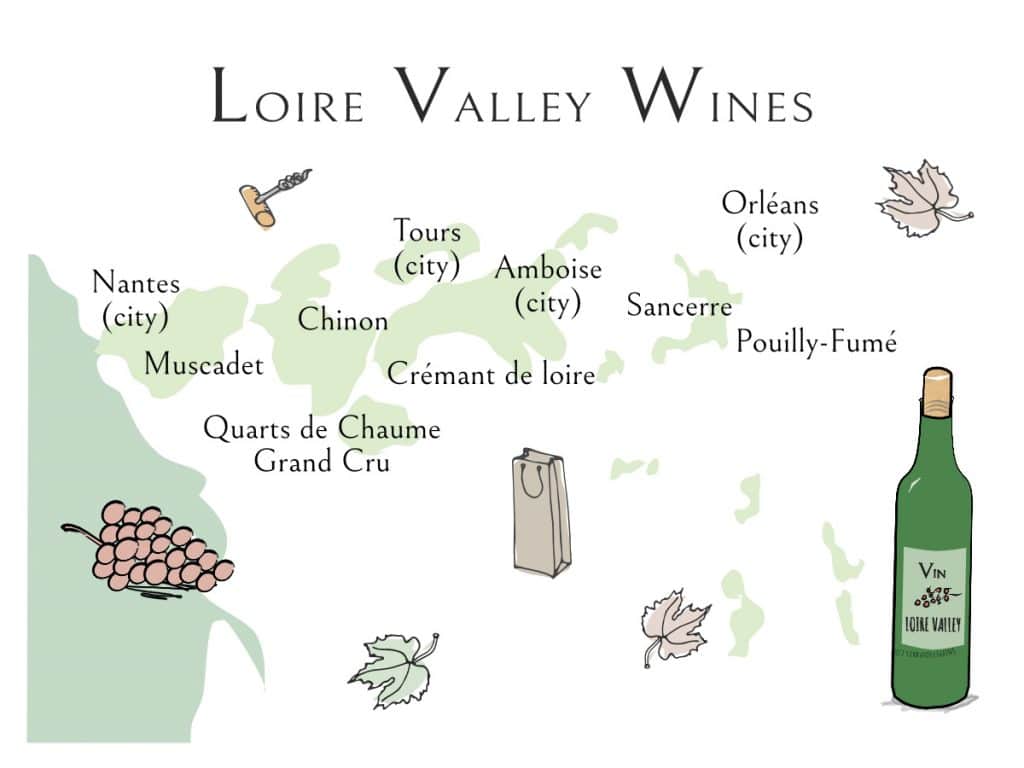
The Loire Valley mostly produces white wines , but there are some red wiens as well. The area is the second-largest concentration of sparkling-wine producing vines in France after the Champagne region.
Having French royalty like François I and Catherine de Medici nearby as well as the British royals, meant that their courtiers and followers all got used to drinking wines from the Loire Valley, and effectively marketed the wines to other nobles and royals around France and Europe.
There are many wine-tasting tours that will combine with chateaux visits in the Loire Valley.
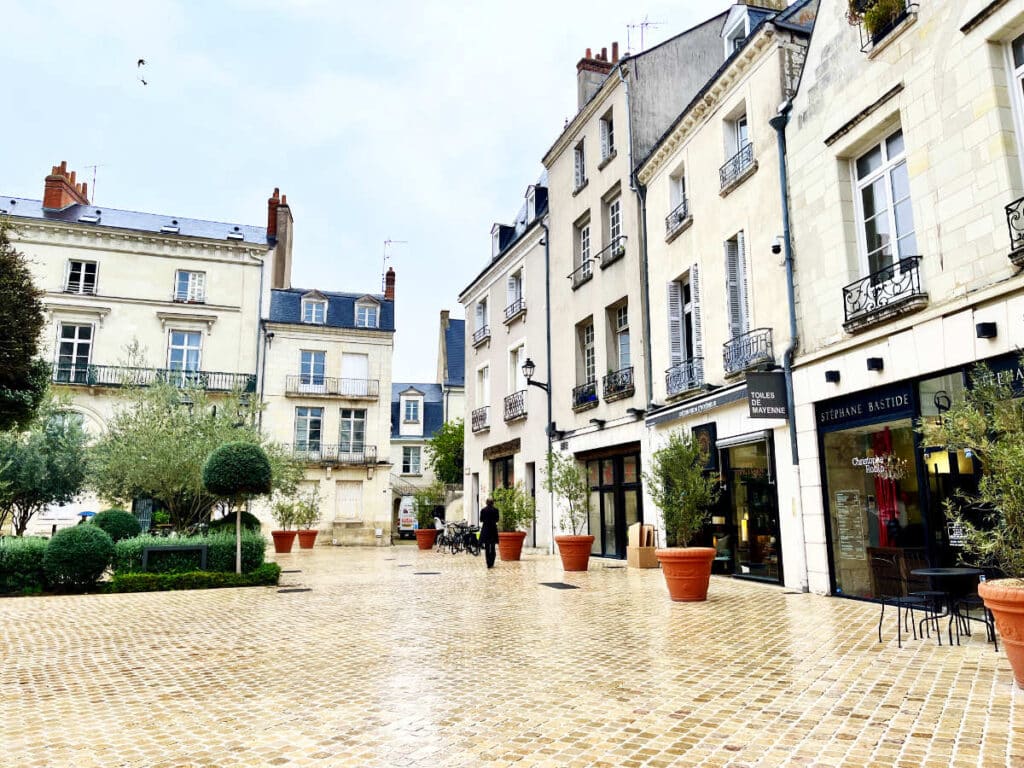
How to get to Tours?
The city of Tours is quite accessible from Paris by car and by train. It takes approximately 2h15 to drive from Paris depending on traffic. By train, you can take a TGV high speed train from Paris’s Montparnasse station to the city of Tours, which takes approximately 1 hour.
There are also various tour options leaving from Tours which head to the Château de Chambord and Chenonceau and other sights in the area. Certain tours combine wine-tasting and sightseeing. You can see the tour options for the city of Tours here.
How easy is it getting around?
The city of Tours is quite walkable, and there are several large parking lots that you can park your car at and visit all the centrally located sights. One of the larger parking lots is right under the quai in front of Pont Wilson bridge. From there you will find the Cathedral of Tours and the Château on one side, with the Old Tours on the other.
How many days should you spend?
I would suggest spending at least a day in Tours, to explore its different streets and neighborhoods. You can choose to base yourself here and stay overnight for a few days as there are several châteaux and vineyards in the surrounding area.
Where should you stay?
There are several wonderful hotels in the Tours city center, near all the sights and shops. Some recommended hotels are:
- €€€ – Hotel Du Cygne Tours
- €€€€ – Oceania L’Univers Tours
- €€€€€ – Les Trésorières hotel
You can also choose to stay in nearby Amboise or Blois which are a bit closer to the other famous châteaux of the Loire.
If you enjoyed that article, you may like to read more about traveling around the Loire Valley . A bientôt!
You Might Also Like
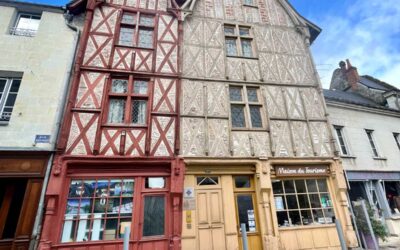
Montrichard: Mushroom farms, & cave dwellings in the Loire Valley
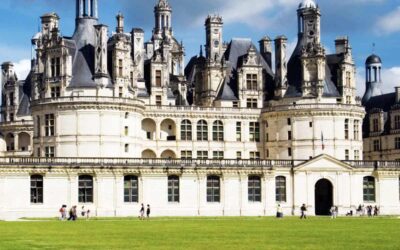
Château de Chambord: The glorious Royal castle that was never lived in (Loire Valley)

Château d’Amboise: The ancient castle still claimed by the French Royals
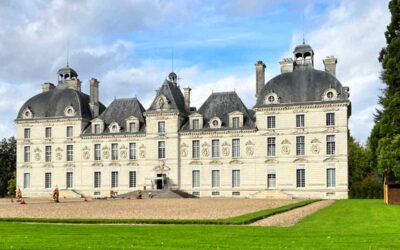
Château de Chéverny: History, art and hound dogs in the Loire Valley
Leave a reply cancel reply.
- Common Questions
- Paris & Île-de-France
- Alsace & Lorraine
- Bourgogne-Franche-Comté
- Bretagne & Normandy
- Auvergne Rhône Alpes
- Loire Valley
- Northern France
- Nouvelle Aquitaine
- Provence & French Riviera
- French Language
- French Holidays
- Facts and history
- French Etiquette
- Get the Look
- French Music
- French Parenting
- Moving to France
- Appetizers & Starters
- Main dishes
- Side dishes
- Newsletter archives
Explore locations
All locations, most beautiful villages, natural monuments, theme parks, château de tours, informations.
Opening Period: The displayed opening hours are for Spring and Summer seasons. Opening hours: They may change depending on the season. Price: Please make sure to have cash on hand when visiting places. Some places only accept cash.

Please be aware that making a phone call through this phone number may result in additional charges. These charges are determined by your phone carrier and may vary depending on your calling plan and location. We encourage you to consult your carrier's terms and conditions for detailed information on call rates and potential fees.
The Château de Tours is a castle located in the city of Tours, France. It was built in the 11th century and has been expanded and renovated several times over the centuries. It served as a royal residence for French kings during the Renaissance period and was also used as a prison during the French Revolution. Today, the castle houses the Museum of Fine Arts of Tours, which features an extensive collection of paintings, sculptures, and decorative arts from the Renaissance to the modern era. The castle itself is also open to the public for tours and provides visitors with a glimpse into the history of the region and the role that the castle has played in it over the centuries.
Océanopolis
Planet ocean montpellier, château de versailles, château de chambord, château de chenonceau, cathedral notre-dame de strasbourg, cathedral la major de marseille, cathedral sainte-cécile d'albi, eiffel tower, louvre museum, orsay museum, zoo de la flèche, zooparc de beauval, zoo de la palmyre, ansouis village, yvoire village, yèvre-le-châtel village.

Voir le panier Commande
- Pas de produit dans le panier.
Sous-total: 0.00 €

- VIDÉOTHÈQUE
OMBRES CHINOISES
- Claire Chevrier – SCENERY
- Chloé Jeanne – Présence sensible
- EXPOS TERMINÉES RÉCEMMENT
- HORAIRES & TARIFS
- PLAN D’ACCÈS
- L’ANTIQUITÉ
- LE MOYEN ÂGE
- LE CHÂTEAU ROYAL
- LA RECONVERSION DU SITE
Visites commentées « Ombres chinoises » tous les samedis à 15h. Prolongement de l’expo Claire Chevrier – SCENERY jusqu’au 16 juin 2024

Claire Chevrier – SCENERY
Claire Chevrier se consacre à une recherche photographique qui interroge l’espace et la place de l’homme. Elle figure parmi les artistes françaises les plus actives de la scène de la photographie contemporaine. Du 9/2/2024 au 16/6/2024

Chloé Jeanne – Présence sensible
Tout s’est amorcé ici, en Val de Loire. Dans ce paysage qu’habite Chloé Jeanne, aux bords de ce fleuve qui découpe la France en deux. Cette présence sensible commence là, dans l’observation et surtout dans l’expérimentation que l’artiste fait de son environnement de vie. Du 12/1/2024 au 14/4/2024
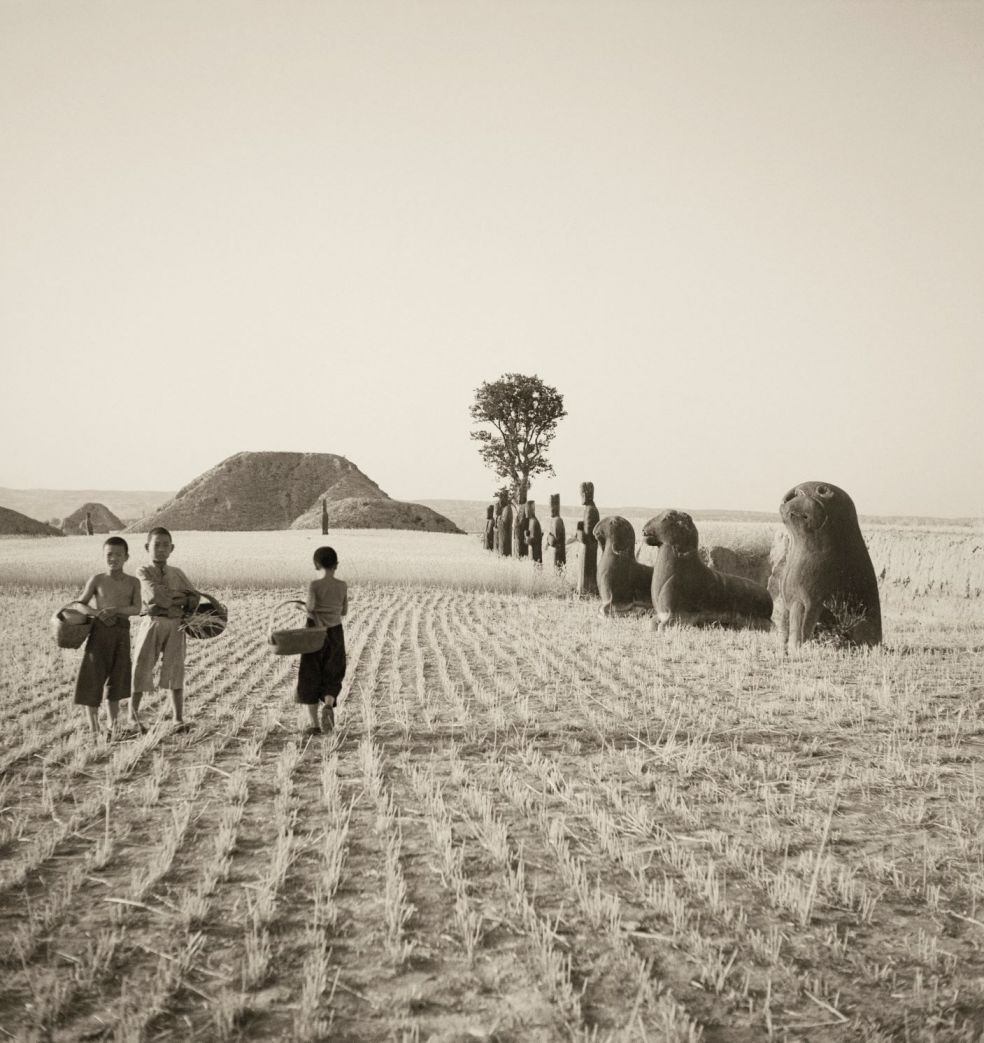
Célébrant soixante ans d’échanges diplomatiques entre la France et la République populaire de Chine, « Ombres chinoises. Sous l’oeil des diplomates », présentée au Château de Tours du 24 novembre 2023 au 19 mai 2024, met en lumière les oeuvres de deux grands photographes, aujourd’hui conservées dans les Archives diplomatiques françaises. Du 24/11/2023 au 19/05/2024

Jeu de Paume
Lieu de référence pour la diffusion de l’image contemporaine sous toutes ses formes, le Jeu de Paume a également pour mission d’assurer la valorisation de la photographie à caractère historique — donations faites à l’État et fonds d’archives conservés par des institutions publiques…
Expositions
Vous pourrez découvrir sous cette rubrique les expositions qui sont actuellement présentées sur les quatre niveaux du Château et pour les nostalgiques se rappeler les artistes qui nous ont fait l’honneur d’y montrer leur travail au cours des dix dernières années.
Nous vous invitions à découvrir sous cette rubrique notre boutique et les différents ouvrages ou autres produits liés à nos expositions que vous pouvez commander en ligne ou que nous tenons à votre disposition à l’accueil du Château de Tours (du mardi au dimanche 14h à 18h) .

The Good Life France
Everything You Want to Know About France and More...
Loire Valley Chateau Tours
- Tours in France

With its majestic chateaux, historic towns and rolling vineyards, the Loire Valley is one of the world’s best-known World Heritage Sites listed by UNESCO. Think magical properties such as Chenonceau, Chambord and Cheverny; towns like Blois, Amboise and Orléans; and internationally renowned wines such as Chinon, Saumur and Vouvray.
Far more than just a collection of fancy aristocratic homes, the UNESCO-listed area extends for 280km along the central section of the river, a ‘cultural landscape’ that combines history, heritage and architecture with the flora, fauna and rural landscape that borders France’s longest river.
So if you really want to get under the skin of this captivating area, it pays to take a tour with an insider who can bring every place zinging vividly to life. Enter Loire Valley Chateau Tours run by husband and wife team Graham and Jacqueline. After careers in Britain’s National Health Service, in education and in retail, the couple moved to France just before Brexit to run a luxury Chambre d’Hôte (guest house) and run tours which take in the most enchanting castles of the Loire Valley.
Tour the Chateaux of the Loire Valley

Tour guests stay at their home in the tranquil village of Ranton, half an hour from the medieval town of Chinon. Built in the 18 th century from local Tuffeau stone – building material for the Loire Valley’s signature white chateaux – Maison de Lavande was originally a winemaker’s house and the grape press can still be seen in their underground wine caves.
Tastefully renovated with contemporary but homely furnishings, Maison de Lavande features exposed stone walls and A-framed beams alongside modern facilities and many luxury touches. Relax in the indoor sitting room, chill out in the large garden, or sink into the bubbles of the Jacuzzi.
Guests have a choice of two small group tours – no more than six people – to ensure that everyone receives the same personal service and that guests can get to know each other and share their impressions and experiences of each site.
Six-day tour of the Loire Valley chateaux

Book the Six of the Best tour for a six-day adventure to discover some of the Loire Valley’s most iconic castles and gardens. After settling in to your accommodation at Maison de Lavande, your first night’s dinner is in an atmospheric restaurant in Montreuil-Bellay, listed amongst the elite band of Plus Beaux Detours de France.
Next day you set off by air-conditioned private transport to visit the moated gem of Château d’Azay-le-Rideau, followed by nearby Château d’Ussé, inspiration for the Sleeping Beauty fairy tale. Tour the gardens designed by André Le Nôtre of Vaux-le-Vicomte and Versailles fame and taste a range of Loire Valley vintages.
Ussé and Azay-le-Rideau are both utterly magical, but the chateaux step up somewhat in size and grandeur over the next two days. With its elegant arches spanning the river Cher and its formal gardens designed for Catherine de Médici and Diane de Poitiers – wife and mistress of French King Henri II – the Château de Chenonceau is one of the most visited in the Loire Valley. Next stop is Amboise with free time to visit the Royal Chateau, last resting place of Leonardo da Vinci, or maybe his final home at the bijou Château de Clos Lucé just a short walk away where many of his inventions are reproduced as working models in the house and shady park.
After an overnight stay in an elegant town house beneath the castle, you will leave Amboise for the Château de Chambord , entertainment palace for Renaissance king François I. Like statistics? Chambord goes into overload with 440 rooms, 282 fireplaces and a chimney for every day of the year! And don’t miss the chance to try out the double-helix staircase thought to have been designed by Da Vinci himself. One person can go up and another go down at the same time without ever meeting!
From Chambord with its vast park and hunting forest, you’ll drive to the Château de Cheverny, home to a famous pack of hunting dogs and the inspiration for Belgian cartoonist Hergé for the Chateau de Mounlinsart in the series of books about boy detective Tintin.
After overnighting again back at Maison de Lavande, your last full day starts in the medieval town of Chinon below the walls of the medieval fortress, a favourite home of Plantagenet King Henry II and his wife Eleanor of Aquitaine. After lunch in a bistro, you will make the short drive to Château de Villandry famed for its outstanding formal gardens. Never thought of planting vegetables amongst your flowers and topiary? You’ll think again after wandering the paths of this horticultural haven.
9-day tour of the Loire Valley Chateaux

If you have more time to spare, book instead on to Seventh Heaven , a 9-day tour that offers additions to the 6-day itinerary. Discover the lesser-known town of Richelieu, founded by Cardinal Richelieu, minister to King Louis XIII and chief villain in Alexandre Dumas’ book, The Three Musketeers . Browse the street market to soak up the colours and aromas of the Loire Valley’s local produce, then head to the medieval Château de Rivau for lunch and a stroll round its 14 individual gardens themed to famous fairy tales such as Tom Thumb and Rapunzel.
Enjoy a free morning in Saumur to visit the hilltop castle, browse the boutiques or maybe take a river cruise. Then discover a range of liqueurs at an artisan distillery and visit a wine domaine producing delicious Crémant de Loire sparkling wine.
You’ll also spend a day visiting three very different but equally enchanting villages – Montsoreau and its antiques market; the flower-fringed streets of Candes-St-Martin both Plus Beaux Villages and Montreuil Bellay with its medieval chateau.
All tours include collection and return to local airports at Tours or Poitiers, or train stations at Chinon, Tours or Saumur, as well as private en-suite accommodation, all breakfasts and a full complement of lunches, dinners or picnics. Tours run from early April to late October and dates can be found on the website, but Graham and Jacqueline endeavour to run similar tours for groups of 2-6 guests at other times on request.
In an area where history oozes from every stone, where the vineyards tell a tale and the wine is divine, and flavour flows from every succulent mouthful, the expertise offered by Loire Valley Chateau Tours will help to satisfy all your senses, making sure you get the very best out of your visit to this enchanting area.
Find out more and book your tour at Loire Valley Chateau Tours: loirevallechateautours.com
Latest Posts

How to spend two days in Nantes

The life and times of King Louis XIV

What to see and do in Vence, Provence

The art of Toulouse-Lautrec

The spring is sprung newsletter from France


Expat relocation and administration services for your move to France
Related posts.

Loire Valley Wine Tours

Provence Lavender field day tours

Paris, Normandy, the Loire Valley and Bordeaux by train

Customised tours of the Languedoc
Get updates and stay connected - subscribe to our newsletter.
Everything You want to know about france and more…
The Good Life France is the leading independent website about all things French from travel to culture, gastronomy to property and practical guides & more…
Let's get social
Visiting the château
Home » Discovering » Visiting the château
Placed on the first list of historical monuments in France in 1840, and a UNESCO World Heritage Site since 1981, Chambord is one of the most amazing constructions of the Renaissance. Far from being a residential palace or a hunting lodge, Chambord embodies a true utopia: that of a brilliant work of art that has yet to reveal all its secrets. In Chambord, you will discover an ideal place, made of harmony and modernity. Because preserving the heritage of mankind is not a fixed attitude, but on the contrary, a perpetual questioning to make it sensitive to the largest public. Thus, each year, new developments and projects are presented to visitors and a rich program of cultural events punctuates the seasons.
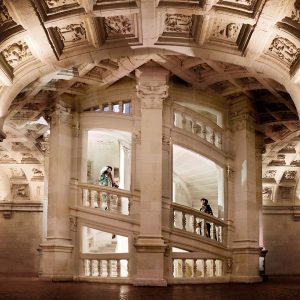
From the moment you cross the 32-kilometer-long surrounding wall, as you enter the heart of a world apart, to the moment you come face to face with the genius architecture imagined by Francis I and the inspiring artist Leonardo da Vinci, it is an incomparable impression that seizes the visitor. Then, each visitor is invited to compose his or her own itinerary on the entire estate, from the Place Saint-Louis to the castle’s terraces, including the royal dwelling, the 18th century kitchens, the Ormetrou vineyards, the permaculture vegetable gardens, the Maréchal de Saxe’s stables, the formal gardens and the Grand Promenade!
1519. A palace emerges in the heart of the marshy lands of Sologne. François I, a young king, ordered its construction. It is a monumental architectural work that the king likes to show to sovereigns and ambassadors as a symbol of his power, written in stone. The plan of the castle and its decorations are designed around a central axis: the famous double revolution staircase, inspired by Leonardo da Vinci, an ascending spiral that leads from the first floor to the terraces on which the Lantern Tower culminates.
The end of the works in the 17th century
It was not until the reign of Louis XIV that the building was completed. It was also at this time that the castle’s surroundings were developed. Stables were built outside the castle and the river Cosson, which crosses the park, was partly channeled to clean up the site. The Sun King resided several times in the monument in the company of his court. Molière even presented his most famous comedy, Le Bourgeois gentilhomme, for the first time at Chambord on October 14, 1670, in the presence of Louis XIV and the court.
The 18th century renovations
In the eighteenth century, work is undertaken to develop the interior of the castle. Louis XV used it to house successively (between 1725 and 1733) his father-in-law Stanislas Leszczynski, king of Poland in exile, and the Marshal of Saxony, as a reward for his military victory at Fontenoy (1745). The need to bring warmth and comfort to the building led the various occupants to permanently furnish the castle and to have the apartments fitted with woodwork, parquet floors, false ceilings and small cabinets.
During the Revolution, the castle was looted, the furniture was sold but the monument escaped destruction.
In the 19th century: a private castle
Chambord knew a period of abandonment before Napoleon donated it in 1809 to Marshal Berthier in gratitude for his services. Berthier only stayed there for a short time and his widow quickly asked for permission to sell this large residence in poor condition. The Chambord complex was then offered in 1821 by a national subscription to the Duke of Bordeaux, grandson of King Charles X. The political events that led to his exile did not allow him to live in his castle, which he named “Count of Chambord”. He only discovered his estate in 1871 during a short stay in which he wrote his famous “Manifesto of the White Flag” which led him to refuse the tricolor flag, and thus the throne. From a distance, however, the Count of Chambord was attentive to the maintenance of the castle and its grounds. He had the estate administered by a steward, undertook major restoration campaigns and officially opened the castle to the public. After his death in 1883, the estate was inherited by the Princes of Bourbon-Parme, his nephews.
20th century: Chambord, a haven for masterpieces during the Second World War
The castle and the park have been owned by the State since 1930.
In 1939, following the evacuation of the main museums in Paris, including the Louvre, thousands of works of art were sent in convoys to eleven castles and abbeys in central and western France, including Chambord. The castle, which was closed to the public, housed thousands of works of art, mostly from French public collections, in order to protect them from the bombings and the Nazis’ greed.
With 4,000m3 of crates stored in June 1944, Chambord became the largest of the 83 depots used to house works of art during the conflict. Iconic works such as Leonardo da Vinci’s Mona Lisa, Delacroix’s Liberty Guiding the People and The Lady with a Unicorn were hidden in Chambord.
Thanks to zealous curators and heritage officials, the national treasures made it through the war unscathed, turning Chambord into a museum of the imagination.
Research at Chambord
Intelligence des Patrimoines is an ARD (Ambition Research Development) program supported by the Centre-Val de Loire Region and carried out by the Centre d’études supérieures de la Renaissance de Tours.
In keeping with its mission to support scientific research and disseminate knowledge, the National Estate of Chambord has been involved with the multidisciplinary research program Intelligence des Patrimoines since its inception. Hosting researchers, providing resources, participating in fieldwork, and co-producing mediation tools: there are many synergies between the teams at Chambord and those in the program’s partner laboratories.
This highly ambitious scientific cooperation has already led to a number of development initiatives. Two innovative digital mediation devices have been made available to visitors to the château for the major exhibition celebrating Chambord’s 500th anniversary in 2019, in particular an interactive 3D model of its famous double-revolution staircase to help them understand its architectural layout.
Since 2020, the Compass, a top-notch digital application, has been offering visitors an enriched walk through the new circuits of the Grande Promenade.

15 must-see chateaux in France
The most alternative: château de chambord (centre-val de loire).
Take home some heritage vegetables - grown at the most dazzling of the Loire chateaux, some varieties date from the days of the Renaissance. At Chambord, the vegetable gardens cultivated on the estate since the 17th century, have been restored and there are more than five hectares of organic plots. There are fruit and nut trees, vegetables, aromatic and medicinal plants. The site, which aims to be a laboratory of innovation, also offers guided tours, permaculture workshops and weekends in the vegetable garden. Alongside the fabulous interior decor of this most majestic Renaissance chateaux, don your gardener's boots and walk in the footsteps of the kings of France.
Visit the Château de Chambord (External link)
The most surprising castle: Versailles (Ile-de-France)
Explore the Château de Versailles off the beaten track to celebrate the building's 400th anniversary. In the shadow of the King’s sumptuous Chateau and formal gardens, discover a wild side to Versailles. With 315 hectares of woodland of this former 17th century hunting reserve, it has been preserved and developed by the chateau’s managers and are now home to a biodiverse nature reserve. Wetlands have been created, pollinating beehives have been added, and species are tracked. Open your eyes and listen carefully - you're bound to come across grey herons, warblers and squirrels.
Visit the Château de Versailles (External link)
The most civic-minded: Château des Ducs de Bretagne (Pays de la Loire)
No trip to Nantes would be complete without a stop at its chateau which has stood at the heart of the medieval quarter of the former capital of the Dukes of Brittany since the late 15th century. Behind the beautiful façade, complete with sculpted decorations in the tradition of the Italian Renaissance, the 32 rooms of the museum tell the story of Nantes. And, beyond that, of other universal stories - sometimes darker ones such as the slave trade, the Second World War and industrialisation. The exceptional collections contain more than a thousand objects, some of which have been collected from local residents. The chateau has been awarded the Tourism & Handicap label.
Visit the Château des Ducs de Bretagne (External link)
The highest: Château du Haut-Koenigsbourg (Grand Est)
What an eagle's nest! Perched on the Stophanberch mountain at a height of 755m, this former stronghold of the Duke of Swabia has always been a strategic point. It’s at the crossroads of the wheat and wine routes of the north and the salt and silver routes of the south. From the north tower to the south tower, you can wander through the 1.5-hectare pink sandstone fortress and admire the impressive structure which was restored in the 19th century by an architect with a passion for the Middle Ages. Then head to the castle’s restaurant where you can enjoy medieval cuisine and organic specialities served on plates made from spelt.
Visit the Château du Haut-Koenigsbourg (External link)
The most ‘stony’: Château des Baux (Provence)
At the heart of the Alpilles, discover a fortress with a very distinguished patronage. The princes of Baux who built it in the 11th century, claimed to be the descendants of Balthasar, King of the Magi. The legend suits the spirit of this medieval chateau, a fantastic collection of remains and ruins from a tumultuous timeline in history. There is a 13th century keep and the Val d'Enfer, which now houses the Carrières de Lumière digital art centre. The village is embedded in the chateau and there are troglodyte houses. This visit takes you on a journey to the centre of the white rocks of Les Baux de Provence, which was used to build the complex. It was also used at the neighbouring ancient site of Glanum in Saint-Rémy-de-Provence.
Visit the Château des Baux-de-Provence (External link)
The Most decorative castle: Villandry (Centre-Val de Loire)
If you want to know why the Château de Villandry is called the garden of France, go to the top of the dungeon, the only part of this fortress that became a jewel of late Renaissance architecture. It's from this viewpoint that you can really appreciate one of the most remarkable gardens in France. Crosses and heart shapes formed by thousands of plants are enclosed by green boxwood hedges that are trimmed to perfection, enhancing the colours of the seasons: from the ruby red of spring tulips to bright blue of forget-me-nots and a water mirror that reflects the sky’s hues. There are six gardens, including the decorative vegetable garden which spreads out in nine huge squares forming checkerboards in the purest Renaissance style. You can also sample 40 varieties of organic vegetables which flourish here.
Visit the Château de Villandry (External link)
The most wine-focused: Château du Clos Vougeot (Bourgogne-Franche-Comté)
At the Château du Clos Vougeot, a beautiful Renaissance building deep in the vineyards, go back in time to the source of Burgundy wines. The most sought-after wines have been produced here for more than 900 years. The winery, with its four ancient presses, cellar and dormitory, are all reminders of the patient work of the winegrowing monks who shaped the Burgundy landscape. Following in the footsteps of the brotherhood of the Knights of Tastevin, whose headquarters are here, the visit ends with a tasting experience. On the menu are five wines of the Tastevinage paired with gougères, scrumptious savoury choux pastries with cheese. A fabulous way to savour the good life in Burgundy - from glass to plate.
Visit the Château du Clos Vougeot (External link)
The most foodie: Château de Chantilly (Hauts de France)
The French style garden of the Chateau de Chantilly was designed by France’s most famous gardener Andre Le Nôtre in the 17th century. It’s exceptional collection of mirrors and water features have been restored in the traditional way. There is a 2.5 kilometre long Grand Canal, and a hamlet which inspired Le Trianon in Versailles. Explore the 115 hectares of the Château’s park on the little tourist train, by bike, little car or electric boat. Look out for some of the wild animals that live in the nearby forest. The château, which hosts the Condé museum is home to the second largest collection of old paintings in France after the Louvre. Afterwards, head to the Hameau restaurant, which serves - of course - authentic Chantilly cream!
Visit the Château de Chantilly (External link)
The most Impressionist: Château Gaillard (Normandy)
Perched on a cliff at a bend in the river Seine, for more than eight centuries the former fortress of Richard the Lionheart has kept watch over the river and surrounding area which holds a Natura 2000 classification. The chalky, grassy hillsides are crowned with ramparts and towers which are now home to numerous protected species and plants. This privileged environment inspired the Impressionists, whose paintings immortalised one of the most photogenic landscapes in Normandy.
Visit the Château-Gaillard (External link)
The most fortified: Château de Carcassonne (Occitanie)
Eight towers, two dungeons and ramparts. Within the walls of the UNESCO-listed city, the 'château comtal' of Carcassonne is a fortress within a fortress. A model of fortified castles, its 12th-century military architecture would have been forgotten had it not been for the enormous restoration work undertaken by architect Viollet-Le Duc in the 19th century. Put on your walking shoes and wander through the old palace to discover the barbican, the main courtyard and the watchtower. Browse collections dating from the Roman era or the time of medieval knights and admire Romanesque frescoes which depict the knights’ battles against the Saracens (only rediscovered in 1926).
Visit the Château de Carcassonne (External link)
The most eclectic: Château d’Abbadia (Nouvelle-Aquitaine)
Gargoyles, crocodiles and snakes embedded in the walls...It’s certainly a strange bestiary of sculptures at the Chateau d'Abbadia. Perched on the Basque coast overlooking the sea, this Irish neo-Gothic building designed by architect Viollet Le-Duc, is every bit as eclectic as its owner Antoine d’Abbadie. He was passionate about travel and linguistics and made this his home and his observatory. Don’t miss the cabinet of curiosities when you take a fascinating guided tour through the rooms which mix oriental and medieval styles. The highlight of your visit is the master bedroom decorated in flamboyant Gothic style. While you’re there, take time to explore the Abbadia estate, classified as a Sensitive Natural Area, with its varied landscapes, from steep cliffs to moors carpeted with heather, gorse and wildflower meadows.
Visit the Château d'Abbadia (External link)
The most literary: Château de Grignan (Auvergne-Rhône-Alpes)
On one side of the castle are oak and pine tree woods and moors speckled with evergreen broom. On the other side are sun-kissed lavender fields and vineyards. From the vast terrace of the Château de Grignan, the spotlight is on the landscape of Drôme Provençale with its breath-taking panoramas over Mont Ventoux and the Dentelles de Montmirail. This former medieval fortress, perched on a rocky outcrop and transformed into a Renaissance style chateau, was for a long time the holiday home of the writer Madame de Sévigné. Enjoy concerts and plays, wine tastings and yoga sessions. Here you can enjoy contemporary Provencal living alongside the history of the Renaissance age.
Visit the Château de Grignan (External link)
The most aquatic castle: Chenonceau (Centre-Val de Loire)
Whether you visit by bike or by canoe, all roads lead to the Château de Chenonceau. Built overlooking the River Cher, a tributary of the Loire, this Renaissance building is best visited at a gentle pace. Follow the cycle paths that line the Cher valley, meandering between mills and forests, or paddle past in a canoe, watching for carp and wild birds and admiring the lock gates designed by Leonardo da Vinci. The highlight of the voyage by water takes you beneath the arches of the castle’s gallery. Delicately spanning the river, it is an especially enchanting sight at dawn or dusk.
Visit the Château de Chenonceau (External link)
The most romantic: Château de Combourg (Brittany)
At the Château de Combourg, you probably won't come across the ghost of the Count with the wooden leg. But you will plunge into the depths of French romanticism. This medieval fortress, restored in the 19th century in a neo-Gothic style, was one of the first homes of the writer François-René de Châteaubriand (1768-1848). His childhood bedroom was in the tower and the grand staircase is where the wooden leg "sometimes walked alone with a black cat" as he wrote in "Les mémoires d'Outre-tombe”. The spirit of the father of Romanticism fills this entire place, including the 25-hectare park which was restored in the 19th century by Denis and Eugène Bühler using descriptions from the writer’s posthumous work. Like Châteaubriand, who felt he was in communion with nature, it is time to recharge your batteries as you wander amongst the alleys of oak, lime and chestnut trees.
Visit the Château de Combourg (External link)
The most breath-taking: Château de Quéribus (Occitanie)
Hikers, get your boots on! On a stage of the GR367 Cathar Trail, the Chateau de Queribus sits atop a 729m high peak. You must cross three enclosures and then climb a few hundred metres or so before you reach the keep which crowns the ancient fortress. It is a spectacular climb and from the top you have a 360° panorama which extends from the Pyrénées to the Mediterranean. At the foot of the chateau, the village of Cucugnan perched on a hill surrounded by vineyards is a must see with its medieval remains, 15th and 16th century houses, and an authentically restored 17th-century mill. Don’t miss the bakery where bread and cakes are made from heritage flours.
Visit the Château de Quéribus (External link)
Globetrotting journalist [email protected]
Traveling to France? Here are 8 sustainable things to keep in mind
Practical info
Labels to know for sustainable travel

Château Belmont 4 stars hotel and tourism residence
haven of peace in the city center of tours.
Located in Tours, the 4-star Château Belmont hotel, tourism residence, and semi gourmet restaurant combine a peaceful and relaxing setting with proximity to the city center.
Nestled in the heart of a green park of 2.5 hectares with classified trees and an ornamental pond, Château Belmont Tours offers 65 rooms and suites between the tourism residence and the Château, a charming building dating back to the 17th century.
You will find personalized and high-quality service, along with refined decor that ensures your comfort.
During your stay, take advantage of our semi-gourmet restaurant as well as the wellness area , which features a heated indoor pool, a sauna, a steam room, and a fitness room with a view of the gardens.
Your pet is welcome with a supplement cost of €25 VAT incl. per animal and per night.
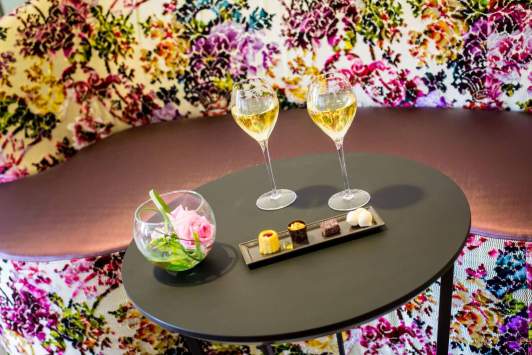
History of Château Belmont
Château Belmont , a historically significant establishment, welcomes you to a 17th-century building surrounded by a 2.5-hectare park. Once planted with renowned vineyards due to its south-facing exposure, the château served as a hospital during the war of 1870.
After the war, Baroness Tellier de Blanrier acquired the property in 1880 and had ceiling paintings for the salon. In 1885, the vineyards made way for apple trees that produced cider for over sixty years.
Subsequent owners, passionate about flowers, decided to transform the estate into a research facility for tulips.
In 1987, Jean and Sophie Bardet opened a restaurant. Jean Bardet, a renowned chef, offered creative, gourmet, and refined cuisine.
In 2008, the AEGIDE group inaugurated its first hotel, giving life to Château Belmont.
Discover this historically rich place where the elegance of the past harmoniously blends with modern comfort. Treat yourself to an unforgettable stay in an enchanting setting, imbued with the wealth and charm of its prestigious history.
Services of a 4-star hotel and a tourism residence in Tours
Enjoy the comfort and the service of Château Belmont Tours :
- 4-star hotel and tourism residence
- 21 rooms and suites fully air-conditionned in our castle
- 44 rooms and suites fully air-conditionned in our tourism residence
- Acces for people with reduced mobility throughout the establishment
- Semi gourmet restaurant
- Laundry / pressing (extra charge)
- Room service (extra charge)
- Internet Wi-Fi access throughout the establishment (free)
- Alarm clock, board games on request
- 3 modular seminar rooms accommodating up to 120 people
- Free outdoor car park and closed garage
- Equipment for your baby : bed (extra charge), high chair, changing mattress
- Cable and satellite
- Welness area included in room rate : indoor heated swimming pool, hammam, sauna and fitness corner
- Facial and body treatment (extra charge)
- Ironing board and iron on request at the reception
- In-room telephone (extra charge)
4-star hotel and tourism residence, restaurant & wellness area
Château Belmont is ideally located near the historic center of Tours and in close proximity to the Loire Valley Castles. The park is shared with a high-end serviced residence.
Savor an exceptional culinary experience at our semi-gourmet restaurant and relax at our bar, installed in a charming period conservatory.
Treat yourself to a moment of well-being with our qualified practitioners in our wellness area , which includes a heated indoor pool, a hammam, a sauna, and a fitness room with park views. These services are available every day from 7 am to 9 pm (except Thursday mornings, opening from 12:30 pm).
Château Belmont offers the ideal setting for memorable events, whether in a professional or leisure context.
Tours : City of Art and History
World Heritage of Unesco, Tours , ancient Gallo-Roman city, is classified as a city of art and history.
Its proximity to Paris, its location in the center of the famous Loire Valley, its rich heritage tourism, quality of life, gastronomy, entertainment and events make this city of Touraine an ideal holiday destination.
Loire Castles
At the heart of the Loire Castles, Château Belmont looks like an extension of the heritage of the Region.
With magnificent castles such as Chambord, Chenonceau, Blois, Amboise, Chaumont or Cheverny that inspired the designer Hergé, famous for his series of Tintin.
The Loire Valley is full of historical monuments and cultural sites and your stay at the Château Belmont will become a real moment of culture and relaxation.
Gastronomy of Touraine
Culinary epicurism and great wines characterize the Touraine gastronomy.
Birthplace of Rabelais' Gargantua, Touraine is full of sweet and salt specialties: "géline" and "Sainte Maure" goat cheese, as a snack, accompanied by a Vouvray white wine, and also macaroons of Cormery for dessert.
You can taste some of those specialties at the Château Belmont's restaurant .
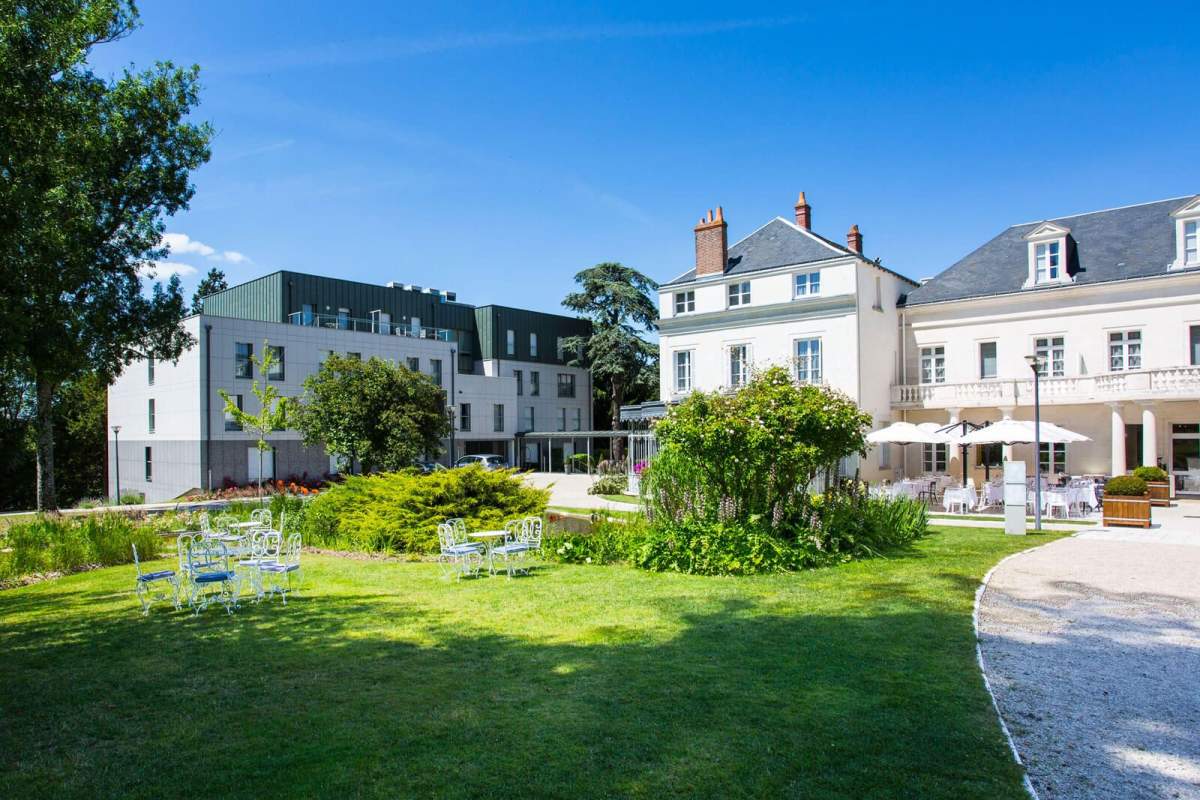

30 Beautiful Chateaux in France
Are you in search of a beautiful chateaux to visit in France?
Look no further. Here’s my guide to the 30 most beautiful chateaux in France.
France conjures up visions of fairytale castles, stately Renaissance architecture, and ribbons of verdant vineyards. This is where France is the Frenchest.
Some of these glorious chateaux are right outside Paris , and make the perfect day trip from the City of Light .
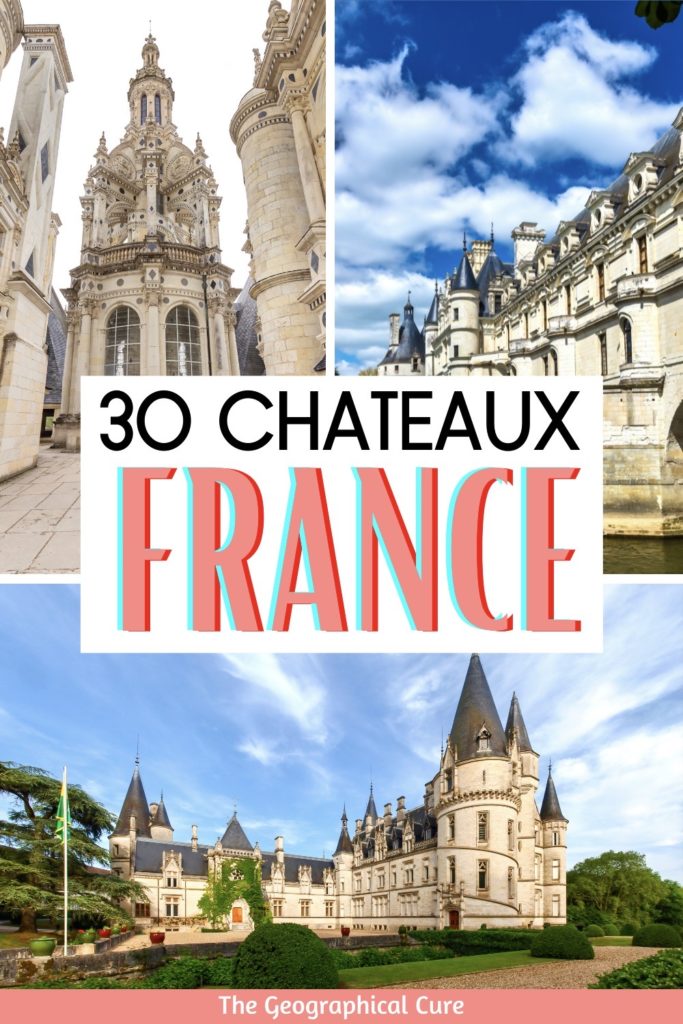
Some chateaux are scattered throughout the Loire Valley, which is known as “The Garden of France” and the “Valley of the Kings.”
Here are my pick for the most beautiful and magical chateaux in France.
1. Chateau Vaux-le-Vicomte
Chateau Vaux-le-Vicomte was Versailles before Versailles existed. The privately owned chateau is the one of the most beautiful chateaux in France.
When Princess Elizabeth visited in 1948, she pronunced it “more beautiful than Versailles!” Built between 1656-61, it’s a fine example of French Baroque architecture with elaborate gold paneled halls.
In fact, Vaux-leVicomte was the inspiration for Versailles. The chateau was originally owned by the ill-fated Nicholas Fouquet, Louis XIV’s finance minister.
In 1661, against his friends’ advice, Fouquet invited the king and his entourage to a luxurious dinner reception.
Three weeks later, jealous of such grandeur, a peeved Louis XIV ordered Fouquet’s arrest and seized the estate. He stole the exquisite statues and tapestries for Versailles. But otherwise left Vaux-le-Vicomte intact.
Click here to book a guided day tour from Paris to the chateau.
2. Chateau de Fontainebleau
Chateau de Fontainebleau is a ravishing UNESCO site and one of France’s must visit chateaux. The rambling chateau boasts 800 years of royal patronage.
The NYT calls Fontainbleau “the single greatest assemblage over time of French architecture and decor still in its original state.”
It’s a rare royal residence that escaped from the war time ravages of the French Revolution.Francois I is most associated with Fontainebleau and he significantly expanded it.
The highlights are the Royal Apartments, Marie Antoinette’s boudoirs (the Turkish Bedroom and the Silver Bedroom), the Papal Apartment, and the grand Francois I Gallery.
You can visit Fontainebleau (along with Vaux-le-Victome) on a small group guided day tour from Paris . You can also visit the chateau and take a hot air balloon ride .
3. Chateau de Chambord
Chateau de Chambord is the big daddy of Loire Valley chateaux and one of the most beautiful chateaux in France. Building started on this massive Renaissance chateau in 1519.
Commissioned by Francois I, a lowly hunting lodge was transformed into a monument to royalty and royal sport. It’s rumored that Leonardo da Vinci influenced some of the chateau’s architectural elements.
The chateau is laid out as a keep in the shape of a cross with four towers, 400 spikey sculpted columns, two wings, and over 400 rooms. The highlight is its mind- boggling double helix staircase.
Twin staircases intertwine without actually touching. The rooftop offers breathtaking views over the valley.
Here’s my complete guide to Chateau de Chambord , with tips for visiting. Click here for an entrance ticket for Chateau Chambord. Click here to book a 2 hour guided tour.
You can also tour the chateau and do some wine tasting . Or visit the chateau along with Chenonceau on a full day tour from Paris . If you’re looking for an incredible place to stay near Chambord, check out the stunning Relais de Chambord .
4. Chateau de Chenonceau
Built in the 16th century, the Chateau de Chenonceau is the most famous and romantic of the Loire Valley chateaus. It spans the River Cher with picturesque palace arches for boats to glide under.
Chenonceau housed and was influenced by many famous women over the centuries — Diane de Poitiers, Catherine de’ Medici, and Louise Dupin. Hence, it’s nicknamed the “Ladies Chateau.”
Poitiers added the five arch bridge to span the River Cher. Medici transformed the Poitiers’ bridge into a two story promenade and ballroom gallery, which resembled the Ponte Vecchio in Florence Italy . Chenonceau was also the site of Francis II’s marriage to Mary Queen of Scots.
Highlights of the meticulously maintained chateau are the lavishly decorated ceilings, the ornate chapel, the Grand Gallery, the bedroom of Diane de Poitiers, and the Medici Gallery (now a museum). The museum houses Old Master paintings by Rubens, Pouissin, and Tintoretto.
Click here to pre-book a ticket. Click here to book the iconic hot air balloon ride over Chenonceau.
You can also visit Chenonceau and Chambord on a guided day trip from Paris . You can also book a guided tour from Paris that includes lunch at a private castle.
5. Chateau de Villandry
This lovely Renaissance Chateau de Villandry was completed in 1536. If you have a passion for gardens, this is the chateau for you.
Villandry is a chateaux in France that’s renowned for its beautiful landscaped gardens. There are acres of decorative ponds, arbors, a maze, fruity trees, vineyards, and themed gardens.
You get a bird’s eye view of the gardens from the chateau’s only medieval remnant, the donjon of the keep.
You can visit Villandry and two wineries on a guided day trip from Tours .
6. Chateau d’Angers
Chateau d’Angers was the fiefdom of the powerful dukes of Anjou and the Plantagenets.
The formidable chateau is an impressive black and stone affair, ringed by battlements and punctuated by 17 watch towers. The “black” stone is actually blue schist.
The chateau houses one of France’s great treasures — the 14th century Apocalypse Tapestry, the Tenture de l’Apocalypse.
Louis I, Duke of Anjou, commissioned the set of tapestries from Hennequin de Bruges in 1375. The 300+ foot tapestry depicts the story of Judgment Day.
>>> Click here to book a fast track ticket
7. Royal Chateau de Blois
The royal Chateau Royal de Blois was the favorite residence (and architectural project) of 7 kings and 10 queens of France.
With its various Medieval, Gothic, Renaissance, and Classical facades, the chateau reflects all of France’s great architectural periods. In 1429, Joan of Arc visited the castle to be blessed before doing battle with the English.
The Chateau de Blois was fully restored in the 19th century. It also houses the Blois Fine Arts Museum, with approximately 35,000 art works from the 16th and 17th century. It boasts masterpieces by Ingres, Rubens, and Boucher.
Other Chateau Blois highlights are: (1) loggia staircase, decorated with Francois I’s salamanders; (2) the Studiolo, where Catherine de Medici kept her stash of poisons; and (3) the king’s apartments.
It was in these apartments that Henry III murdered his arch rival Duke Henry I of Guise.
Click here to book a skip the line entrance ticket. You can also visit Blois and other chateau on a guided day tour from Paris .
There’s also a beautiful hotel 20 minutes from both Blois that you should check out, the Domain des Hauts de Loire .
8. Chateau de Cheverny
Built in 1625-34, the Chateau de Cheverny represents the zenith of French classical architecture. One of the most beautiful chateaux in France, it’s a perfectly proportioned tour de force of symmetry and aesthetic order.
The chateau is so orderly and stately that it’s not quite as appealing to me as some of the other more romantically styled chateaux.
Inside, the Chateau de Cheverny is sumptuously furnished with many works of art and tapestries. The dining room murals famously depict the story of Don Quixote.
Chateau de Cheverny inspired Moulinsart Hall in the TinTin comic books, which you may remember from your childhood.
Cheverny is also home to 100 hunting dogs. They’re a special breed, or cross-breed, of English fox hounds and French Pointer dogs. Their daily feeding is at 11:30 am, if you want to see them lunge at their food on cue.
Click here to book a skip the line entrance ticket. You can see Cheverny (+ Chambord and Chenonceau) on a full day guided day tour from Paris .
9. Chateau de Chaumont
The beautiful Chateau de Chaumont combines a medieval facade with 19th century furnishings inside. Construction began circa 1465 and continued until 1510.
The chateau has elaborate gardens and hosts a “Festival International des Jardins” in high season.
Catherine de Medici purchased the chateau after her husband Henry II died. There, she entertained various astrologers, including Nostradamus.
In 1559, Catherine kicked Diane de Poitiers, Henry II’s mistress, out of the Chateau de Chenonceau and gave her the fortress-like Chaumont instead. She also made Diane hand over the crown jewels Henry had given her.
In 1875, the heiress Princess de Broglie purchased and renovated the chateau. Rather high maintenance, she also had the entire village razed and rebuilt.
You can book a guided day tour to visit the chateau and its gardens.
10. Chateau d’Amboise
The royal chateau of Amboise is a Renaissance jewel, with a taste of Italy and some medieval gargoyles thrown in for good measure.
Amboise features the Loire Valley’s iconic gray slate cone-shaped rooftops. Designed by Italian master masons, Chateau Amboise is known as the “First Italianate Palace in France.”
Chateau d’Amboise is perched on a rocky outcrop overlooking the town of Amboise.
The chateau was the childhood home of luminaries such as King Charles VIII, Francois I, and Mary Queen of Scots.
At the invitation of Francois, Renaissance artist Leonardo da Vinci was a guest at the chateau. Da Vinci lived and worked at his own Amboise home, Close Luce.
It was connected to the chateau by an underground tunnel. Leonardo brought three of his favorite paintings along with him to Amboise — Sainte Anne, Saint Jean Baptiste, and a special little piece called the Mona Lisa .
READ : Guide To all of Leonardo da Vinci’s Paintings
Da Vinci is buried in the chateau’s Chapelle St-Hubert, also called, naturally, the DaVinci Chapel.
Click here to book a skip the line entrance ticket.
11. Chateau de Maisons-Laffitte
Maison-Lafitte is a 17th century beauty, located northwest of Paris. It was built by renowned architect Francois Mansart between 1630-35.
The chateau is a milestone in French cultural history because it was one of France’s first Baroque style palaces.
Nobody in France had seen anything like it. When the chateau was finished in 1651, people would travel long distances just to catch a glimpse.
The chateau has commanding views of the forest of Saint-Germain-en-Laye and the Seine.
12. Chateau de Sceaux
Sceaux Castle is a dreamy little chateau-castle that be reached easily from Paris. The chateau was originally built in 1670. But it was demolished during the French Revolution.
In 1856, it was re-built by the Duke of Treviso. The castle lies in a beautiful estate with a cherry blossom orchard and orangery, which makes a spring visit enticing.
Like Versailles and Vaux-le-Vicomte, the gardens of Sceaux were designed by master landscaper André Le Nôtre. There are fountains, green spaces, and trees galore. And the grounds are free to visit.
Sceaux was one of the filming locations for the BBC series Versailles . You can take virtual tour of the chateau’s beautiful interiors on YouTube here .
13. Chateau de Monte-Cristo
Literature lovers will adore the swishy pleasure house of the famed novelist Alexandre Dumas . In 1847, with characteristic panache and elan, Dumas unveiled a dashing new estate to his coterie of friends and fans.
It was one of the greatest architectural follies of its time — a miniature Renaissance chateau and a Gothic house set in Le Port-Marly outside Paris.
Naturally, Dumas christened the chateau the “Chateau de Monte-Cristo” and the Gothic house the “Chateau D’If.” The novelist Honore de Balzac described the duo as “one of the most delicious follies ever created … the most royal sweetbox in existence.”
The Chateau de Monte-Cristo is now a house museum dedicated to Dumas’ life and novels. Here’s my complete guide to visiting the Chateau de Monte-Cristo .
You can visit the chateau on a private day tour from Paris .
14. Chateau D’Azay-le-Rideau
This petit chateau is one of France’s most romantic hidden gems. Situated on an island in the middle of the Indre River, this moat-ringed chateau dazzles with fanciful turrets and decorative stonework.
Honoré de Balzac dubbed it a “multifaceted diamond set in the River Indre.”
The chateau’s most famous feature is its open loggia staircase. The staircase is Italianate in style and overlooks the central courtyard. And it’s decorated with salamanders and ermines, symbols of Francois I and Queen Claude.
Just along the river from Azay-le-Rideau castle is the hidden gem Chateau de l’Islette , where you can escape the crowds. Its privately owned, but open to the public. Far from Paris, during the 1890s, l’Islette was the secret love nest of two great French sculptors Camille Claudel and Auguste Rodin .
Click here to book a ticket to the chateau. Click here to book a tour of the chateau with Villandry and a wine tasting.
15. Chateau de Pierrefonds
In 1857, Napoleon III hired the famed architect Eugene Viollet-le-Duc to rebuild the romantic ruins of Pierrefonds Castle. Napoleon III longed for a lavish castle, fit for a king and evoking a medieval fantasy.
Inspired by Coucy Castle , one of my favorite French ruins, Viollet-le-Duc sought to maintain an equilibrium between a fortified palace with beautiful state rooms and a residence.
The architect used ornamental and architectural references from the middle ages and new construction materials.
The rooms are recreated in vibrant rich colors as they would have appeared in the Middle Ages, with medieval motifs like St. George and the Dragon.
Here’s my complete guide to Pierrefonds Castle . Click here to book a skip the line entrance ticket.
16. Chateau de Coucy
If you fancy a romantic ruined chateau in France, the Chateau de Coucy is perfect. Chateau de Coucy was the greatest castle of the middle ages.
The Chateau was made famous as the home of the fictional Enguerrand de Coucy VII, the star of Barbara Tuchman’s magnificent novel The Distant Mirror .
During its heyday, the chateau was famous for the size of its donjon and the pride of the Coucy lords. They had a bold motto, which translates to “I am not king, nor prince nor duke nor count; I am the Lord of Coucy.”
In 1400, after Enguerrand’s death, the Duke of Orleans bought the chateau. In 1498, the chateau became Crown property. During the French Revolution, it was transformed into a prison. In 1829, King Louis-Philippe purchased the chateau.
It was renovated by Viollet-le-Duc, the famous restorer of Notre Dame , Carcassonne , and Pierrefonds.
Here’s my complete guide to visiting the magnificent ruins off Coucy Chateaux .
17. Chateau de Fere
Reminiscent of Chateau de Chenonceaux, the Chateau de Fere is now an atmospheric 5 star luxury hotel. It’s delightful. I know; I stayed there .
The hotel sits next to the evocative remains of a 13th century fortified castle that fell into ruin in the 17th century.
Formerly a wing of the old castle, the chateau hotel was restored in 1863 and now nestles amidst flourishing woodland and manicured gardens.
You can take a virtual tour on the hotel’s website .
18. Chateau de Chantilly
This imposing palace is a 19th century version of Renaissance architecture. It was built by Henri d’Orléans, son of the last king of France Louis-Philippe.
He was a great patron of the arts and made Chantilly the showcase for his masterpieces.
Andre Le Notre designed the chateau’s gardens. The 18th century stables are original and now contain an equestrian museum.
Inside, you’ll find Chantilly’s crown jewel, the Musée Condé. The museum is chock full of precious art, sculpture, and a breathtaking library with medieval manuscripts.
The most valuable pieces are the Renaissance paintings by Raphael , Botticelli , and Lippi.
19. Chateau de Vincennes
Lying in the eastern suburbs of Paris is the 14th century Chateau de Vincennes . The chateau began life as as a royal hunting lodge in the 12th century. During the 13th century, the lodge was transformed into a larger, palatial estate for the French kings.
In the 14th century, the venerable building you see today was reconstructed, renovated, and modernized. It became the primary royal seat until Versailles was completed.
When the 52 foot Donjon was added, Chateau de Vincennes became the tallest medieval fortified structure in Europe.
The chateau is wholly intact with a keep, dungeon, moat, and fortified concentric walls.
>>> Click here to book a priority entrance ticket
20. Chateau de Versailles
The Chateau de Versailles is France’s most famous and beautiful chateau.
The UNESCO-listed palace was once the center and cultural heartbeat of Europe, until the French Revolution. The Sun King Louis XIV used Versailles as his royal seat from 1682 to 1789.
The Palace of Versailles is ornately decorated, to say the least. It’s massive, flashy, and very, very gold. The opulence is overwhelming. Even the bathrooms are gold plated.
As exemplifies the Baroque style, the palace was decorated with gilding, stucco, arabesques, frescoed vaulted ceilings, mirrors, and tromp l’oeil effects. The king’s apartments were in the center, because the world revolved around him.
Aside from Louis XIV, Versailles’ most famous occupant was Marie Antoinette . The queen made major changes to the palace’s decor in the 18th century.
Louis XVI built her the Petit Trianon, a little Neo-Classical palace on the grounds. Marie Antoinette hired two architects to create a pastoral fantasy for her, the Hameau de la Reine. The hameau cottages looked like a rural village, but inside hey were decked out.
Versailles may be the most popular day trip from Paris. You’ve got to be organized to visit and beat the crowds.
Click here to book a full access skip the line ticket. You may also want to book a guided tour of the magnificent palace. There are many different options:
- a 1.5 hour small group guided tour
- a 2.5 hour small group tour
- a 4 hour guided tour from Paris
- a 7 hour small group tour from Paris that includes Marie Antoinette sites
- an 8 hour private tour from Paris that includes Marie Antoinette sites
21. Chateau de Beauregard
Chateau de Beauregard is a hidden gem in the Loire Valley. It’s just a 15 minute drive from Chateau Cheverny. Like Chambord, Beauregard was a favorite hunting lodge of Francoise I.
The chateau’s highlight is the 17th century Renaissance style Portrait Gallery. In it, you’ll find 327 paintings of European royalty. They include recognizable figures such as Cardinal Richelieu, Francis Drake, Henry VII, Ann Boleyn, and a score of French kings.
When you’re done examining The Who’s Who, escape to the landscaped park. Beauregard has one of the best rose gardens in the Loire Valley.
There’s also a Portrait Garden, with facts sheets and pictures hanging from trees. It’s the brainchild of landscape architect Gilles Clement.
22. Chateau du Clos Luce
If you’re a fan of famed Renaissance artist Le ona rdo Da Vinci , a visit to 15th century Chateau du Clos Luce is a must do.
A transplant from Italy , Leonardo lived and worked in this grand manor home the final 3 years of his life (1516-19). It was connected to Chateau Amboise by an underground tunnel.
On a visit to Clos Luce, you can walk in the footsteps of the famous Italian polymath artist.
Leonardo didn’t paint in Amboise. Instead, he focused on his imaginative contraptions and masterminded elaborate court celebrations with special effects.
You can see Leonardo’s study, bedroom, and chapel. There are scale models and sketches of some of his fantastical inventions — automobiles, machine gun, assault chariots, and more. And a replica of the Mona Lisa , the original of which is in the Louvre .
Click here for a skip the line ticket to the chateau. Click here to book a guided tour of both Amboise and Chateau Clos Luce. You can also visit with the Leonardo da Vinci Loire Valley Pass .
23. Royal Fortress of Chinon
Chinon’s pride and joy is its doughty castle, the Chateau de Chinon , perched on a cliff on the edge of town. Dating from the 12th century, the castle was home to the court of Henry II and Eleanor of Aquitaine.
It’s Clock Tower, the Tour de l’Horloge, showcases exhibits of the historic meeting between Joan of Arc and the future Charles VII. A virgin warrior and French national heroine, Joan of Arc convinced King Charles VII to fight the English invasion in the 15th century.
There are splendid views across the Vienne River from the castle walls. Chinon is dotted with vineyards.
Click here to book an entrance ticket. Chinon is also the perfect place to go on a guided wine tour .
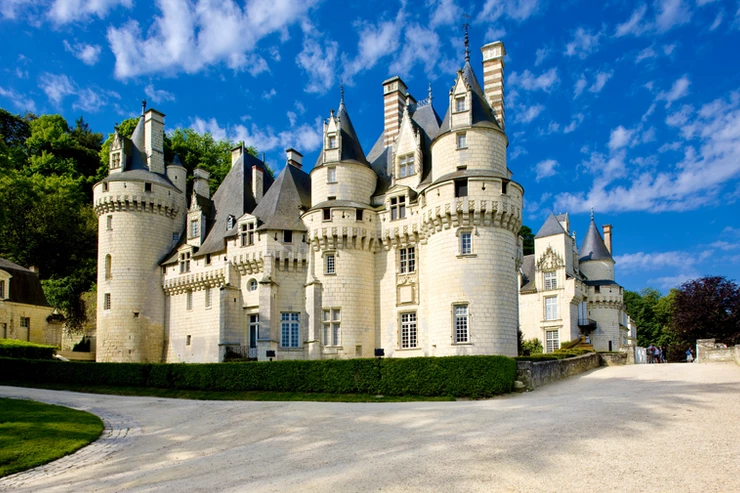
24. Chateau d’Usse
Chateau d’Usse is a beautiful chateaux in the Loire Valley chateau. It’s famous as the inspiration for Perrault’s Sleeping Beauty fairytale and Disney’s famous Cinderella Castle.
You can immediately see why. The charming chateau has a romantic turret-topped exterior.
Situated on the edge of Chinon forest, Chateau d’Usse was built for the Built family in the 15th century. The castle changed hands many times. In 1885, the Count de Blacas bought the chateau and his ancestors still live there today.
Inside it boasts dreamy spiral staircases, unusual frescos, and 17th century tapestries.
Take a stroll in the French gardens as well. They were designed by Le Notre of Versailles fame.
25. Chateau de Langeais
The Chateau de Langeais was founded in 992 by Foulques Nerra. He was an early count of Anjou and a celebrated builder of medieval castles.
The castle was destroyed during the Hundred Years’ War in the 14th and 15th centuries. It was later rebuilt by King Louis XII in the mid-to-late 15th century. It’s considered an excellent example of late medieval architecture — with crenellated battlements and pointy defensive towers.
Langeais is perfectly preserved both inside and out. Over 15 rooms, there’s original 15th century period furniture and scores of Flemish and Aubusson tapestries.
26. Chateau de Montreuil-Bellay
If you have the time and energy to squeeze in one more chateau, head to the medieval Chateau de Montreuil-Bellay . It’s about 10 miles south of the town of Saumur in the Loire Valley.
There have been fortifications on this site from the 11th century. The current chateau was built between the 13th and 15th centuries. It served a defensive purpose during the 100 Years War. When that war was over, the chateau received a Renaissance facelift and elegant additions.
The highlight of the chateau is the wine cellars. Legend holds that when the wine was made, the vintners would swear to a portrait of Rabelais: “When my glass if full, I empty it. When it is empty, I complain.”
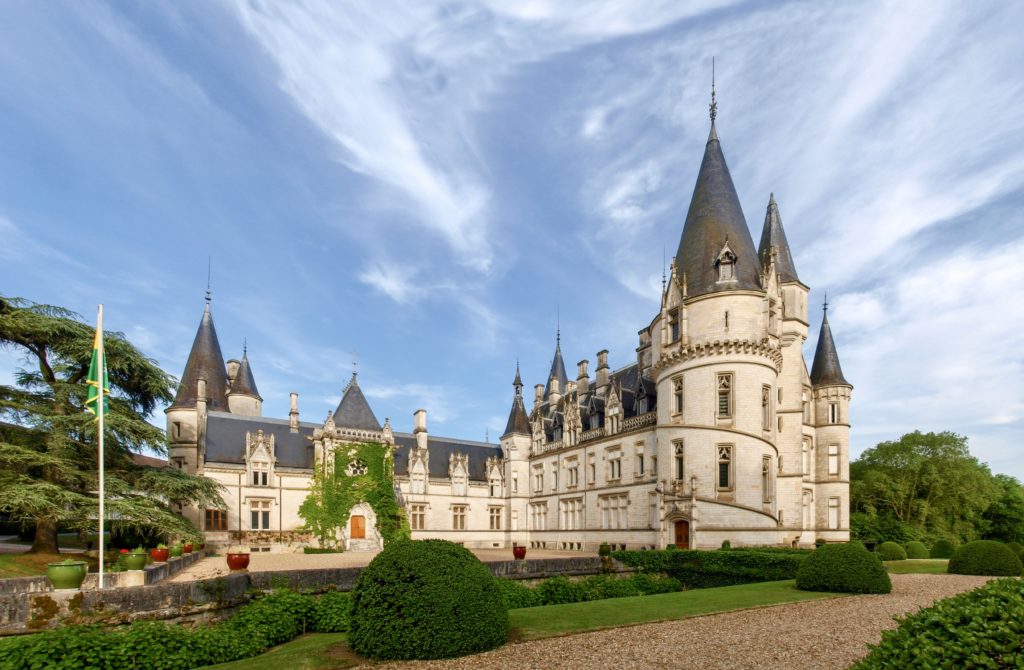
27. Chateau de Sully-sur-Loire
Chateau de Sully is another beautiful little chateaux in France. It’s a manor house with an imposing silhouette and a mysterious history.
The earliest remains of the chateau are from 1102. But the chateau you see today dates from the 16th century. Then, the chateau was owned by the Saul Tavannes family, supporters of Louis XIV.
The chateau has superb conical roofs. Inside, you’ll find elegant rooms, marble fireplaces, tapestries, paintings, priceless period furnishings, and a rather macabre taxidermy collection.
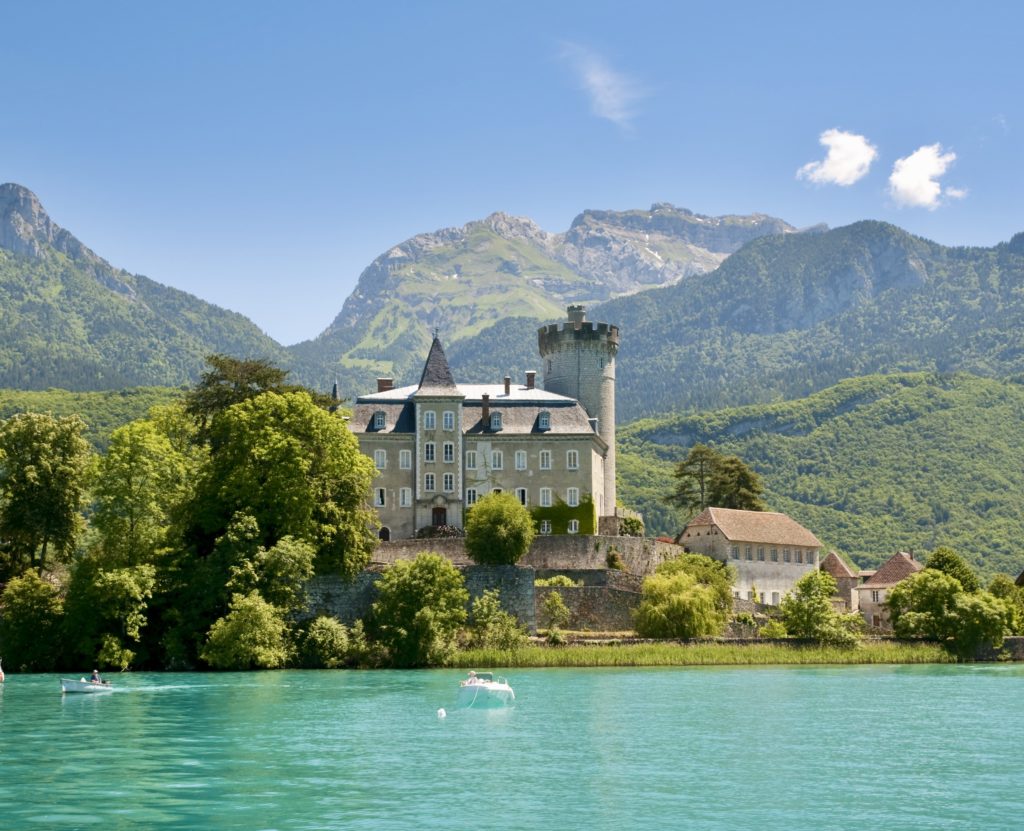
28. Chateau d’Annecy
The Chateau d’Annecy is located in the small town of Annecy in eastern France.
The castle complex dates back to 13th century. The chateau has served as the seat and residence of the Counts of Geneva and the Dukes of Genevois-Nemours.
The chateau was bought by the city of Annecy in 1953, who converted it into a museum. Today, the castle houses a collection of regional sculptures and paintings.
The terrace of the castle offers beautiful views of the town rooftops and Lake Annecy. The chateau sits on a hill and is connected to the old town center by several cobblestone alleys.
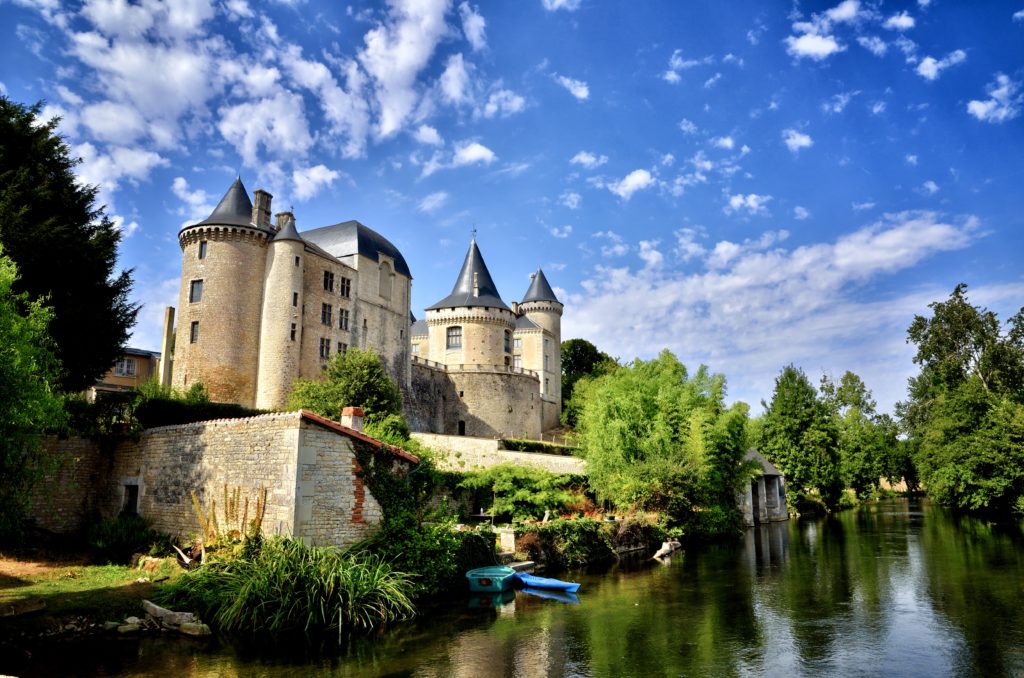
29. Chateau de Verteuil
The Chateau de Verteuil overlooks the Charente River in the small village of Verteuil in southwest France. It was first built in 1080 and has been listed as an historic monument since 2010.
Intermittent wars ravaged the castle. But it was always rebuilt in different styles. The castle boasts five conical towers, a huge library, and partially restored watchtower
The chateau is a private estate. You can only visit on a guided tour on weekend days between April and September. But you’ll get a snapshot of what life was like for the French elite.
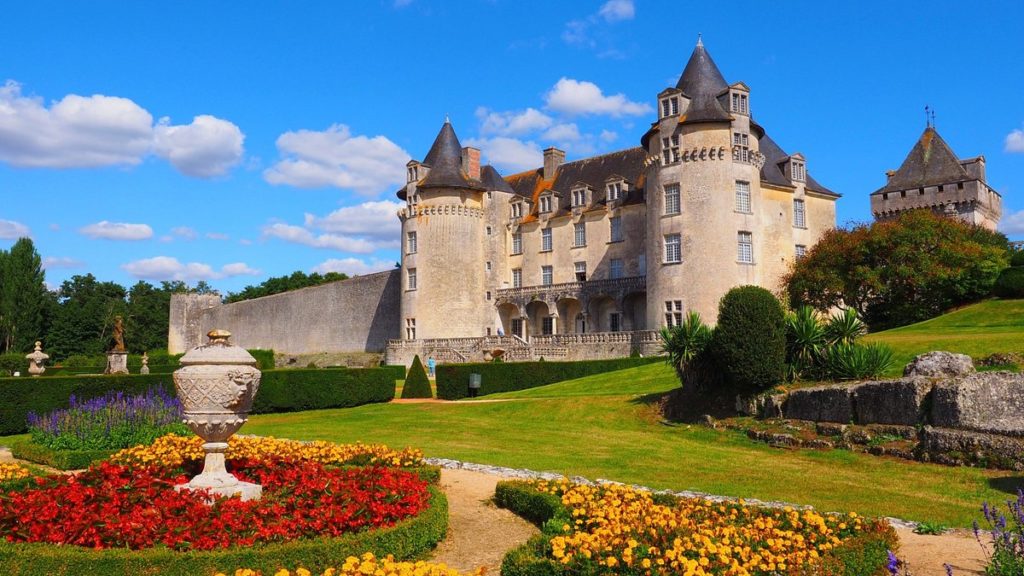
30. Chateau de la Roche-Courbon
Chateau de la Roche-Courbon was built in the 15th century as a fortified castle during the Hundred Years’ War. It’s been listed as a historic monument since 1925.
In the 17th century, the chateau was transformed into a country estate by Jean-Louis de Bourbon. The chateau was later abandoned and saved from ruin by Paul Chénereau, whose family still owns the chateau.
The interior decor dates from the 17th century. A double Renaissance staircase leads down to beautiful gardens. Underneath the chateau are caves in which prehistoric artifacts were found.
The castle can be visited with a guided tour on Thursdays.
I hope you’ve enjoyed my guide to France’s beautiful chateaux. You may enjoy these other France travel guides and resources:
- 3 day itinerary for Paris
- 5 day itinerary for Paris
- 10 one week in France itineraries
- Hidden gems in Paris
- 30+ beautifultowns in northern France
- Beautiful villages of Brittany
- Beautiful villages in Normandy
- 10 day itinerary for southern France
- Charming hidden gems in Provence
- Hilltop villages of the Luberon Valley
If you’d like to visit France’s most famous and beautiful chateaux, pin it for later.
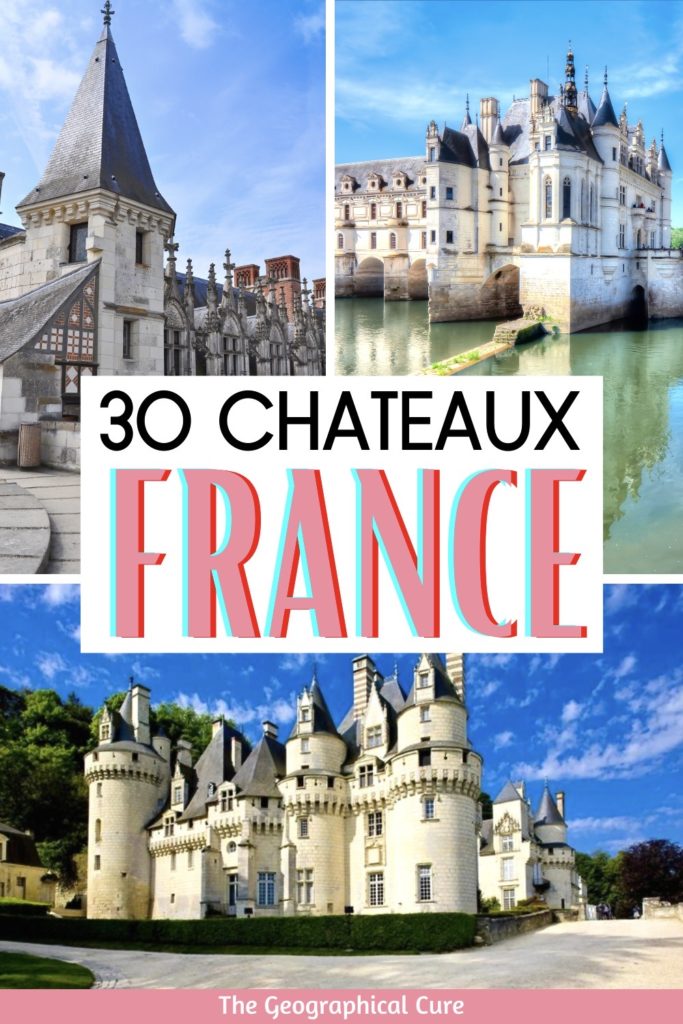
Leave a Comment Cancel reply
Save my name, email, and website in this browser for the next time I comment.
Last Updated on August 4, 2023 by Leslie Livingston
French Castles Tour – 2024
Chateaux of paris and the loire valley.
Home > Major Tours > French Castles

Visit and tour Paris, the capital of France, and spend three nights there altogether - two at the beginning and one at the end.
Spend four nights in the Loire Valley, the garden of France. With its mild climate the Loire was the favourite residence of kings and their kin. It remains a corner of paradise, with its dream-like palaces, elegant towns, quiet landscapes and majestic rivers. The vineyards are a feast to the eyes and their fruits a joy to the palate.
Castle, palace and regional highlights include the Montmartre district, the Palace of Versailles, the Eiffel Tower, a Seine Cruise, and Notre Dame in Paris; Fontainebleau Palace, Orléans, Chenonceau Palace, Amboise Castle and village, Manor Clos-Lucé, Cheverny and Chambord Châteaux, Blois Castle and town, Villandry Château, and Tours.
The Slideshows in the In Depth section provide a quick overview of tour destinations and features.
Top Map Itinerary Features Images In Depth References Dates & Prices Contact Bottom

Day 1 – DEPARTURE
Board your flight from your home destination to Paris, France.
This itinerary assumes this to be an overnight flight.
Air fare independently arranged.

Day 2 – WELCOME TO PARIS
Arrival in Paris, France.
Individual transfer to your hotel in Paris.
Tonight you'll meet your travelling companions and tour director, and enjoy a welcome dinner in Montmartre, the artist district high above the city with great panoramic views.
> Your tour includes: Transfer from airport to Paris hotel, welcome dinner with menu choices and wine (or, of course, something else), hotel in Paris

Day 3 – PARIS - VERSAILLES, EIFFEL TOWER
After breakfast, board your sparkling clean coach to go for a guided tour of VERSAILLES, perhaps the most famous palace in the world. From 1682, when King Louis XIV moved from Paris, until the royal family was forced to return to the capital in 1789, the Court of Versailles was the centre of power in France. Spend several hours visiting the Palace of Palaces and the famous gardens with the fountains.
In the afternoon we go up to the second floor of the EIFFEL TOWER for majestic views. This tower, built for the 1889 World's Fair, is one of the most recognizable structures in the world and is the most visited paid monument anywhere.
Dinner tonight is on your own.
> Buffet breakfast, door-to-door transportation, tour of Versailles, entrance to Eiffel Tower, hotel in Paris

Day 4 – FONTAINEBLEAU, ORLÉANS, LOIRE VALLEY
We leave Paris this morning to visit nearby FONTAINEBLEAU. Used by kings of France from the 12th century, the royal hunting lodge of Fontainebleau was enlarged and embellished in the 16th century by François I, combining Renaissance and French artistic traditions.
We continue on to ORLÉANS, the city which Joan of Arc liberated in 1429. Breaking the English siege was one of the great episodes in the history of France, and marked the rebirth of a country and of a people that had been sinking into despair. Enjoy free time here for lunch.
Later continue to your chateau in the heart of the Loire Valley, our new home for the next four nights.
> Buffet breakfast, door-to-door transportation, guided tour of Fontainebleau Castle, three-course dinner with menu choices, one beverage, and coffee or tea, hotel - Château de Razay in Céré La Ronde

Fontainebleau
Day 5 – CHENONCEAU PALACE, AMBOISE CASTLE, CLOS-LUCÉ
In the morning we go first to visit nearby CHENONCEAU, the "Ladies Castle". This beautiful castle stretches across the River Cher in a harmonious natural setting of water, greenery, gardens and trees. Over a period of 400 years this castle was shaped by women, royal wives, mistresses and queens.
We continue on to Amboise for lunch, and afterwards visit the CHÂTEAU D'AMBOISE, once a very important royal residence and home for several French kings. The palace is a mix of Gothic and Renaissance architecture, and is now less than a third of the size it was in the 16th century.
Leonardo da Vinci lived nearby in MANOR CLOS-LUCÉ as a guest of King Francis. We visit this palace, now a museum with period furniture, sketches and working models of the ideas of this renaissance genius.
> Buffet breakfast, door-to-door transportation, entrance fees and guided tours of the above castles, three-course dinner, hotel - Château de Razay in Céré La Ronde

Day 6 – CHEVERNY, CHAMBORD, BLOIS CASTLE AND TOWN
This morning our first visit is to the CHÂTEAU DE CHEVERNY. The symmetric design and harmonious grandeur of the façade of are characteristic features of the period of Henri IV and Louis XIII. The interior is sumptuously appointed, with beautiful furniture, sculptures, gilt work, marble and multi-coloured paneling.
We continue with a short ride to CHÂTEAU DE CHAMBORD, the largest by far of all the Loire chateaux, built on a scale foreshadowing that of the Palace of Versailles.
On to the Royal City of Blois where we visit the ROYAL CHÂTEAU DE BLOIS, the residence of several French kings. Built in the middle of the town that it effectively controlled, the Château de Blois comprises several buildings constructed from the 13th to the 17th century around the main courtyard.
Free time for dinner in this beautiful city on the hillside overlooking the river Loire where many of the medieval streets still remain.
> Buffet breakfast, door-to-door transportation, entrance fees and tours of the above castles, hotel - Château de Razay in Céré La Ronde

Day 7 – VILLANDRY, TOURS
Today we visit CHÂTEAU DE VILLANDRY, one of the last great Renaissance chateaux to be built in the Loire Valley. Villandry’s international fame is based largely on its gardens, among the most fascinating in all of France and Europe.
In the afternoon we drive to TOURS, the capital of Touraine, a thriving economic and cultural centre. Go for a stroll in Place Plumereau, a picturesque and animated square, once a marketplace, lined with 15th century timber-framed houses alternating with stone facades. Enjoy a café au lait in the square and get your final Loire Valley souvenirs.
Tonight we are having a nice dinner in a medieval village.
> Buffet breakfast, door-to-door transportation, entrance fees and tours of the above castles, three-course dinner, hotel - Château de Razay in Céré La Ronde

Day 8 – PARIS - NOTRE DAME, SEINE RIVER CRUISE
We leave the Loire Valley this morning and head north again to Paris, arriving in time for your lunch break.
We are all saddened by the April 2019 fire at NOTRE DAME CATHEDRAL. After lunch you will have time to see restoration work at the site, but from a distance.
Then a short walk across Île de la Cité to visit SAINTE CHAPELLE, a royal chapel in the Gothic style, part of the residence complex of the Kings of France until the 14th century. Marvel at one of the most extensive 13th-century stained glass collections anywhere in the world.
Later we board a River Boat for a scenic cruise on the SEINE RIVER. We see many of the city's most famous landmarks from the river, and pass under many of the three dozen bridges over the river in Paris.
Then a short ride to your overnight hotel near the Charles de Gaulle (CDG) airport in Roissy. Enjoy a great farewell dinner and celebrate a wonderful week in France with your travelling companions.
> Buffet breakfast, door-to-door transportation, Seine River cruise, three-course dinner, hotel in Paris-Roissy

Day 9 – TIME TO SAY AU REVOIR
After breakfast individual transfers to the nearby Charles de Gaulle Airport to catch your homebound flight, which arrives the same day.
> Buffet breakfast, transfer to Airport

Tour Features
- All features as per itinerary, departure guaranteed
- Door-to-door transportation (all modes). Leave the navigating to us.
- 7 breakfast buffets
- 5 three-course dinners with menu choices, one beverage, and coffee or tea after dinner
- 7 nights' accommodation
- All entrance fees, taxes, and local guide fees paid
- No hidden extras, no optional excursions – already included
- Maximum group size of 30 people, fewer on most tours
- The tour language is English only.
- Packing and unpacking is minimized. Four nights at Château de Razay in the Loire Valley.
- The days are well planned to offer you many highlights, but you are never rushed. Ideal combination of free time and planned activities.
- Skip the lines at must-see attractions.
- All visits are inside, not drive-by. Learn the stories that bring old buildings to life.
- You will see not only the highlights but also the spots where only the locals go.
- Tour director – Let our experts make every day and destination fascinating!
- Satisfaction assured – backed up by our money-back guarantee.
Complete printable itinerary in PDF format > French Castles Itinerary

Hall of Mirrors, Versailles

Loire Valley Hotel
The hotel for the four nights spent in the Loire Valley will be the Château de Razay in Céré La Ronde, south-east of Chenonceau Palace. The chateau was built at the end of the 15th century and is surrounded by 85 acres of grounds and woodlands.

Latona Fountain, Versailles

Amboise Castle

Bridal Chamber, Cheverny

Blois Castle

Plumereau Square, Tours
There are more pictures of tour destinations in the In Depth section below, in larger formats. There are two automated Slideshows and a Gallery for selecting and examining larger images.
The Slideshows and the Gallery present the same images in the same sequence, but using different techniques. The Slideshows are effortless. The gallery has more comprehensive captions.
Thank you so much for a fabulous tour of the Loire castles and Paris last week. It all seems like a fantastic dream now!
You covered so much more than I expected, while giving us enough rest times and independence that I didn't feel overwhelmed, either. So thank you for such a well-orchestrated tour.
- Cathy Wolz, Virginia
Taking Astrid’s French Castles Tour was a dream come true for me! .... The chateaux in Loire Valley were magnificent and the pace of the tour was just right. Very little driving, centralized lodging in a fabulous location, and plenty of free time. Astrid is very personable and everyone loves her. I’ve taken two of Astrid’s European Castles tours and can’t wait to take another!
- Leslie Granger, California Read more ...
Castles, breathtaking scenery, quaint towns, vintage wines, gourmet food, Paris, history, culture, 653 photos.
All this and more, in an awesome location with an amazing tour guide. The French Castles tour was an exceptional deposit in our memory bank and we cannot wait to follow Astrid again!
- Rick and Suzanne Handley, Texas
Additional comments on this and other Castles Tours are provided on a separate References Page .
Comments, experiences and recommendations from guests on past tours are featured in our References Video
Dates, Prices and Reservations
Complete printable itinerary in PDF format >
This tour is offered on the following basis:
Tour prices are for the land segment only. Air fare is not included.
Prices are per person, in U.S. dollars, based on double occupancy.
Single occupancy is available for a single supplement charge, triple occupancy rates are reduced, and there is a special rate for a child 8 to 16 years old sharing a room with two adults.
Guaranteed Departure: This tour is guaranteed to operate as scheduled and will not be cancelled due to a low level of participation.
A deposit of US $ 400 per person is required to secure a reservation on these tours.
Personal expenses, lunches and gratuities for the driver and local guides are not included.
Note re Inflation: Due to inflation in the general economy and additional inflation in the travel industry prices may need to be increased in mid-season. Prices in effect at the time deposits are paid are guaranteed not to change.
French Castles Tour – 2024 Departure Dates
French Castles Tour – 2024 Prices
Reservation info and online form >
Dates for all scheduled major tours >
Private Tour Option
If our dates do not work for you we can arrange the tour for you or your party as a private tour. Same itinerary as above in a private limousine or van, with bilingual, professional private guide / chauffeur. Prices per individual are the same as for the regular group tour, plus a US $ 200 per day private tour premium for the group.
Contact us with your preferred dates and specific requirements at this private tour email link ... or phone one of the numbers below, or write to the address on our Contact page.
Contact Information
Email is fast, flexible, and free. You can write to us at this email link (or [email protected]).
You can call us in Germany (Eastern Time + 6 Hours):
U.S. Phone: (202) 580 - 8732 / Direct number in Europe: +49 171 546 6839
Déjà 0 de CO2 économisé grâce à l'éco-mode sur ce site. Vous voulez faire un effort pour notre planète ? En savoir plus
Val de Loire
8 châteaux de la Loire à visiter autour de Tours
Accueil Le Mag 8 châteaux de la Loire à visiter autour de Tours
- Cité royale de Loches
- Château de Chenonceau
- Château du Rivau
- Château du Clos Lucé
- Château royal d'Amboise
- Forteresse royale de Chinon
- Château et jardins de Villandry
- Château d'Azay-le-Rideau
Publié le 23 juin 2023
Temps de lecture : 14 min.
Voici 8 châteaux de la Loire à visiter autour de Tours. Qu’il s’agisse de votre première visite ou non, chacun d’entre eux vous réserve de belles surprises !
La Cité royale de Loches
L’élégante Cité royale de Loches qui domine la ville est l’un des châteaux de la Loire à visiter autour de Tours. Flânez parmi ses petites rues et ruelles. Elles vous conduiront jusqu’au logis royal et au donjon . L’élégante silhouette du premier contraste avec l’austérité du second. Poussez leurs portes pour entrer dans leur histoire et dans celle de leurs hôtes illustres. C’est au logis royal de Loches que Jeanne d’Arc vint rencontrer le roi Charles VII pour le persuader d’aller se faire sacrer à Reims. Le roi séjourna également souvent au château, en compagnie de sa favorite, la belle Agnès Sorel. Son tombeau, orné d’un gisant d’albâtre, repose dans la collégiale Saint-Ours toute proche. Deux fois reine de France, Anne de Bretagne, effectua de longs séjours à Loches. C’est elle qui fit construire l’oratoire de style gothique flamboyant décoré de son emblème : l’hermine. A quelques pas du logis royal de Loches se dresse l’imposant donjon. Haut de 37 mètres, il fut construit vers l’an Mil par Foulques Nerra. Prison royale du XVème au XVIIIème siècle, on y enferma de nombreux prisonniers. Le plus célèbre d’entre eux est le Duc de Milan, Ludovic Sforza qui y resta 4 ans. Son rang lui permit néanmoins de bénéficier de conditions de détention particulière. En effet, il était incarcéré dans une cellule privative et chauffée. Outre le fait qu’il avait le droit de sortir de sa cellule, il put aussi disposer du matériel nécessaire pour s’adonner à sa passion : la peinture. Les dessins qu’il réalisa sur les murs ont été restauré et on peut même y lire une phrase écrite de sa main. La salle des graffitis présente elle aussi le témoignage du passage de nombreux autres prisonniers anonymes. Pour rendre votre visite encore plus interactive et immersive, choisissez la visite avec l’Histopad qui vous emmènera au cœur de l’histoire de la Cité royale de Loches (tablette incluse dans le prix du billet ; si billet gratuit, tablette seule : 5,00 €).
Découvrez tous les événements de la Cité Royale de Loches !
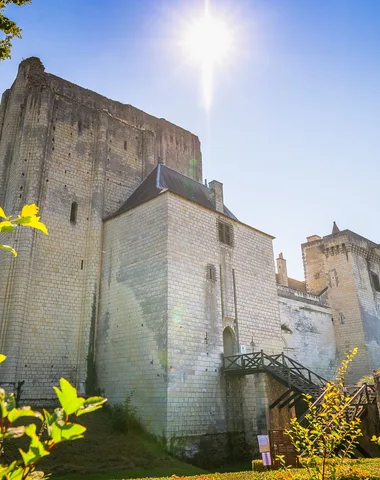
Les insolites du donjon
- Manifestation familiale / pour enfants
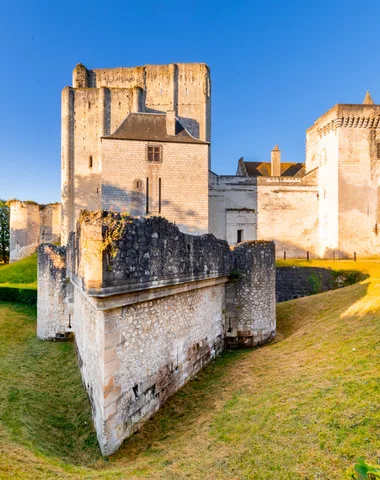
Visite thématique : « Un château-fort à la belle saison »

Visite thématique « Le roi voyageur »
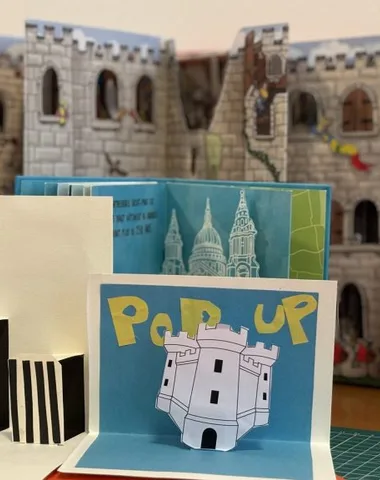
Atelier Pop-up
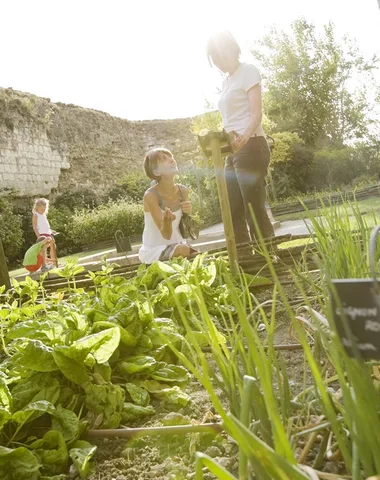
Rendez-vous aux jardins
- Manifestation en extérieur

Visite contée : Dans les pas de Berthe
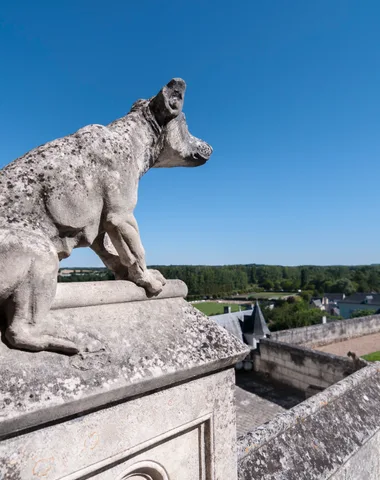
Mémory grandeur nature
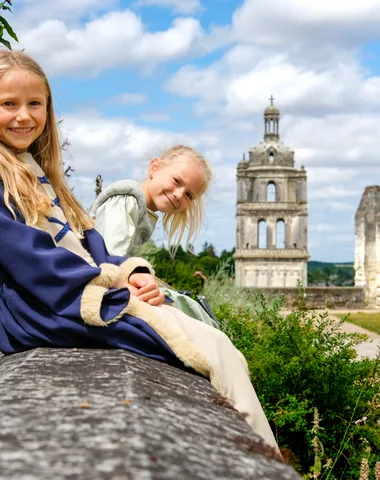
L’enfance d’un roi : prêt de costumes et de jeux médiévaux
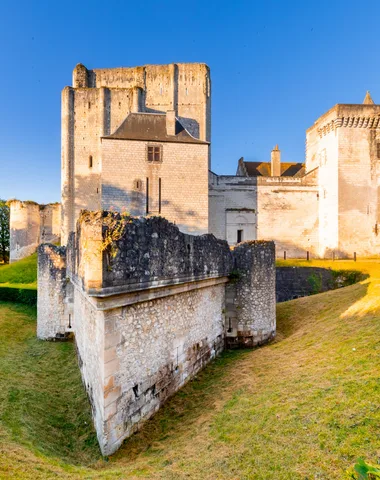
Journées européennes du patrimoine
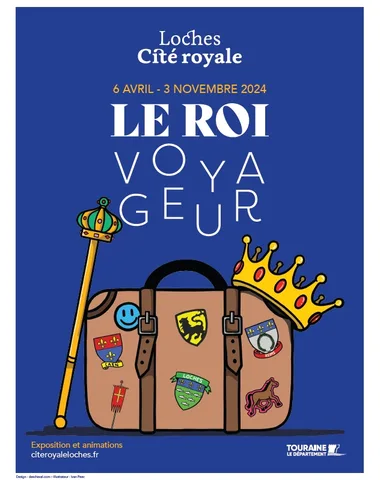
Exposition « Le Roi voyageur »
Le château de Chenonceau
Parmi les châteaux de la Loire à visiter près de Tours , le château de Chenonceau , dans l’écrin de ses jardins, est un joyau de la Renaissance. Sa célèbre galerie enjambe avec grâce les eaux du Cher et lui donne cette silhouette à nulle autre comparable. Bâti, administré et sauvé par des femmes, le château des Dames conserve le souvenir de celles qui ont veillé sur lui. Parmi elles, Diane de Poitiers, favorite du roi Henri II, fit construire le pont au-dessus du Cher. A la mort du roi, son épouse Catherine de Médicis contraignit Diane à quitter le château. Comme un écho au Ponte-Vecchio de sa ville natale, Florence, la reine fera édifier sur le pont la célèbre galerie à double étage. Le château de Chenonceau cultive l’art du raffinement. Mobilier, tapisseries, tableaux de grands maîtres constituent une remarquable collection. Mais le château des Dames perpétue également la tradition de la décoration florale. Seul château de France à posséder son propre atelier floral, Chenonceau est toujours paré de splendides bouquets et créations florales. Au fil des saisons, bouquets printaniers, brassées de pivoines, corbeilles de dahlias et en fin d’année les compositions féeriques de Noël… sont créés et réalisés par les fleuristes dont l’un est Meilleur Ouvrier de France. A côté du château, les jardins de Diane de Poitiers et de Catherine de Médicis expriment la tradition française de l’art des jardins. C’est dans le Potager des fleurs que sont cultivées les innombrables variétés utilisées par l’atelier floral.
- Chaque année profitez de l’exceptionnelle mise en beauté du château de Chenonceau grâce aux fleurs. Flânez à travers les jardins des grandes dames de Chenonceau : Diane de Poitiers et Catherine de Médicis. Vous y découvrirez des arbustes aux formes géométriques parfaites et des rosiers et hibiscus par centaines. Sans oublier les fleurs aux couleurs chatoyantes du Potager des fleurs, utilisées par l’atelier floral pour composer les bouquets qui viennent orner les différentes pièces du château au fil des saisons.
- Partez à l’assaut du labyrinthe du parc et parvenez jusqu’à son centre pour atteindre la gloriette. A vous ensuite de retrouver la sortie !
- Visites, dégustations et scénographie florale rythment l’année au château de Chenonceau .
Découvrez tous les événements du château de Chenonceau !
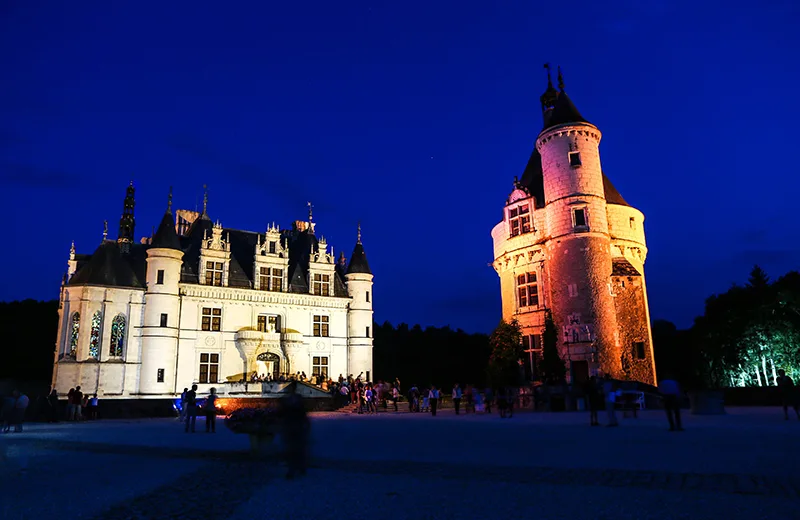
Dégustation sous les étoiles – Château de Chenonceau
- Manifestation nocturne
- CHENONCEAUX
Le château du Rivau
Entouré de ses 15 jardins de contes de fées, le château du Rivau semble tout droit sorti d’une fable merveilleuse. A quelques kilomètres de Chinon, Le Rivau mêle harmonieusement art, patrimoine, jardins et merveilleux ! Un autre château de la Loire à visiter autour de Tours . Avec ses hautes tours, son pont-levis ou ses douves qui l’entourent, le château du Rivau affiche son architecture médiévale. Dans les vastes salles du château, les œuvres d’artistes contemporains côtoient un beau mobilier gothique et Renaissance. A l’entrée de la cour, les écuries Renaissance sont parmi les plus anciennes de France. C’est ici que les chevaux destinés aux rois de France étaient élevés. Jeanne d’Arc vient d’ailleurs y chercher des destriers avant la bataille d’Orléans. A l’intérieur, les murs anciens accueillent des projections audiovisuelles qui rendent hommage à l’art équestre et aux chevaux mythiques et légendaires. Des sculptures monumentales s’invitent dans les jardins du château du Rivau . Deux bottes immenses, un arrosoir gigantesque, une taupe géante qui émerge de la terre dans le Potager de Gargantua… Ces créations artistiques contemporaines sont installées au fil des jardins. Le jardin du Petit Poucet, le jardin des Philtres d’Amour, la Forêt Enchantée, le verger du Paradis… ces 15 jardins vous emmènent pour un voyage dans le merveilleux. Au château du Rivau, les roses sont à l’honneur. Cette collection rassemble 450 variétés de roses sélectionnées pour leur parfum. Elles embaument les jardins de leurs fragrances délicates. The Pilgrim et ses senteurs de thé et de myrrhe affiche des pétales safran, Lady Emma Hamilton aux belles pétales orange-mandarine offre des senteurs de salade de fruits. Quant à Château du Rivau, imaginée par le célèbre rosiériste André Eve, elle étale ses jolies lianes couvertes de roses blanches au cœur d’étamines d’or et sent bon la pomme verte.
Découvrez tous les événements du château du Rivau !
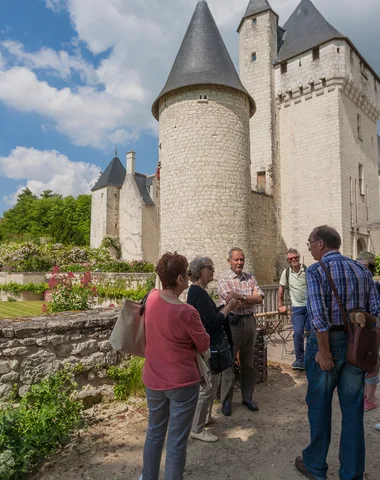
Présentation du Château du Rivau
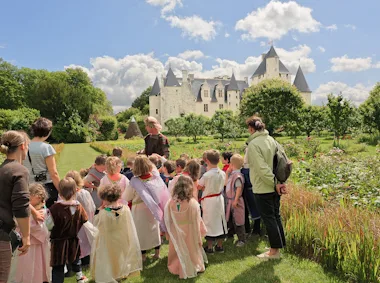
Visite Il était une fois la vie de château du Rivau

Conte musical « La Reine de cœur »
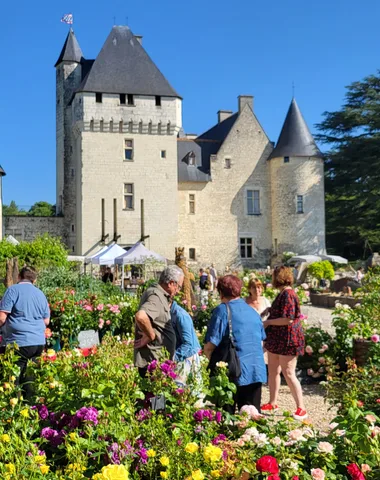
Fête des Roses

Le Goût des Jardins (6-10ans)
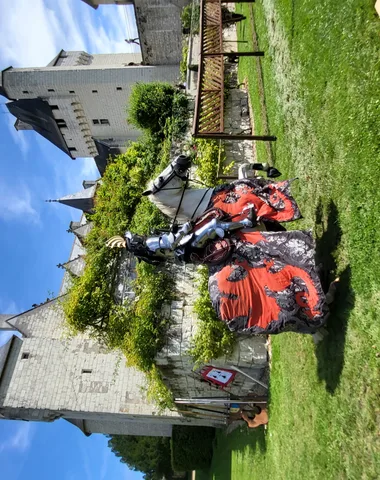
Joutes Equestres du Château Rivau

Fête de la citrouille et de l’automne au Château du Rivau
- Réservable en ligne
Le Château du Clos Lucé
Voici un autre des châteaux de la Loire à visiter autour de Tours . Au cœur d’Amboise, le château du Clos Lucé fut la demeure de Léonard de Vinci. Invité en France par François 1er, le génie italien s’installe dans cet élégant château de briques roses en 1516. De ses appartements à ses ateliers de travail restitués, la visite du château du Clos Lucé vous entraine dans l’univers du plus grand génie de la Renaissance. La vaste salle où il recevait ses hôtes, la cuisine où il dégustait les plats végétariens et diététiques préparés par sa servante Mathurine, ou sa chambre avec vue sur le château royal d’Amboise, les lieux conservent le souvenir du Maître. Au rez-de-chaussée du château, des maquettes et des animations 3D permettent de comprendre l’étendue des recherches de Léonard de Vinci. Parfaitement restitués, ses ateliers de travail expliquent le déroulé d’une journée-type de Léonard de Vinci. Du matin jusqu’au soir, le Maître s’y installait pour travailler à ses projets et études. Des dessins, les outils de l’artiste, sa table des pigments ou la bibliothèque remplie de fac-similés et d’ouvrages anciens attestent de cette ambiance studieuse dans laquelle on peut presque le voir travailler… A l’extérieur du château du Clos Lucé , le Parc Leonardo da Vinci évoque lui aussi les inventions du Maître. La vis aérienne, le pont tournant, le char d’assaut ou encore la roue écureuil ont été réalisés d’après des croquis de Léonard de Vinci. Fabriquées avec les matériaux utilisés à l’époque, ces machines géantes vous invitent à les actionner vous-même ! A leurs côtés, une quarantaine d’immenses toiles translucides s’affichent : portraits, regards, dessins de botanique, d’anatomie ou de génie civil et militaire vous plongent un peu plus dans les différentes études du Maître. Dans le parc, découvrez l’espace culturel et muséographique « Léonard de Vinci, Peintre et Architecte ». Ouvert en 2021, il présente, sur 500 m², les deux facettes majeures de l’œuvre de Léonard de Vinci : Léonard de Vinci peintre et Léonard de Vinci et l’architecture.
Le château royal d’Amboise
Un des incontournables châteaux de la Loire à visiter autour de Tours : demeure des rois de France à la Renaissance, le château royal d’Amboise surplombe la Loire de sa haute silhouette. Du haut de ses terrasses, il offre un panorama exceptionnel sur le fleuve. Le château royal d’Amboise fut la résidence des rois de France aux XVème et XVIème siècles. Il vit aussi grandir les enfants royaux. Né au château, c’est Charles VIII qui ramènera d’Italie les premières influences de la Renaissance. François 1erqui y passa son enfance, s’employa lors de son règne à embellir le château où il séjournait fréquemment. Vainqueur des campagnes d’Italie, grand amateur d’art, le mécène s’entourera de nombreux artistes. Parmi eux, Léonard de Vinci qu’il invita en France et qu’il logea au château du Clos Lucé, à quelques pas du château royal. Le château royal d’Amboise propose plusieurs formules de visites pour partir à sa découverte. Visite immersive avec l’Histopad, visite guidée ou visite libre, visite pour les familles… Elles vous invitent à parcourir le monument, des appartements royaux à la grande salle du Conseil. L’une de ces visites vous conduira des souterrains au sommet de la tour cavalière des Minimes. La rampe de cette tour permettait en effet aux cavaliers et aux attelages de rejoindre son sommet. De sa vaste terrasse, elle offre une vue imprenable sur le fleuve. Dans le parc, la chapelle Saint-Hubert abrite la tombe de Léonard de Vinci mort au château du Clos Lucé le 2 mai 1519. Au pied du château, le jardin de Naples rappelle les origines italiennes du premier jardin réalisé par Dom Pacello de Mercogliano. Ce moine jardinier napolitain fut appelé par Charles VIII pour aménager les extérieurs du château royal d’Amboise à la fin du XVème siècle. Aujourd’hui, avec ses pots de terre cuite qui délimitent de vastes parterres, ce jardin emporte ses visiteurs dans une ambiance italienne qui rappelle celle des villas médicéennes. Découvrir le château royal d’Amboise lors d’une visite immersive ? C’est possible ! Histopad en mains, vous vous déplacez dans des bâtiments aujourd’hui disparus. Vous découvrez comment le logis royal a été réaménagé. Des chefs d’œuvre, désormais exposés dans les musées du monde entier, retrouvent leur place initiale. Et vous faites des rencontres étonnantes comme celles des rois qui ont fait l’Histoire de France et celle du château !
Découvrez tous les événements du château royal d’Amboise !

Voyage dans l’univers du film Léo et des grands bonheurs minuscules
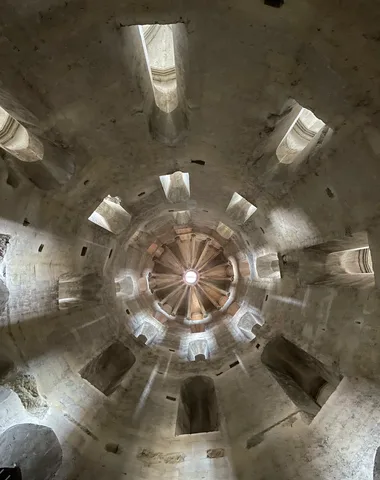
Visite guidée dans les coulisses de l’histoire au Château royal d’Amboise
- Réservation obligatoire
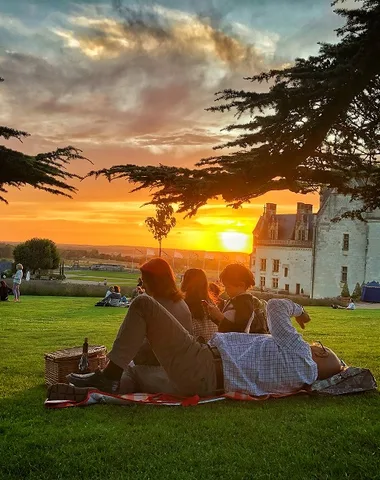
Soirées Pique-niques panoramiques au château Royal d’Amboise

Journées tellement royales au château Royal d’Amboise

Déambulation nocturne « Amboise, destinées royales »
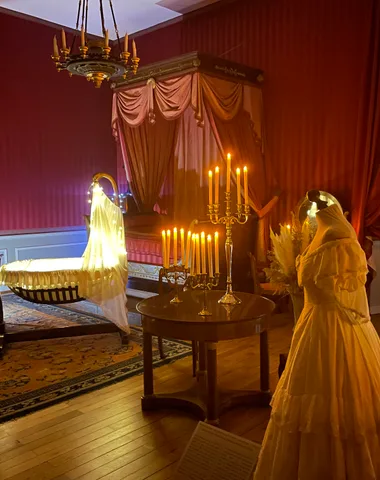
Balade nocturne aux chandelles au château royal d’Amboise
La forteresse royale de Chinon
Du haut de l’éperon rocheux sur lequel elle s’appuie, la forteresse royale de Chinon domine la Vienne. Derrière ses longs remparts, cette forteresse millénaire a bien des histoires à raconter… Composée de trois châteaux principaux : le fort Saint-Georges, le château du Milieu et le fort du Coudray, la forteresse royale de Chinon est entourée de remparts derrière lesquels elle accueillit de nombreux hôtes. Henri II Plantagenêt, roi d’Angleterre et époux d’Aliénor d’Aquitaine meurt à la forteresse en 1189. Quelques années plus tard, le grand maître de l’ordre des Templiers, Jacques de Molay y est emprisonné ainsi que trois autres hauts dignitaires. La tour du Coudray conserve sur ses murs leurs graffitis gravés dans la pierre. En 1429, au moment de la guerre de Cent ans, c’est à Chinon que Jeanne d’Arc vint rencontrer Charles VII. Les visiteurs peuvent notamment découvrir la chambre d’Henri II Plantagenêt et d’Aliénor d’Aquitaine. Une reconstitution minutieuse composée de sièges royaux, coffres, table et lit royal recouvert de soie sauvage, de fausse fourrure et d’un tissu du XIIème siècle conservé au Musée d’Art et d’Histoire de Chinon. Elle a beau être millénaire, la forteresse royale de Chinon vous propose une visite à la pointe de la technologie ! Avec l’Histopad, remontez le cours du temps…, vous êtes en immersion au cœur de la forteresse et de son histoire. Des reconstitutions 3D à 360° vous ferons découvrir des salles transformées ou disparues. Bricole, trébuchet, canons… vous manipulerez des engins de guerre. Vous visiterez virtuellement les galeries souterraines du fort du Coudray. Une visite ludique pour toute la famille. Dispositif inclus dans le droit d’entrée du château, sans supplément. 5€ pour les personnes bénéficiant de la gratuité à l’entrée du site.
Découvrez tous les événements de la forteresse royale de Chinon !
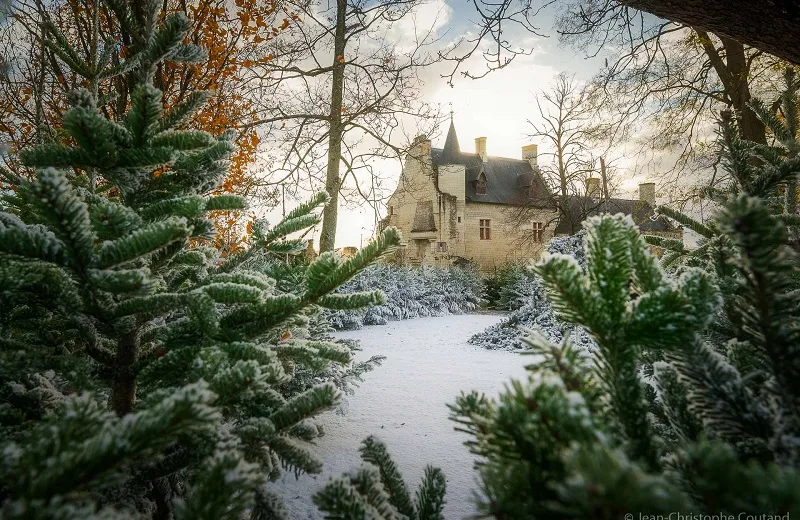
Noël au pays des châteaux – Le noël d’une reine
Le château et les jardins de Villandry
Près de Tours, le château de Villandry est le dernier des grands châteaux construits sur les bords de Loire. A ses pieds, ses emblématiques jardins en terrasse dévoilent tout l’art des jardins à la Renaissance . Une promenade au grand air au fil de ces espaces de verdure colorés ! L’élégante silhouette du château de Villandry fut construite par Jean Le Breton, Ministre des finances de François 1er. Quelques siècles plus tard, Joachim Carvallo, arrière-grand-père de l’actuel propriétaire, achète le château. Avec son épouse Ann Coleman, il entreprend d’impressionnants travaux afin de redonner aux lieux ses splendides jardins Renaissance à la française. Parmi eux, le jardin potager est sans aucun doute le plus emblématique des jardins du château de Villandry . Ses neuf carrés de taille identique forment une palette colorée qui évoluent au fil des saisons. Fleurs et légumes s’y mélangent harmonieusement grâce à l’équipe de jardiniers du château. A côté de ce damier de couleurs, d’autres jardins vous attendent. Au pied du château, les salons du jardin d’ornement déclinent l’Amour et la Musique. Un peu plus loin, entouré de vastes pelouses le miroir d’eau offre une promenade romantique. Quant au jardin du Soleil, installé sur la plus haute des terrasses il a été réalisé d’après des dessins de Joachim Carvallo. Précurseur, Laurent, le chef-jardinier des jardins du château de Villandry , a depuis longtemps mis en place le bio. Les insecticides et fongicides chimiques ont été bannis. Désormais, dans les jardins, de nouveaux insectes se sont installés et ce sont eux qui combattent les insectes nuisibles. Les outils anciens ont également fait leur réapparition comme la grelinette, la poussette ou le paroir. Une initiative qui a plu aux oiseaux qui se sont approprié les lieux. Le Château de Villandry fait désormais partie du réseau refuge LPO (Ligue de Protection des Oiseaux).
Le château d’Azay-le-Rideau
Le château d’Azay-le-Rideau était comparé par Balzac à « un diamant à facettes serti par l’Indre ». Et pour cause, la délicate silhouette de ce château Renaissance se reflète dans le paisible miroir d’eau qui l’entoure. Acheté au XVIème siècle par Gilles Berthelot, trésorier des finances du Roi François 1er, le château d’Azay-le-Rideau est un bijou de la Renaissance. Une restauration de grande ampleur lui a récemment permis de retrouver tout son éclat. On est séduit par ses décors délicats, par ses façades en pierre de tuffeau et par ses tourelles surmontées de toits d’ardoises.
A la Renaissance, c’est une femme, Philippe Lesbahy épouse de Gilles Berthelot, qui prend en main les travaux du château d’Azay-le-Rideau . A l’étage, sa chambre vous emmène au temps de la Renaissance. La totalité des murs y ont été tapissés de joncs tressés en utilisant les savoir-faire de la Renaissance. Cette technique permettait de conserver la chaleur dans des pièces alors très difficiles à réchauffer. Quelques siècles plus tard, la famille de Biencourt, passionnée d’art, prendra elle aussi soin du château qui a souffert des tourments de la Révolution. Le grand parc à l’anglaise qui entoure le château et ses allées de promenade seront dessinés à leur demande. Au rez-de-chaussée du château, le « Salon des Biencourt » vous plonge dans l’atmosphère feutrée et le savoir-vivre du XIXème siècle.
- Des visites ludiques et familiales : à l’occasion des vacances scolaires, le château d’Azay-le-Rideau propose un large éventail d’animations pour petits et grands. Des visites qu’on partage en famille pour découvrir le château d’Azay-le-Rideau et son histoire tout en s’amusant !
- Faites une pause gourmande au Lavoir, le restaurant/salon de thé du château. Après avoir flâné dans le parc et les jardins, installez-vous sur sa terrasse le temps d’un moment. Vous profiterez d’un rafraichissement ou bien de mets élaborés à partir de produits locaux, frais et de saison.
Thématiques
- Châteaux & jardins
- Sorties & activités
Ce contenu vous a été utile ?
- 1 Ce contenu vous a été utile
- Ce contenu ne vous a pas été utile
- Enregistrer
Merci d’avoir pris le temps de nous indiquer que ce contenu vous avait été utile. Vos encouragements nous sont essentiels, et vos retours nous permettent de nous améliorer.
Merci d’avoir pris le temps de nous indiquer que ce contenu ne vous avait pas été utile. Nous en sommes désolés.
Partager ce contenu
- Partager sur Facebook
- Partager sur X / Twitter
- Partager sur WhatsApp
- Partager par mail
Vous aimerez aussi
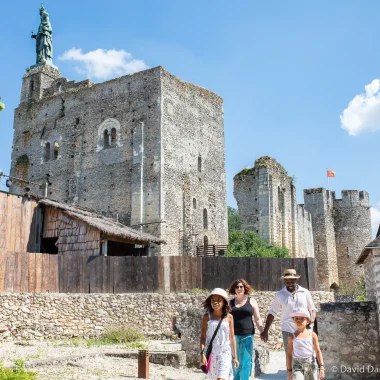
- Châteaux & jardins
- Sorties & activités
Vivez le Moyen-Âge à la Forteresse de Montbazon
Publié le 16 Avr 2024
Temps de lecture : 7 min.
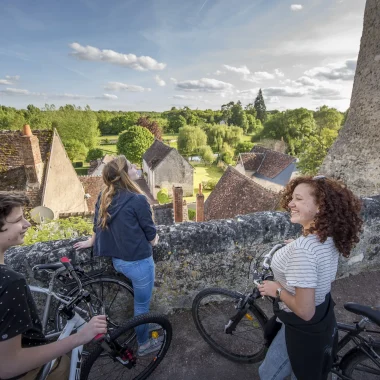
- Villes & villages
A l’assaut des villages et châteaux médiévaux du Val de Loire !
Temps de lecture : 12 min.
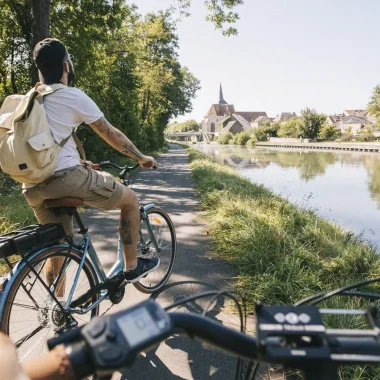
- Idées séjours
Week-ends en Val de Loire : balades à vélo et promenades dans les jardins
Publié le 22 Mar 2024
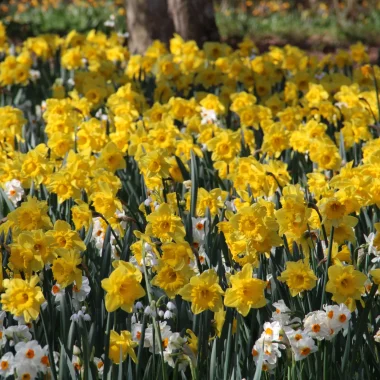
C’est le printemps en Val de Loire, on en profite !
Publié le 08 Mar 2024
Temps de lecture : 5 min.
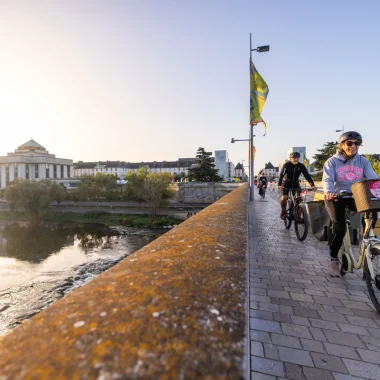
- En mode slow
Le vélo à la fête en Val de Loire
Publié le 07 Mar 2024
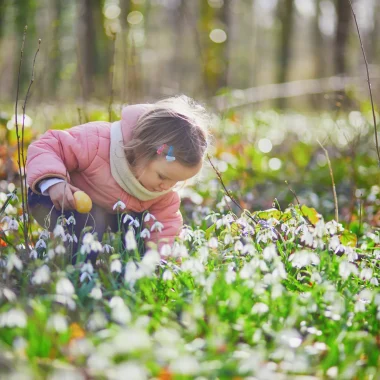
Pâques en Val de Loire
Publié le 06 Mar 2024
Temps de lecture : 6 min.
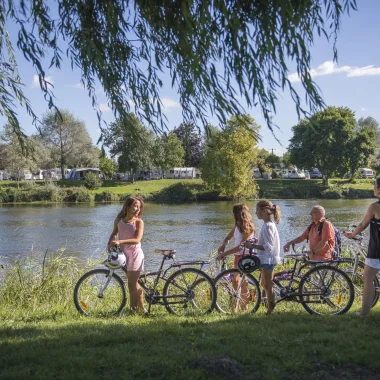
Passez l’été dans un camping en Val de Loire !
Publié le 04 Mar 2024
Temps de lecture : 1 min.
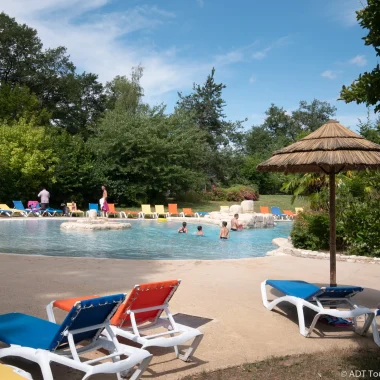
Zoom sur les établissements « Camping Qualité » en Touraine
Temps de lecture : 4 min.
- Skip to primary navigation
- Skip to main content
- Skip to primary sidebar

Flourishmentary
Home + Travel Ideas To Make Life More Beautiful
Travel Guides
Visit The Most Incredible Castles In France With These Chateau Virtual Tours
Taylor - 08/02/2020
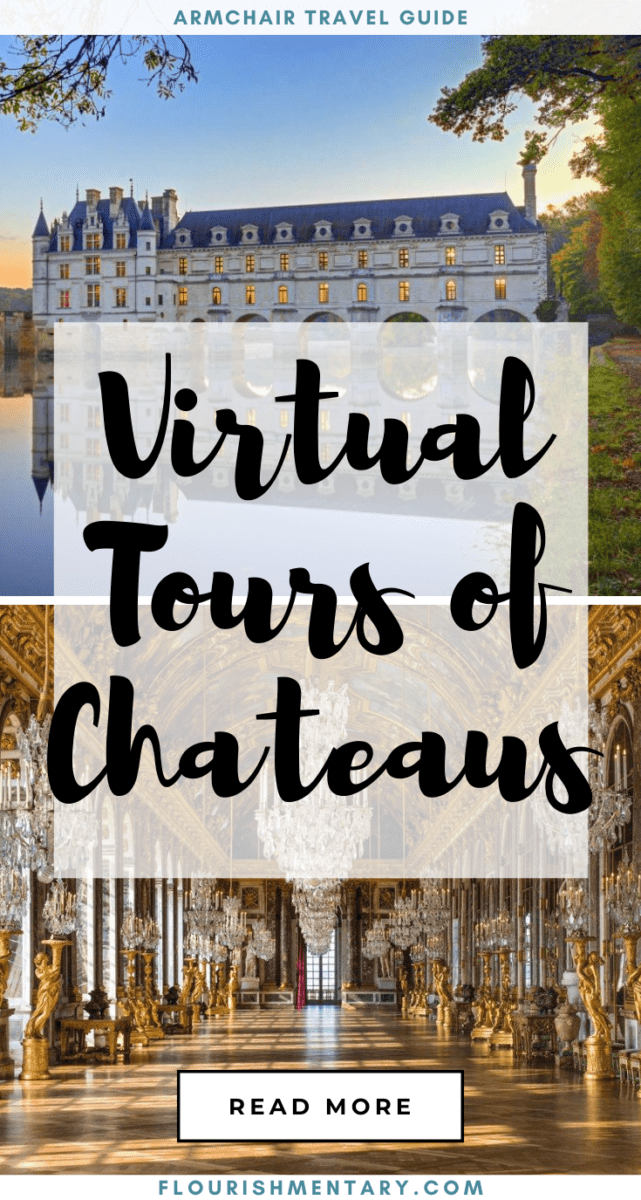
A French Château is one of the most iconic structures on earth. These easily recognizable works of architecture are part of our favorite storybooks and films, and have captivated our imaginations for centuries!
Once known as hunting lodges and country homes, the medieval structures evolved into modern palaces, showcasing the lifestyles of French Royalty & Nobility.
These Châteaux are now crown jewels of French history, welcoming thousands of visitors each year. Guest are able experience firsthand the incredible artistry and imagination of those who conceived, built, and restored these storied estates.
While not all of us are easily able to check them out in person, we are so lucky to have some incredible ways to visit them from home! Take a peek inside the most beautiful palaces on earth with these French Château virtual tours!
These virtual visits will take you inside some of my favorite Châteaus that I have ever visited, and a few that are on my bucket list! They’re listed in no particular order, so enjoy your tour of the most beautiful French castles!
1. Château de Chenonceau

Not only is it my favorite of all the Châteaus to pronounce, but this enchanting castle in the famous Loire Valley has had a LOT of strong women at the helm over the years!
Also nicknamed the Château des Dames (Ladie’s Château) these matriarchs made sure this castle had an important place in history. They each played a part in expanding, improving, and restoring the property into the landmark it is today.
One of the most remarkable thing about Chenonceau is the architectural mix of Gothic and Renaissance styles that blend beautifully into the Loire Valley landscape – almost as if it was meant to be there all along!
No wonder the Château de Chenonceau is the second most visited château in France (#1 is on this list, too ?)! Take a peek at the incredible history and interiors with this virtual tour of Château de Chenonceau .
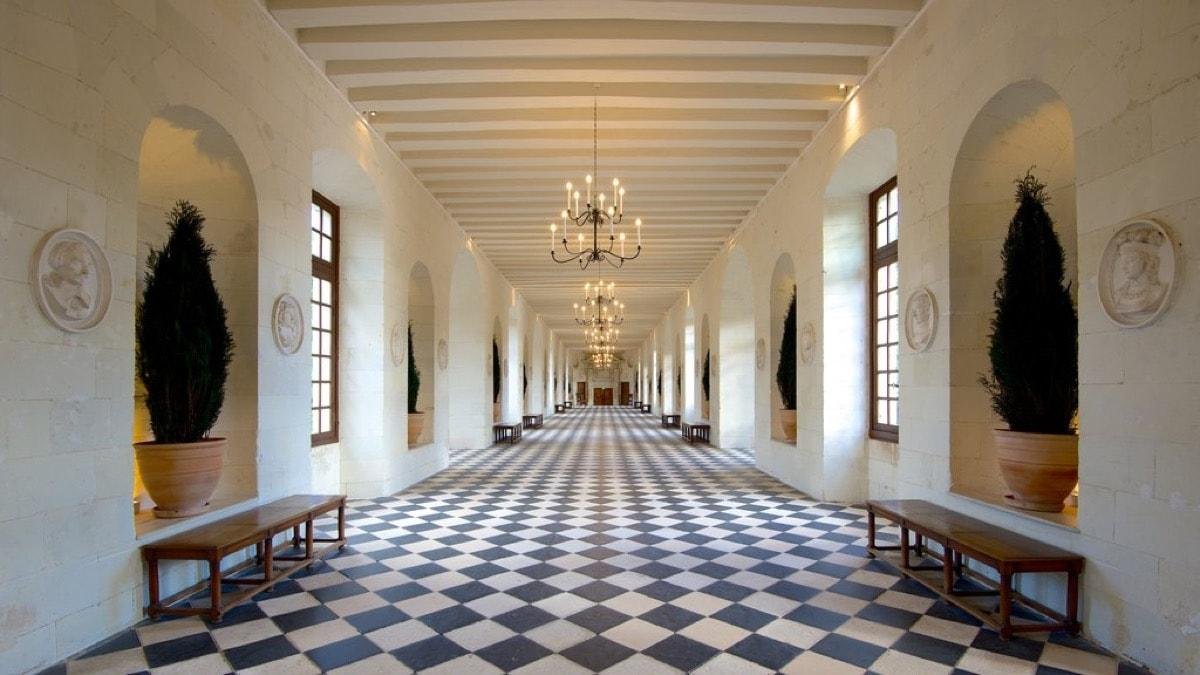
2. Château de Chambord
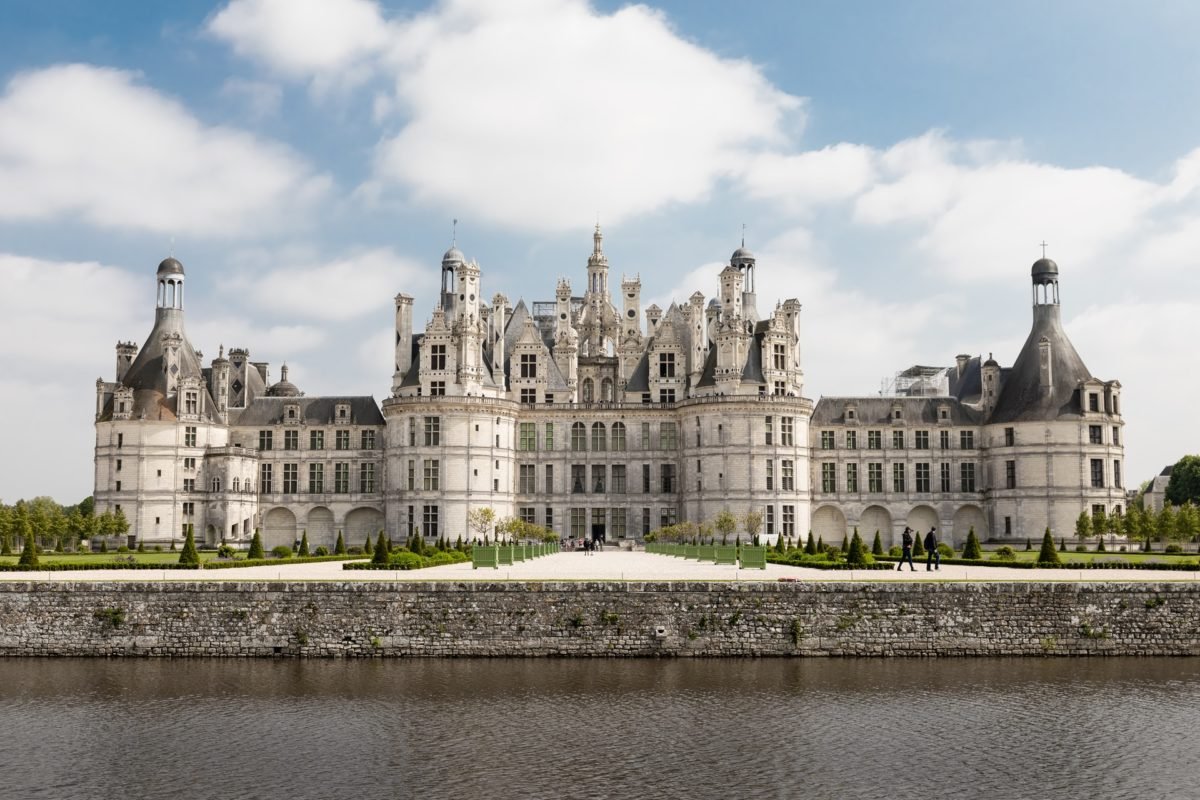
Another gem of the Loire Valley is the breathtaking Château de Chambord.
It’s one of the most recognizable castles in the world, with its distinctive French Renaissance style, and it’s the largest one in the country.
If this facade looks a little familiar, it’s probably because you’ve seen it before! Château de Chambord served as major inspiration for the classic Disney film: Beauty and the Beast .
My favorite thing about the Château is the incredible double helix staircase, unlike any other on earth. The fascinating design is attributed to Leonardo Da Vinci, and allows two people to use the staircase at the same time, without ever seeing one another!
Take a look inside with the breathtaking castle yourself this virtual tour of Château de Chambord .
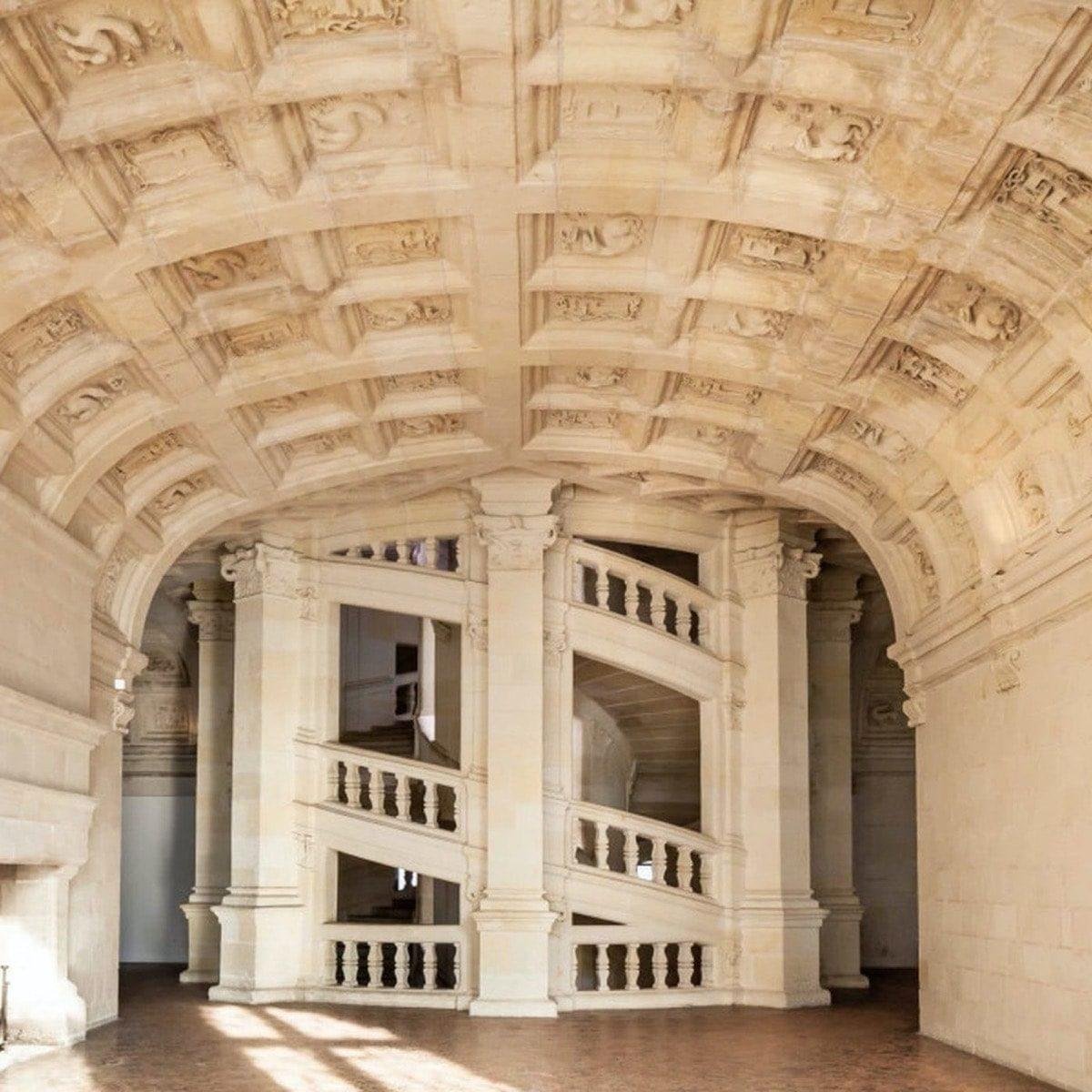
3. Château de Fontainebleau
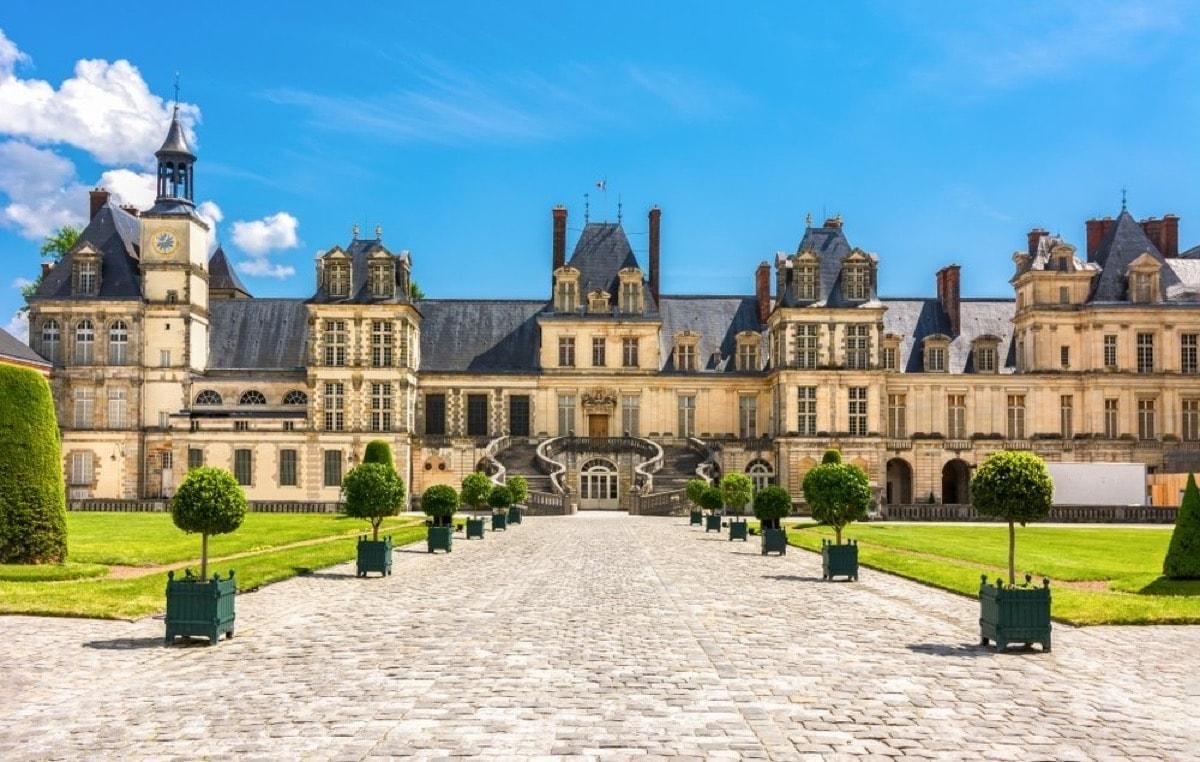
Not far from Paris sits one of the most impressive royal estates in France, the Château de Fontainebleau!
As a longtime lover of dual staircases, the horseshoe shaped entry to Fontainebleau has always had my heart. It’s iconic style made its debut at the castle, and quickly spread out across France to other stately residences.
Once home to famous monarchs like Louis VII and Napoleon III, Fontainebleau also has some of the most lavish and interesting rooms of any French castle.
Take a tour inside the rooms and see the intricate bed created with Marie Antoinette in mind, with this Virtual tour of Château de Fontainebleau .

4. Château de Chantilly
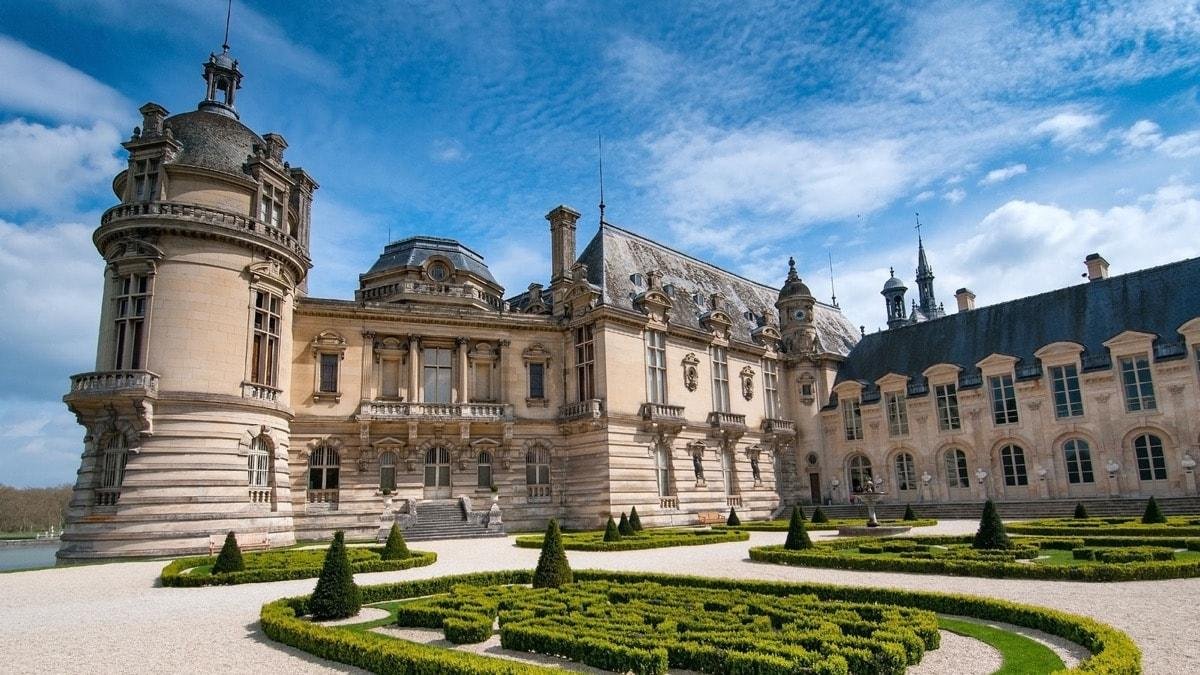
With a storybook setting on a magnificent lake, The Château de Chantilly is one of the most beautifully preserved castles in France.
Prince Henri d’Orléans, Duke of Aumale, was the son of the last King of France and worked to made Chantilly one of the greatest collections of artworks and antiques – of all time.
Today you can peruse the incredible art gallery, and intricately decorated private suites, making this Château one of the finest examples of cultural heritage in France.
Take your own tour inside with this virtual tour of the exterior Château de Chantilly , and check out a tour of the incredible artworks inside .
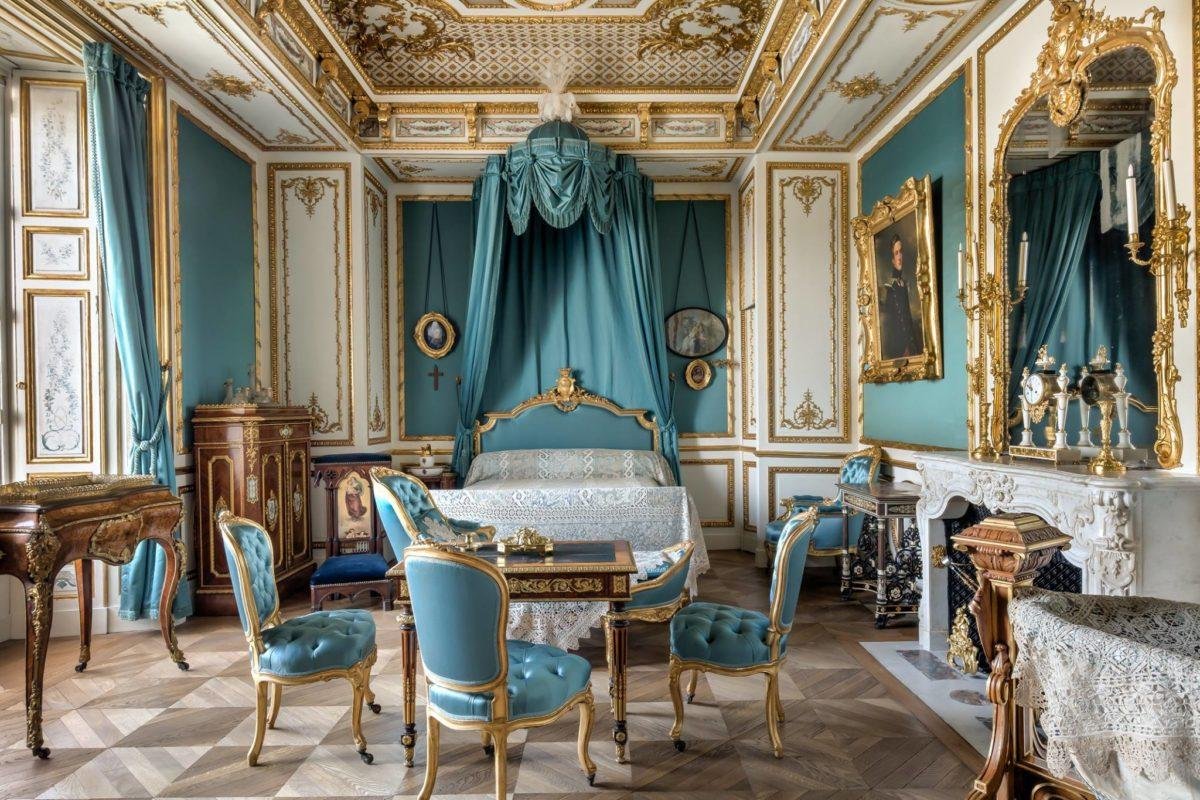
5. Château de Villandry

The last great castle to be built in The Loire during the Renaissance is the incredible Château of Villandry.
Once a medieval fortress, this Château was later transformed into a comfortable royal home, furnished with some of the most unique and beautiful items of the time period.
Villandry is also well known for its breathtaking ornamental gardens, that were designed as an extension of it’s grand salons. Stepping right out onto these beautiful terraces, will lead you to some of the most impressive landscaping anywhere in France.
Take your own tour around the charming estate yourself with this Virtual Tour of Château Villandry .
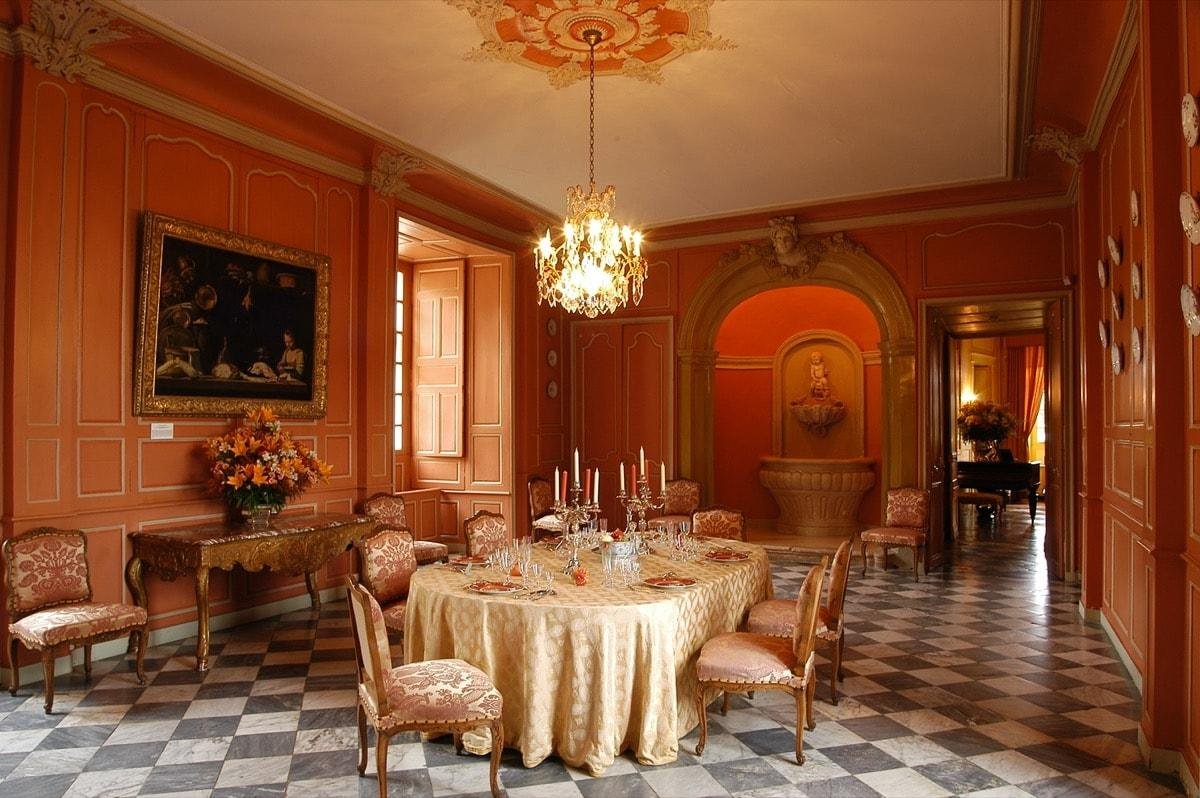
6. Château de Vaux le Vicomte

Château Vaux-le-Vicomte is the spectacular estate that caused envy to everyone around. It was so lavish and intricate- that it sadly caused the demise of its owner. Nicolas Fouquet was the superintendent of finances in France, and he built his dazzling castle to impress the great Sun King Louis XIV.
With cleverly devised symmetry and a grand entrance hall, Château Vaux-le-Vicomte was meant to turn heads. However, Fouquet’s plan really backfired when the celebration he threw in the King’s honor was just a little too impressive.
In the end, his over the top party offended the court, and he was accused of misappropriating french funds. Sadly he was imprisoned until his death, his beautiful estate went on to inspired another great french castle.
Vaux-le-Vicomte was so refined and impressive that The Sun King used it as inspiration to built his own royal Château of Versailles. The unique and creative take on Baroque design was so beloved, that it dominated the architecture scene throughout France for the next 150 years.
Take your own tour around the beautiful Château Vaux-le-Vicomte with this virtual tour .
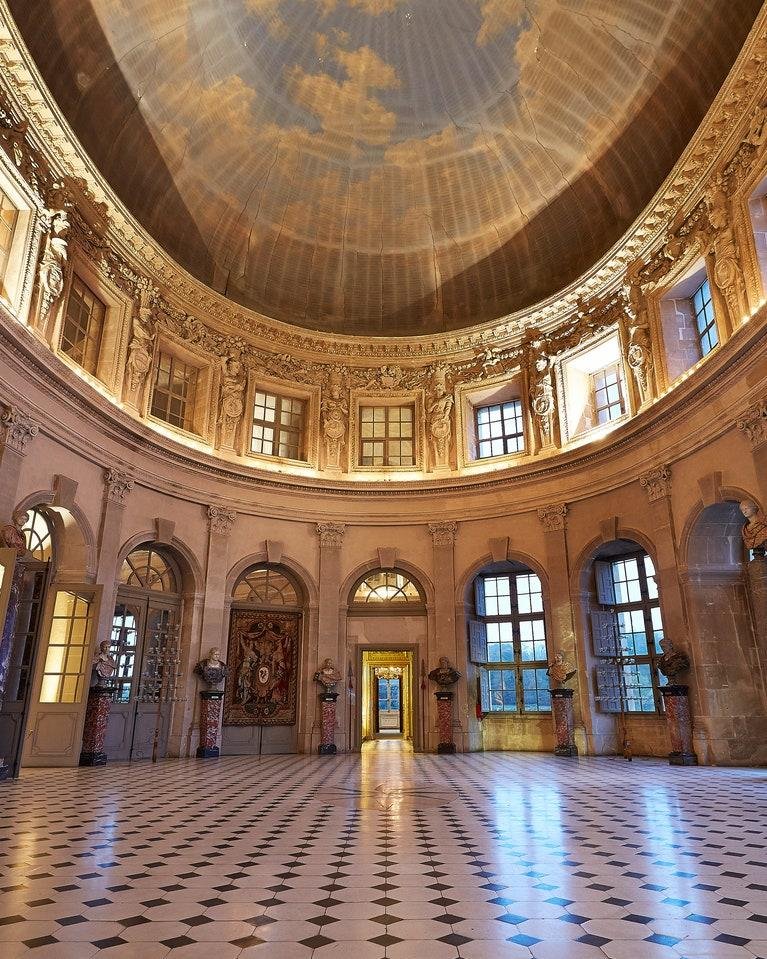
7. Château of Versailles
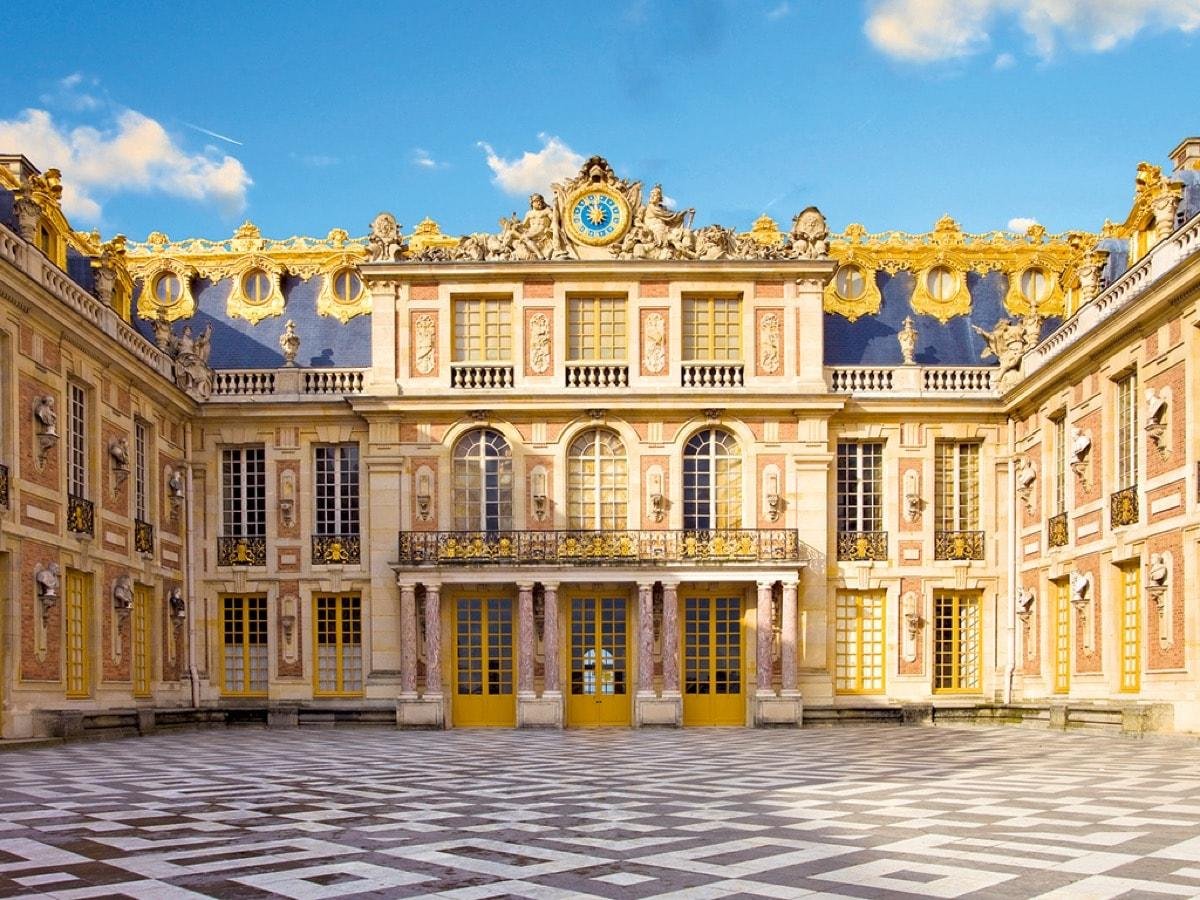
Without further adieu, the grandest of all the Châteaus in France: The Royal Château of Versailles.
Also known as The Palace of Versailles, it’s the most visited Château in France, and one of the most visited World Heritage Sites on earth!
Once a humble hunting pavillion, it now represents one of the greatest achievements in French 17th century art. A succession French kings continued to improve the Palace and transformed it into the most important seat of power in the nation.
Though it was no longer a royal home following the French Revolution, it became the Museum of the History of France, where guests could explore the incredible interiors, and magnificence 800 hectares Royal gardens.
Today, one of the most famous rooms in the Hall of Mirrors! This revolutionary space was the first of its kind, featuring with 357 mirrors arranged in arches opposite the grand windows. Whether sunlight, or candle light, the entire space emits an incredible shimmer that you’ll never forget.
Take a visit to the magnificent Château of Versailles right now, with this virtual tour .
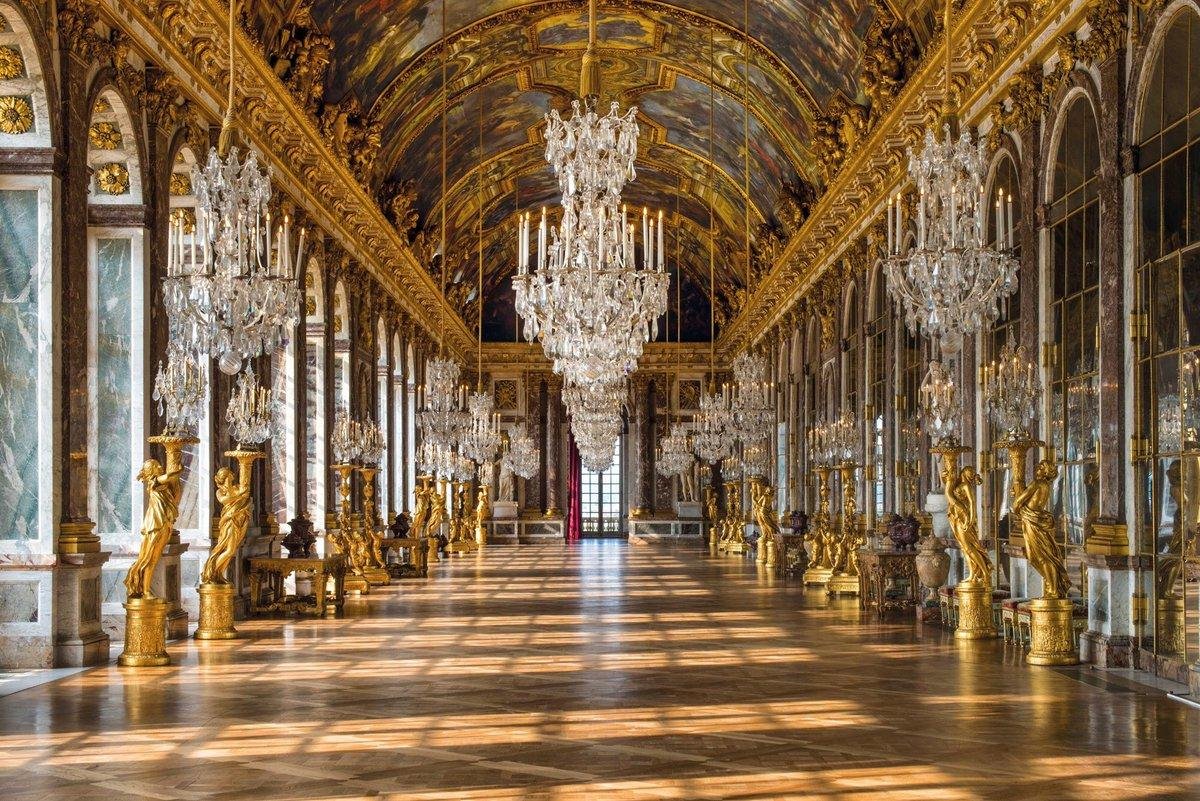
Thanks so much for reading, and I really hope you enjoyed checking out all the beautiful Châteaus in France that you can visit with a virtual tour.
I visited France for the first time during a High School Exchange program, and it really ignited my love for french culture and architecture. I’ve loved sharing my passion for Châteaus with you all on instagram , and uncovering more about these beautiful works of art!
If you’re in the mood to learn more about famous castles and estates, check out these other amazing places of the world you can visit virtually.
- 9 Virtual Castle Tours To Take From Home
- Airbnb Castles In Europe
- TV Shows About Castles & Palaces
- Restoring a Fairytale at Chateau de Lalande
Which of these French Châteaus were your favorites? Let me know in the comments below after you take your virtual tours, and Bon Voyage everyone!
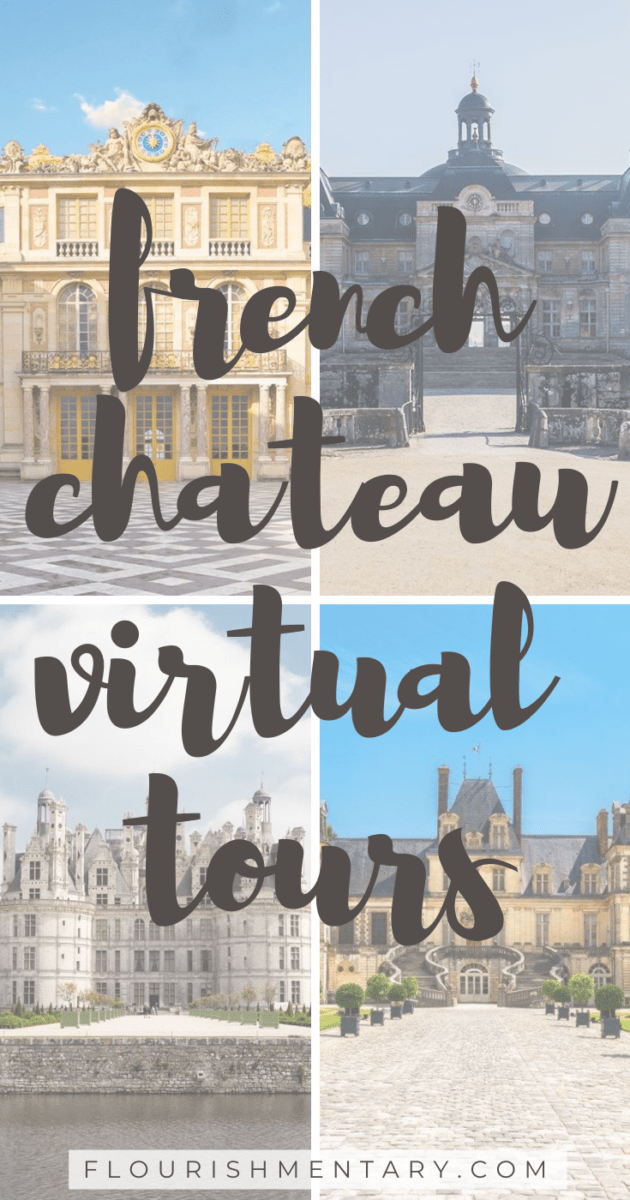
You may also like...
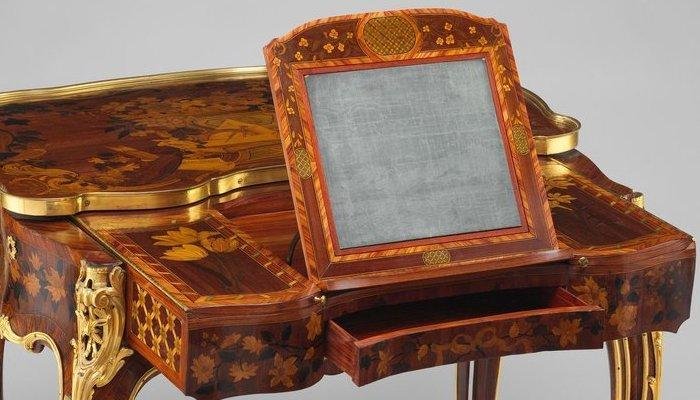
Ciao for now,
Reader Interactions
August 17, 2020 at 5:37 pm
This is one of the best articles I’ve seen on decorating. You present an idea, followed with multiple photographic examples of what you’re talking about, then finished with resources for where to purchase similar items. EVERY decorating article should be written this way. Thank you!
August 24, 2020 at 6:49 am
This article was FABULOUS- lots of tips I’ve never read before. Thank you!!
Share Your Thoughts Cancel reply
Your email address will not be published. Required fields are marked *

8 Beautiful Castles in France That You Can Visit
W ith its many gorgeous castles, France can often feel like a fairy tale. On a simple day trip from Paris or a full castle-hopping itinerary across the countryside, visitors can explore everything from medieval strongholds that have stood the test of time to the elegant Renaissance châteaux dotted across the Loire Valley . Adventures await at these architectural marvels, which are open to the public and offer guided tours, special events, and historical treasures, plus less-expected experiences like winetastings and contemporary art exhibitions. The following eight standouts are especially worth a visit, inviting travelers inside their walls to experience centuries of history, art, and architecture.
1. Château de Chambord
Commissioned by King Francis I, Château de Chambord turned 500 years old in 2019. Its most famous interior feature is a double-helix spiral staircase that twists up three floors, but the grand castle also boasts 426 rooms (guests can peek into 60 of them), 83 staircases, and 282 fireplaces. When visiting, don't forget to look up: Francis used the salamander as his emblem and had it included more than 300 times on the ceilings and walls. Afterward, head outside to explore the formal gardens and surrounding lands, which, at 13,400 acres, make up the largest enclosed park in Europe. The green space is home to stags, wild boar, mouflon (introduced wild sheep), and, yes, the occasional salamander.
2. Château de Fontainebleau
With more than 1,500 rooms and 130 acres of parkland and gardens, Château de Fontainebleau is one of the largest castles in France and the only royal residence to have been continuously occupied for seven centuries; its 36 monarch residents spanned from Louis VII in the 12th century to Emperor Napoleon III in the late 1800s. Today, it's a UNESCO site and national museum, worth an easy day trip from Paris. Take a tour to see the study where Napoleon I once worked and the sublime Francis I Gallery, a showpiece of Renaissance art and architecture that predates the Apollo Gallery in the Louvre and the Hall of Mirrors in Versailles. You can also check out the notable Imperial Theater, three chapels, and many opulent accoutrements. Outside the castle doors, explore miles of trails in the surrounding Forest of Fountainebleau.
3. Château de Chenonceau
The Loire Valley is nirvana for castle lovers, thanks to dozens of châteaux lining the river. It's hard to call one more attractive than the next, but Château de Chenonceau is worthy of all of the praise it gets. The castle owes its existence to prominent women who cared for and restored it, including King Henry II's wife-Catherine de' Medici-and his mistress, Diane de Poitiers. Plot twists aside, a visit here takes visitors through the castle's 11th-century beginnings as a fortress and mill to its transformation into one of the Loire's most picturesque châteaux.
A highlight is the two-story Grand Galerie, which spans the River Cher and houses Flemish tapestries, paintings by Rubens and Tintoretto, and 15th- and 16th-century furnishings. There's also a lunch restaurant and crêperie in the former royal stables and winetastings under 16th-century vaulted ceilings in the old cellar.
4. Château du Haut-Kœnigsbourg
While this 12th-century castle enjoys a strategic position 2,500 feet above the Alsace Plain, it was ultimately looted, burned, and left empty for about 250 years. It wasn't until the early 20th century that the château was restored at the order of Kaiser Wilhelm II. Less than an hour from Strasbourg, the mountaintop Château de Haut-Koenigsbourg is easy to spot from the road, especially given its pink sandstone facade. It's also ideally located along the Alsace Wine Route . The panoramic view is worth a visit alone-on clear days, you can see everything from castles on nearby peaks to the Alps and the Black Forest in Germany.
If the castle looks familiar, you may recognize it from various pop culture moments: It was prominently featured in Jean Renoir's 1937 anti-war masterpiece La Grande Illusion , influenced the design of the Citadel of Minas Tirith in Peter Jackson's The Lord of the Rings trilogy, and inspired Japanese animator Hayao Miyazaki during the creation of his Howl's Moving Castle .
5. Château de Biron
Among the more than 1,000 châteaux in the Dordogne region of southwestern France, the imposing, 12th-century Château de Biron is one of the biggest. Not far from the appealing bastide town of Monpazier, the castle dominates the tiny village of Biron with its 12th-century keep, chapel, Renaissance apartments, and impressive vaulted kitchens. The Gontaut-Biron family owned the château for 24 generations before selling it to the state in 1978. Today, visitors can stop in to see rotating contemporary art exhibitions, concerts, and theatrical productions, plus sweeping views over the Périgord countryside.
6. Château de Couches
A short drive from Beaune, this symbol of the Middle Ages towers over the Burgundy countryside and vineyards, reminding visitors with its crenellated towers, 12th-century keep, and 13th-century walls that it was once among the most important defensive castles in the region. Visitors to the Château de Couches , also known as the castle of Marguerite of Burgundy, can tour the dungeon and Gothic chapel, sign up for winetastings, or attend concerts, workshops, and a popular medieval festival, held annually in July. For families with children, there are costumed guides who lead shortened tours.
7. Château d'Angers
Most châteaux in the Loire Valley are built with tuffeau , a local limestone that lends the buildings an elegant cream or golden-hued appearance. Bucking that trend is this hulking fortress , with 17 semicircular towers and thick walls mostly composed of gray Anjou schist, a coarse, sturdy rock that seems to say, "Keep out." Built in the 13th century, the castle sits atop a promontory overlooking the Maine River that has been inhabited since the Neolithic period and was later used as a strategic settlement site by the Romans.
The building now houses the Apocalypse Tapestry. It was commissioned in the 1370s by Louis I, the Duke of Anjou, and depicts the end of the world as described in the Book of Revelations. When the work was completed, it was nearly 460 feet long; even though about a quarter is now missing, it's still the largest known medieval tapestry in the world.
8. Cité de Carcassonne
A UNESCO World Heritage site since 1997, the Cité de Carcassonne is located in the Occitanie region near France's southern border with Spain and Andorra. It represents the best-preserved medieval walled city on the continent. Gauls, Romans, and Visigoths lived on and fought from this hilltop overlooking the River Aude, although much of the architecture we see today emerged in the Middle Ages, when this was the wild frontier between the kingdoms of France and Aragon.
Within these walls, you'll find such treasures as the Gothic cathedral and the Château Comtal , or Count's Castle, complete with ramparts and crenellations used as firing posts. But you'll also find hotels, bars, galleries, museums, and restaurants serving the local specialty, cassoulet. This is much more of a living, breathing fortified town, like Québec City, than some museum piece. The reason the city is in such pristine condition is thanks to 19th-century French Gothic revival architect Eugène Viollet-le-Duc, who was responsible for restoring such medieval treasures as Notre-Dame de Paris and Mont Saint-Michel.
This article was originally published in April 2019 and was updated in January 2024.
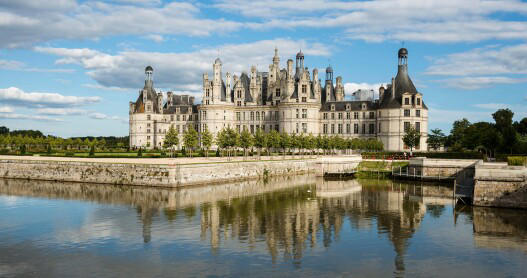
- Art + Culture
- Style + Design
- Discoveries
- Artist Guide
- Creative Minds
- Life Imitates Art
- Real estate
- Galerie House of Art and Design
- Advertising
Follow Galerie
Sign up to receive our newsletter.

10 of the Most Magnificent Châteaux in France
Tour the most ornate castles worth dreaming about visiting right now.
While Paris might be one of the biggest draws to France, the countryside and its stately manors stand their own ground, too. From the 15th to the 18th centuries—during the country’s Ancien Régime— noble families hired the top architects of the day to design ornate châteaux, sometimes as a permanent residence and sometimes as a vacation home or hunting lodge. Today, many of these elaborate palaces have been preserved, designated as landmarks, and transformed into museums. Here, we round up ten of the most beautiful châteaux in the country.
Château de Chambord
In the 16th century, King Francis I commissioned architect Pierre Nepveu to build this 200,000-square-foot château —the largest in the Loire Valley—as his private hunting lodge. Designed in the French Renaissance style, the enormous palace, which boasts 335 fireplaces, was a symbol of his wealth and achievement. Its iconic double-helix grand staircase was inspired by Leonardo da Vinci.
Château de Chenonceau
Built over the Cher river, the Château de Chenonceau as it’s seen today was built in two phases by architects Philibert de l’Orme and Jean Bullant in the mid-16th century. Original construction was overseen by Katherine Briçonnet, the wife of Thomas Bohier, Chamberlain of Charles VIII, while Henry II’s mistress Diane de Poitiers oversaw the second phase. Over the centuries, the palace became the property of a number of notable women, including Catherine de’ Medici.
Recommended: 8 Former Palaces Turned into Luxury Hotels
Château de Versailles
Versailles might be an obvious choice for this list, but there’s no denying that it’s one of the most stunning palaces not just in France, but in the entire world. Though Louis XIV brought the château to its highest levels of grandeur during the second half of the 17th century, it was Louis XIII who originally built a much more modest hunting lodge on the site, some 40 years earlier.
Château du Champ de Bataille
While many of the grandest French châteaux are located in the Loire Valley, this mid-17th-century palace is in Normandy. After interior designer Jacques Garcia purchased the property in 1992, he began restoring the château’s extraordinary gardens, and while they are still a work in progress, they have been named one of the Notable Gardens of France by the French Ministry of Culture.
Château de Fontainebleau
This palace was a royal residence for eight centuries, housing heads of state from Louis VII to Napoleon III. The first castle on the site was built in the 12th century, but only the donjon, which houses the King’s apartments, remains from that original structure. Architect Gilles le Breton expanded the château under Charles VI, while subsequent expansions occurred under Henry II, Henry VI, and Louis XIII.
Recommended: Your Ultimate Guide to Buying a Classic French Château
Château de Valençay
Construction on this château, in the region of Berry, began in the mid-16th century by French lord Jacques d’Étampes de Valençay, but it wasn’t completed until the 18th century. Napoleon’s foreign minister, Charles Maurice de Talleyrand, inhabited the palace during the early 19th century. The château exhibits a combination of Renaissance and French Classical architecture.
Château d’Ussé
Rumored to have been author Charles Perrault’s inspiration for the castle in The Sleeping Beauty, as well as Walt Disney’s inspiration for his animated castles, this château has a long history. While the original fort on the estate was built in the 11th century, the castle was rebuilt in the 15th century, with expansions and renovations occurring over the next two centuries.
Château de Villandry
Jean Le Breton purchased these lands in the 16th century and built the château around a former 14th-century fort. Today, the palace is known for its Renaissance gardens, which were restored by Joachim Carvallo, who purchased the estate in 1906. The Carvallo family still owns the château and continually improves the gardens.
Recommended: Tour Russell Page’s Most Magnificent Gardens, from England to Italy
Château de Vaux-le-Vicomte
Architect Louis le Vau, landscape architect André le Nôtre, and decorator Charles le Brun collaborated on this baroque château for Nicolas Fouquet, Marquis de Belle Île, who served under Louis XIV. The trio would later go on to design the Château de Versailles for the king.
Domaine de Chantilly
This château, located less than an hour outside of Paris, comprises two connected buildings: The Grand Château and the Petit Château. In 1484, the property was inherited by the Montmorency family—architect Pierre Chambiges built the two châteaux for Anne de Montmorency in the 16th century. The original Grand Château was destroyed during the French Revolution and rebuilt by Henri d’Orléans in the mid-19th century. Today it’s home to the Musée Condé , an art museum.
More from Galerie

The Colony Hotel Dazzles with a Fresh Design in Celebration of Its 75th Anniversary
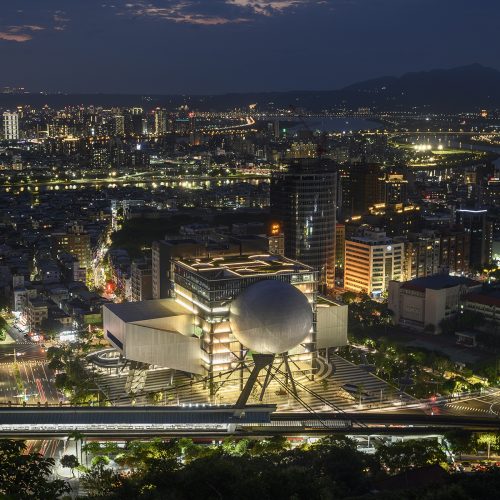
OMA Conceives a Futuristic Performing Arts Center in Taiwan
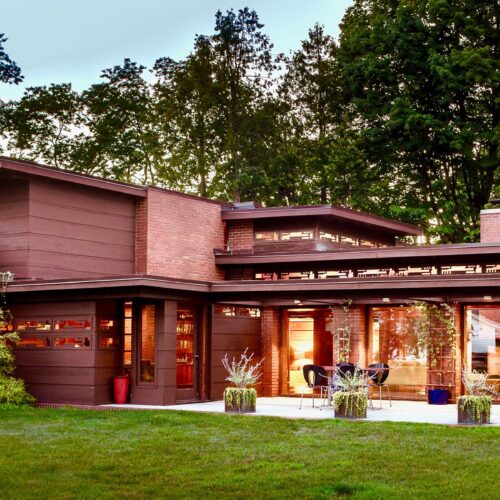
A Beautifully Preserved Frank Lloyd Wright Masterpiece in Wisconsin Lists on Airbnb
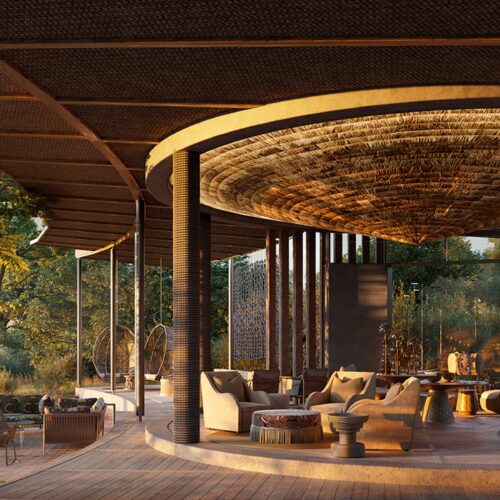
The 12 Most Anticipated Hotels Opening in 2022
Live artfully with curated stories straight to your inbox.
Sign up for the Galerie newsletter
Sign up to receive the best in art, design, and culture from Galerie

Mercredi 17 avril Fête des Anicet
- L’actu chez moi
- Radio musicale
- JO Paris 2024
- 80 ans de la Libération
- Vie quotidienne
- L’horoscope
- Jeux et concours
- L’agenda des sorties
- Recettes de saison
- Marchés et circuits courts
- Newsletters
Sancerre : Vasarely crée l'évènement pour sauver la tour des fiefs
- Michel Benoît
- France Bleu Berry
C'est l'un des évènements de la saison touristique dans le Cher : l'ouverture, ce mercredi du château de Sancerre au public, avec un ambassadeur de renom international. Le nouveau propriétaire des lieux accueille une exposition consacrée à Victor Vasarely.

Victor Vasarely a inventé l'art optique . Une trentaine de ses oeuvres sont exposées au château de Sancerre jusque fin septembre. Tous les bénéfices seront reversés à l'association des amis de la Tour des fiefs pour la rénovation de cet emblème de Sancerre.
La fondation Vasarely a accepté quasiment immédiatement de prêter ses oeuvres, séduite par des lieux exceptionnels : " On était au mois d'octobre, se souvient David Chicard, le nouveau propriétaire du château. On avait donc une grande pression puisqu'il a fallu refaire en six mois les jardins, la partie exposition du château, et remettre aux normes la tour des fiefs pour pouvoir accueillir les visiteurs. C'est la seule tour qui subsiste de l'ancien château et c'est le phare de Sancerre."
Une sculpture monumentale de Victor Vasarely vous accueille sur l'esplanade du château que vous atteignez après avoir profité des jardins et du panorama sur la Loire. Entré dans le château, vous êtes ébloui par l'intensité des couleurs et de la lumière : " C'est ce qui a plu à la fondation Vasarely , se réjouit David Chicard. On ne sait pas si on est à l'intérieur ou à l'extérieur. On navigue entre les oeuvres de Victor Vasarely, les jardins, la vue magnifique sur la Loire qu'on domine à environ 350 mètres d'altitude et même beaucoup plus quand on monte en haut de la tour des fiefs où le panorama à 360° est vraiment formidable."
Le mariage entre art contemporain, paysages exceptionnels, et histoire médiévale, est particulièrement réussi. L'objectif est d' accueillir 60.000 visiteurs : " Si on arrive à attirer 60.000 visiteurs, on pourra reverser entre 200 et 300.000 euros à la restauration de la tour des fiefs. L'objectif est de verser l'ensemble des bénéfices à ce chantier, annonce David Chicard. On est ambitieux car Victoir Vasarely mais aussi Sancerre résonnent en France et bien au-delà. On a pour projet d'organiser une grande exposition tous les deux ans. Les prochaines se dérouleront dans les jardins car le château sera transformé en hôtel cinq étoiles. L'ouverture est prévue en 2025. Il offrira une capacité limitée puisqu'on veut en faire un lieu assez initmiste avec seulement huit chambres."
La tour des fiefs est fermée depuis 2020. Les travaux pour la sauver sont estimés à 720.000 euros. Il faut imperméabiliser les murs par l'extérieur pour éviter les infiltrations d'eau qui rongent la pierre.
Ma France : Améliorer le logement des Français
Quelles sont vos solutions pour aider les Français à bien se loger ? En partenariat avec Make.org , France Bleu mène une consultation citoyenne à laquelle vous pouvez participer ci-dessous.
Cher : l'info en continu
Cher : les plus consultés.
Bourges : un jeune de 22 ans gravement blessé à scooter après un refus d'obtempérer
Rues interdites, stationnement gratuit, train à moitié prix : toutes les informations pratiques du Printemps de Bourges
Saint-Pierre-les-Etieux : Une première chaîne de production pour Naofloor

IMAGES
VIDEO
COMMENTS
The Château de Tours is a castle located in Tours, Indre-et-Loire, France . Built in the 11th century, the building displayed an architecture of the Carolingian period, and was the residence of the Lords of France. Until the 2000s, the Royal Castle of Tours was used as an aquarium where about 1,500 fish of 200 different species could be seen.
Tours Castle: access Where to find Château de Tours. In downtown Tours; 25 avenue André Malraux; 3min walk from Cathédrale Saint-Gatien; Access by car and parking. Tours is well served by a number of freeways: the A10 (between Paris and Bordeaux), the A28 (between Rouen and Tours) and the A85 (between Nantes and Bourges).
Tours, France. The Château de Tours was built in the 11th century. The building displayed an architecture of the Carolingian period, and was the residence of the Lords of France. Until the 2000s, the Royal Castle of Tours was used as an aquarium where about 1,500 fish of 200 different species could be seen. It also served as Grévin museum.
25 avenue Andre Malraux, 37000, Tours France. Reach out directly. Visit website Call. Full view. Best nearby. Restaurants. 634 within 3 miles. Les Bartavelles. 232. 0.2 mi $$$$ • French • European • Healthy. ... Château de Tours - All You Need to Know BEFORE You Go (2024) Frequently Asked Questions about Château de Tours.
Château de Tours - Illuminated walking experience. Tours, a beautiful city in France. In addition to the built heritage, large green spaces perfectly enhance the french city. Designed in the 19th century and classified as a remarkable garden, the Prebendes d'Oe garden is a perfect example, ...
10:00 AM - 10:25 AM. Basilique Saint-Martin de Tours (Basilica of St. Martin) is dedicated to Saint Martin of Tours, the third bishop of Tours. It was built over the traditional burial site of the saint in the 5th century AD. During the centuries, the small basilica was replaced several times with larger structures.
2. Musée des Beaux-Arts de Tours. Source: saiko3p / shutterstock. Musée des Beaux-Arts de Tours. The riches from Cardinal Richelieu's 17th-century campaign against the Huguenots and the art seized from abbeys during the Revolution all ended up at Tours' stellar museum of fine art.
The Château de Tours stands as a testament to the rich history of the city of Tours and the Loire Valley. Its origins can be traced back to the Roman era, when a fortress was built on the site to defend the strategic crossing of the Loire River. Over the centuries, the castle underwent significant transformations, evolving from a military stronghold to a royal residence.
The city of Tours is one of the oldest cities in France. Located on the river Loire, it is a beautiful city surrounded by several world-famous châteaux that are within an hours drive. It is within 1 hour of several famous châteaux in the area like Château de Chenonceau, Château Royale d'Amboise, Château de Chaumont, Château de Chambord ...
The Château de Tours is a castle located in the city of Tours, France. It was built in the 11th century and has been expanded and renovated several times over the centuries. It served as a royal residence for French kings during the Renaissance period and was also used as a prison during the French Revolution.
Célébrant soixante ans d'échanges diplomatiques entre la France et la République populaire de Chine, « Ombres chinoises. ... Sous l'oeil des diplomates », présentée au Château de Tours du 24 novembre 2023 au 19 mai 2024, met en lumière les oeuvres de deux grands photographes, aujourd'hui conservées dans les Archives ...
Tour Duration: 1 Hour (s) Travel Distance: 1.6 Km or 1 Miles. Château de Tours (Tours Castle) in Tours, France - sight map, attraction information, photo and list of walking tours containing this attraction. Get offline map and directions using our GPSmyCity self-guided walking tours app for your mobile device.
9-day tour of the Loire Valley Chateaux. If you have more time to spare, book instead on to Seventh Heaven, a 9-day tour that offers additions to the 6-day itinerary. Discover the lesser-known town of Richelieu, founded by Cardinal Richelieu, minister to King Louis XIII and chief villain in Alexandre Dumas' book, The Three Musketeers.
Placed on the first list of historical monuments in France in 1840, and a UNESCO World Heritage Site since 1981, Chambord is one of the most amazing constructions of the Renaissance. ... program supported by the Centre-Val de Loire Region and carried out by the Centre d'études supérieures de la Renaissance de Tours. ... CHÂTEAU de Chambord ...
Climb the citadels perched on towering peaks, dip into a fairy tale at a medieval fortress and stroll through refined rooms of Renaissance residences. There are around 45,000 chateaux in France - something to please all tastes. Discover castles, explore royal vegetable gardens that have now become organic farming laboratories, and gardens reinvented as havens of biodiversity. Take a regal tour ...
Located in Tours, the 4-star Château Belmont hotel, tourism residence, and semi gourmet restaurant combine a peaceful and relaxing setting with proximity to the city center. Nestled in the heart of a green park of 2.5 hectares with classified trees and an ornamental pond, Château Belmont Tours offers 65 rooms and suites between the tourism ...
2. Chateau de Fontainebleau. Chateau de Fontainebleau is a ravishing UNESCO site and one of France's must visit chateaux. The rambling chateau boasts 800 years of royal patronage. The NYT calls Fontainbleau "the single greatest assemblage over time of French architecture and decor still in its original state.". It's a rare royal residence that escaped from the war time ravages of the ...
U.S. Phone: (202) 580 - 8732 / Direct number in Europe: +49 171 546 6839. Contact Detail. Explore the charming towns of the Loire Valley and seven of its most magnificent chateaux. Visit Versailles, Fontainebleau, Eiffel and the Seine in Paris.
Entouré de ses 15 jardins de contes de fées, le château du Rivau semble tout droit sorti d'une fable merveilleuse. A quelques kilomètres de Chinon, Le Rivau mêle harmonieusement art, patrimoine, jardins et merveilleux !Un autre château de la Loire à visiter autour de Tours. Avec ses hautes tours, son pont-levis ou ses douves qui l'entourent, le château du Rivau affiche son ...
Our most recommended Tours, France Castle & palace tours. 1. Chenonceau Castle Admission ticket. Enjoy access to Chenonceau site and its wonderful gardens. This unusual castle was built on a bridge across the Cher River. To learn more about castle history, audio guides are available in 16 languages.
Take a tour inside the rooms and see the intricate bed created with Marie Antoinette in mind, with this Virtual tour of Château de Fontainebleau. 4. Château de Chantilly. With a storybook setting on a magnificent lake, The Château de Chantilly is one of the most beautifully preserved castles in France.
1. Château de Chambord. Commissioned by King Francis I, Château de Chambord turned 500 years old in 2019. Its most famous interior feature is a double-helix spiral staircase that twists up three ...
Here, we round up ten of the most beautiful châteaux in the country. Château de Chambord. Photo: Creative Commons. Château de Chambord. In the 16th century, King Francis I commissioned architect Pierre Nepveu to build this 200,000-square-foot château —the largest in the Loire Valley—as his private hunting lodge.
Château de Candé. Coordinates: 47°17′49″N 0°39′56″E. Château de Candé. The Château de Candé is a château located in the commune of Monts, Indre-et-Loire, France. It is situated 10 km (6 mi) to the south of Tours on the north bank of the river Indre .
La tour des fiefs est fermée depuis 2020. Les travaux pour la sauver sont estimés à 720.000 euros. Il faut imperméabiliser les murs par l'extérieur pour éviter les infiltrations d'eau qui ...
Le monument emblématique du quai de la Chaume est en péril. Son sauvetage était au menu du conseil municipal du lundi 15 avril. Ces maux ont été évoqués lors du conseil municipal du lundi ...
Ce lundi 15 avril 2024, lors du conseil municipal des Sables-d'Olonne (Vendée), une délibération a été votée pour assurer le sauvetage de la Tour d'Arundel et du château Saint-Clair.